GEN DE ART
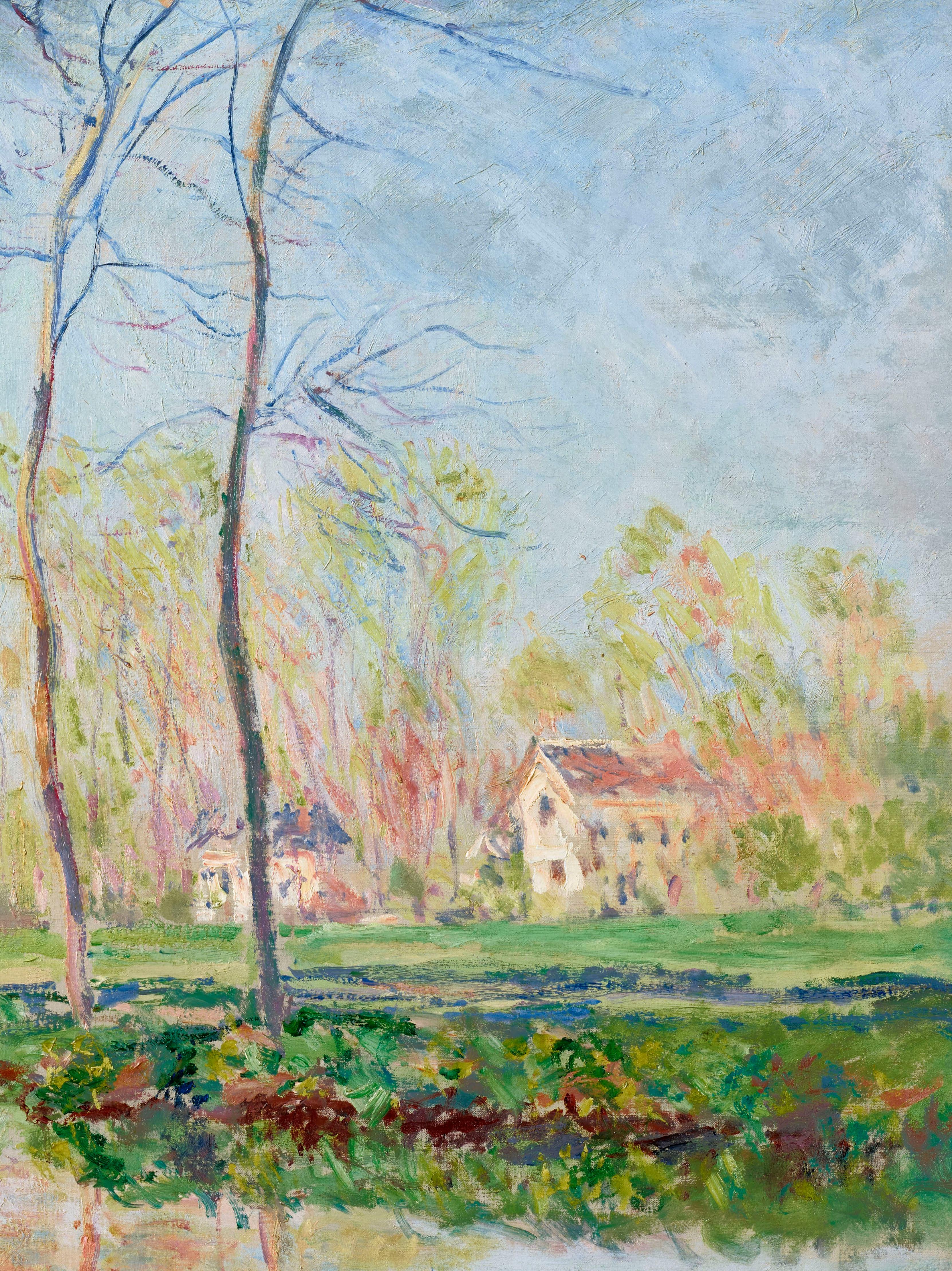


ART BASEL PARIS 2025 アート・バーゼル パリ 2025
Visionaries and Vanguard in Clément Delépine’s Words クレマン・ドゥレピーヌが語る革新と未来
THE 10TH ANNIVERSARY OF BURGUNDY’S “CLIMATS” ブルゴーニュ「クリマ」世界遺産10周年記念式典より A Living Heritage, a Land of Memory 生きる遺産、語り継ぐ風土 05 15 17 25 31
第 3回 TOKYO GENDAI
The “Hana Artist Award” and New Challenges for the Art Fair 「Hana Artist Award」創設とアートフェアの新たな挑戦
YOSHIKI × YOSHITOMO NARA YOSHIKI × 奈良美智
A Global Collaboration at the Crossroads of Art, Music, and Wine アートと音楽、ワインが交差する世界的コラボレーション
THE SINGAPORE MASTERS SHOW
An Elegant Dialogue of Art From Giverny to Gridlock ジヴェルニーからグリッドロックへ 優雅な美の対話
Tokyo Fine Wines and Spirits Association
39 47 51 55 59 65 73 79 85 93
DOMAINE LEFLAIVE
Brice de La Morandière on Climate, Terroir, and Legacy ブリス・ド・ラ・モランディエールが語る、気候、テロワール、そして継承
Wine as Music, Nature as Artist ワインは音楽に、大自然は芸術家に
DOMAINE GROS FRÈRE ET SŒUR
Burgundy’s Legacy in Every Glass 一杯に宿るブルゴーニュの伝統
DOMAINE MÉO-CAMUZET
The Young Artists’ Prize ドメーヌ・メオーカミュゼと若手アーティスト賞
MUSIQUE & VIN AU CLOS DE VOUGEOT 2025
An Eight-Day Dialogue of Sound and Terroir 音楽と風土が響き合う八日間
MIWA KOMATSU IN CONVERSATION WITH GEN DE ART
Sensing Burgundy at Art Basel Basel 2025 Exchange Circle 小松美羽、祈りと自然を語る特別対談
GENEVA WATCH DAYS 2025
When Watches Become Culture 時計が文化になるとき
ETSU EGAMI 江上越
OAR Contemporary Art Museum Opening Exhibition “Echoes of the Earth" 開館展「大地の響き」を開催
LE RICHEBOURG HOTEL, RESTAURANT & SPA ル リシュブール ホテル, レストラン&スパ
Burgundy’s Contemporary Elegance ブルゴーニュに宿る現代の優雅さ
VOSNE-ROMANÉE CULTURE AND ART CENTER ヴォーヌ・ロマネ文化芸術センター
Where Terroir Becomes Culture 風土が文化となる場所
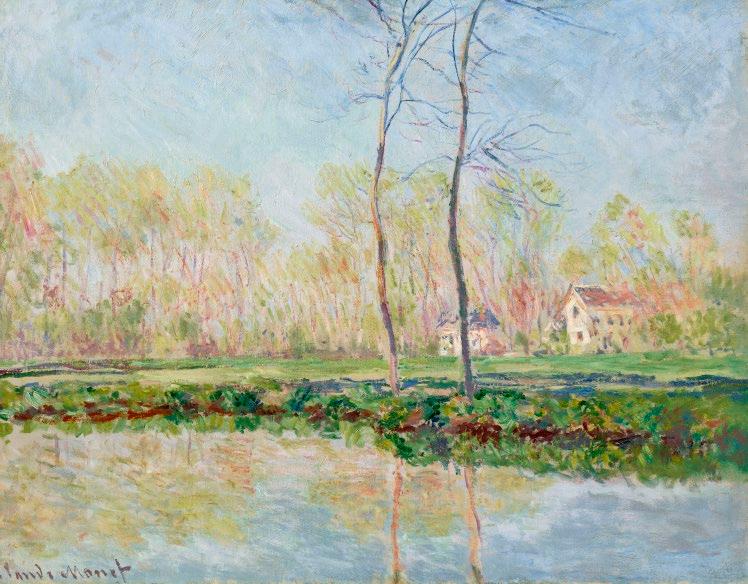

Palais
October 24 - 26, 2025

When the doors of the Grand Palais open this October, Art Basel Paris 2025 will present more than a fair— it will offer a lens into the everevolving dialogue between tradition and innovation, Paris and the world.
Under the artistic direction of Clément Delépine, the fair has positioned itself not only as a premier art market event but as a living platform for exhibitions that engage with cultural responsibility and historical context.
“While we are not an institution,” Delépine emphasizes, “Art Basel has an institutional responsibility to expand the conventional art historical canon.”
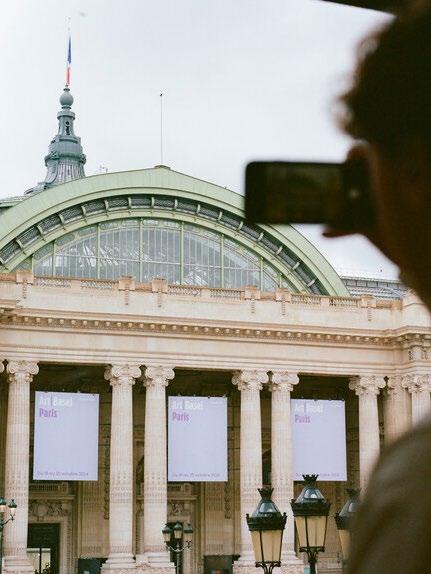
2025年10月、世界のコン テンポラリーアートの焦点が 再びグラン・パレに集う。デ ィレクターのクレマン・ドゥ レピーヌの指揮のもと、アー トバーゼル・パリ2025は、 美術市場という枠を超え、歴 史の再考、美学的な挑戦、そ して深い文化対話の場として 進化を続けている。
「私たちは制度そのものでは ありませんが、アートバーゼ ルには美術史の正典を拡張す る制度的責任があります」と ドゥレピーヌは強調する。
This year's edition of the Premise sector marks a confident step forward. With eight new exhibitors and two returning, it has grown into a focal point for critical and curatorial experimentation. Originally launched in 2024, Premise was designed as a space where overlooked narratives and radical pairings could unfold.
“The success of Premise last year confirmed that there’s a real appetite for risk-taking and curatorial depth—even within a commercial setting,” Delépine explains.
This year, expect unexpected conversations: Emily Kam Kngwarray, a pioneering Australian First Nations painter, will be shown alongside American Buddhist monk and artist Alan Lynch at Château Shatto, while Liz Deschenes dialogues with Bauhausera photographer Lucia Moholy at Kadel Wilborn. Returning galleries like Pauline Pavec will present 19th-century works by Marie Bracquemont, while The Gallery of Everything highlights Hector Hyppolite, including rare pieces once owned by André Breton himself.
フェアの中でも特に知的緊張感の 高いセクター、「Premise」は、 今年8つの新規ギャラリーと2 つのリピーターを迎えて帰ってく る。2024年の初登場以来、この セクターはキュレーションの実験 精神を象徴する存在として急速に 注目を集めてきた。
「Premise の成功は、商業的な場 であってもこうしたリスクと深み を求める強い意欲が存在すること を証明しました」と彼は語る。
注目は、オーストラリア先住民画 家エミリー・カム・クングワレイ と、米国のアーティストで仏教僧 でもあるアラン・リンチのペアリ ング、そして19世紀の画家マリ ー・ブラックモンとエクトル・イ ッポリットの作品を通じた歴史的 再発見である。



「パリは背景ではなく、触媒なのです」 とドゥレピーヌは断言する。「歴史と現 代の冒険的表現が交錯する中で、街全体 がフェアの舞台になります」 今年はパレ・ディエナなどでのパブリッ クプロジェクトが展開され、Miu Miuに よるヘレン・マーテンのプロジェクト、 さらにエドワード・エニンフルが会話プ ログラムをキュレーションするなど、フ ァッションとの融合も注目だ。 触媒としてのパリ
単なる舞台ではなく、パリはこのフェア にとって中心的な“登場人物”でもある。
Far from being a mere backdrop, Paris is the fair’s secret protagonist.
“Paris is more than a backdrop – it’s a catalyst,” Delépine states. “With projects across iconic sites and collaborations with cultural partners, our Public Program generates a productive tension between the city’s incredible heritage and daring contemporary interventions.”
This year, the Palais d’Iéna and other landmarks will host public art projects. Fashion takes center stage once again, with Miu Miu presenting a project by Helen Marten, and Edward Enninful, former British Vogue editor-in-chief, curating a day of the Conversations program.
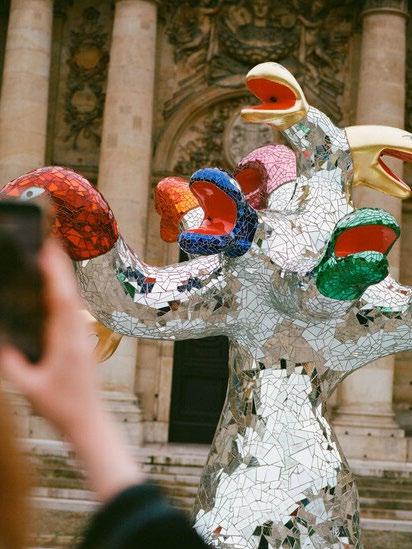

While Art Basel is often associated with prestige and power, Delépine insists its true vitality lies in the connections it nurtures across generations.
"Paris is an incredibly vibrant, diverse, and unexpected city,” he reflects. “It thrives on the fearless spirit of communities and individuals — from radical theater playwrights to alternative cabarets. That environment ultimately spurs the growth of the next generation of creative minds — be they gallerists, artists, or collectors."
City-wide activations—such as those led by Lafayette Anticipations—play a crucial role in expanding this dialogue. By fostering accessible, off-site experiences, Art Basel Paris contributes to shaping a more open and resilient art ecosystem.
“The energy generated during fair week doesn’t belong to us alone,” Delépine reminds us. “It’s shared—across institutions, independent spaces, and galleries. And that shared energy fosters dialogue and builds confidence and connections in the broader scene.”
フェアを超えて次世代の育成
フェア期間中、パリ全体がアート、文化、商業の 生態系と化す。
「このエネルギーは私たちだけのものではありま せん」と彼は述べる。「制度、ギャラリー、独立 スペースに広がり、若手アーティストやギャラリ スト、コレクターにとって貴重な文脈を提供して います」
ラファイエット・アンティシパシオンのようなス ペースによる取り組みも、発見と交流の場を広げ、 未来のコレクション文化を形づくっている。
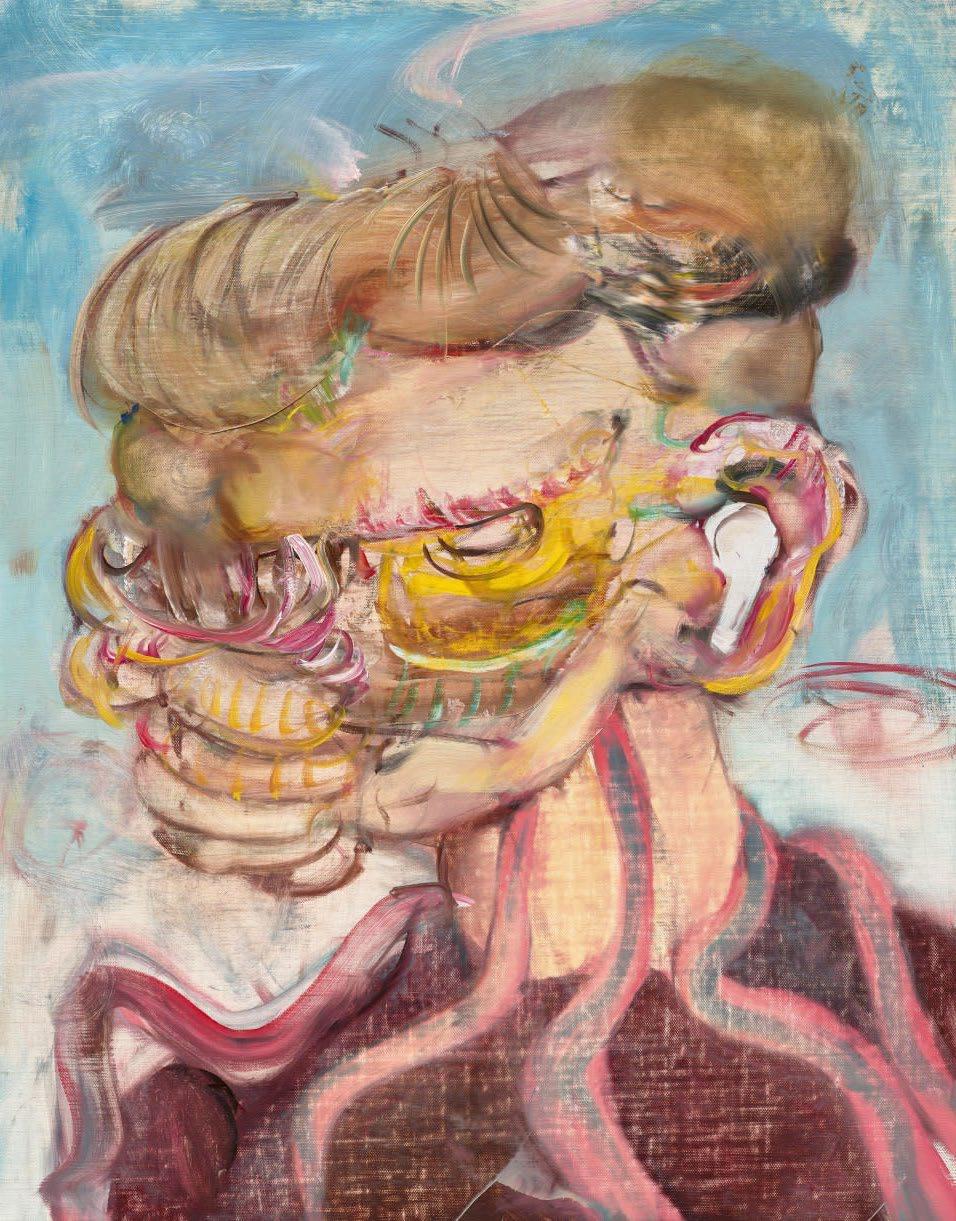
While each edition of Art Basel Paris has its own atmosphere, 2025 will feel especially attuned to the city’s avant-garde legacy. Featured artists span continents and generations— yet all share a common thread: Paris, as a wellspring of inspiration and reinvention.
Visionaries such as Bob Thompson, Emma Reyes, Meriem Bennani, and Sonia Delaunay—artists who found in Paris both refuge and revolution—will be present through institutional partnerships and gallery programming.
“Each of these artists drew from Paris' energy and infrastructure to build a singular, visionary practice. You’ll really be able to feel that as you walk the aisles of the Grand Palais.”
驚きとハイライト
Don’t miss the standout solo presentations: Gala Porras-Kim and Yu Nishimura in the Galeries sector, and Ethan Assouline in Emergence, the sector devoted to rising talents. And for a touch of flair and fun, Oh La La! returns for its second edition.
This year’s theme, À la mode, will be interpreted by galleries and curated by the ever-insightful Loïc Prigent, known for chronicling Paris Fashion Week with wit and depth.
“Plenty of surprises await,” Delépine smiles. “Including the second edition of Oh La La!, taking place on the Friday and Saturday of the show week, where our galleries will present their interpretations of this year's theme, À la mode - to be curated by Loïc Prigent, the leading fashion week expert and documentarian.”
今年のエディションは、パリが長年担って きた知的前衛の都市としての役割を改めて 強調している。ボブ・トンプソン、エマ・ レイエス、メリエム・ベンナニ、ソニア・ ドローネーといったヴィジョナリーたちが 焦点となる。
「それぞれがパリのエネルギーとインフラ を活かし、唯一無二の表現を築きました」 とドゥレピーヌは語る。
ガラ・ポラス=キム、西村勇、イーサン・ アスリーヌのソロ展示も見逃せない。さら に、ファッション・ドキュメンタリストロ イック・プリジャンがキュレーションする 企画「Oh La La!」第2弾では、ギャラリ ーが“À la mode”というテーマを自由に解 釈する。
「今年のアートバーゼル・パリは、パリと いう都市の重層的なアイデンティティを体 現しています」と彼は結んだ。「そして今 年ほど、『パリを場所ではなく視点として』 体験してほしいと願う年はありません」

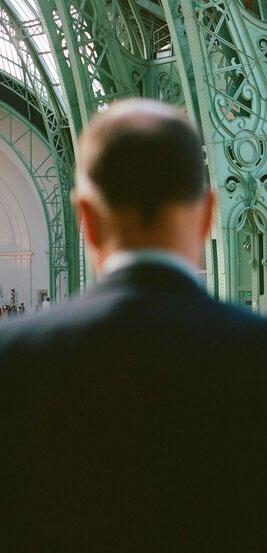
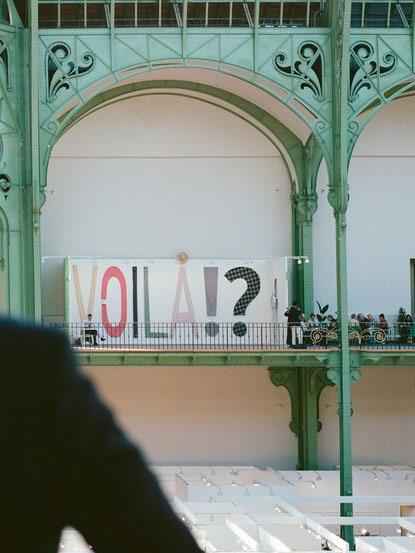
Tokyo Gendai has quickly established itself as a leading force in the international contemporary art world. With its third edition on the horizon, we sat down with Fair Director Eri Takane to discuss the motivations behind key new initiatives, the evolving landscape for female artists, and the fair’s vision as a platform for cultural exchange.
This year sees the launch of the inaugural “Hana Artist Award.” Takane explains the motivation:
“I have wanted to focus on supporting young artists since the very first edition, and I’m truly delighted that it’s finally becoming a reality. The award aims to boost the careers of emerging artists and lesser-known galleries. We have established a $10,000 prize, but more importantly, the winner’s work will be evaluated by internationally respected jurors. This offers recipients an invaluable opportunity to be recognized not only in Japan but on a global stage. We hope these artists and their galleries gain visibility, and that this recognition could lead, perhaps even years later, to museum exhibitions and new professional connections.”
The “Tsubomi ‘Flower Bud’” Exhibition: Gender and Contemporary Japanese Craft Tsubomi 'Flower Bud' is a symbolic sector of Tokyo Gendai. This year, a special exhibition has been organized focusing on contemporary women artists who use traditional Japanese craft
techniques.
"Every year, Tsubomi 'Flower Bud' holds an exhibition that focuses on social issues. In the first year, I held an exhibition of Japanese women artists because, as a woman, I wanted to reflect my own voice in Japan, where there is a large gender gap. This year, we are focusing on women artists who use craft techniques, and I personally selected the artists, with Mari Hashimoto acting as an advisor. While the culture of "artisans" is deeply rooted in Japanese crafts, contemporary artists place importance on their own concepts and ideas, elevating traditional techniques into new forms of expression. I hope to convey those contemporary women artists in particular are approaching crafts from their own perspectives and questioning society through their works."
“This year, around 70 galleries are participating, with more than half coming from outside Japan. For local audiences, it’s a rare opportunity to encounter international galleries and artists; for overseas visitors, it’s a gateway to the forefront of Japanese contemporary art. We hope to foster new communities and networks through this exchange. Gradually, I feel we are building the infrastructure for a robust, international art scene in Japan.”
With more than a decade in New York and experience at Google Arts & Culture, Takane brings a unique perspective to the fair’s direction.
“During my time at Google Arts & Culture, I was responsible for archiving museum collections and promoting Japanese culture internationally. I see the art fair as another kind of infrastructure—a platform where people from diverse backgrounds can come together and build community. My overseas experiences and work with technology directly inform my approach to Tokyo Gendai. I want the fair to introduce Japanese audiences to global trends, and at the same time, share Japan’s vibrant contemporary scene with the world.”
As for her vision for the future, Takane is clear:
“We are just getting started. Building a meaningful platform for artists, galleries, and audiences takes time. The art world is about long-term relationships, not short-term results. I hope people will see Tokyo Gendai as a place they want to return to again and again— somewhere to grow together. Personally, balancing my roles as director and mother, I am committed to continuing this work and look forward to welcoming everyone to the fair.”
Tokyo Gendai in 2025 stands as a vibrant bridge between Japan and the world, between tradition and innovation, and between the art community and wider society. As Takane’s words reveal, at the heart of the fair is an ongoing dialogue about the future—a dialogue worth following in the years to come.
今年初めて創設された「Hana Artist Award」。その狙いについて高根氏はこ う語る。
「実はフェア初年度から“若手アーティス ト支援”はやりたいと思っていましたが、 ついに実現できて本当に嬉しいです。キ ャリアの浅い作家や、認知度がまだ高く ないギャラリーの活動を後押しするため、 この賞を設けました。受賞者には賞金1 万ドルを授与します。加えて、国際的に 著名な審査員による評価や、受賞作のプ ロモーションを通じ、若手作家や所属ギ ャラリーの認知度を高める機会にしたい。 たとえば将来、美術館の展示につながる ような“きっかけ”になれば、と考えてい ます」
Tokyo Gendaiの象徴的なセクターであ る「Tsubomi ‘Flower Bud’」。今年は、 日本の伝統工芸技術を用いる女性現代ア ーティストに焦点を当てた特別展が組ま れている。
「Tsubomi ‘Flower Bud’は、社会課題に 焦点をあてた展示を毎年展開しています。 1年目は私自身が女性であり、ジェンダー ギャップが大きい日本で、自分の声を反 映したいと思ったのがきっかけで日本人 女性作家の展示を展開しました。今年は
工芸の技法を使う女性作家に注目し、作 家の選定は私自身、そこに橋本麻里さん がアドバイザーとして入ってくださって います。日本の工芸には“職人”の文化が 根付いていますが、現代作家は自身のコ ンセプトやアイデアを重視し、伝統的な 技術を新たな表現に昇華しています。特 に現代の女性作家たちが、自らの視点で 工芸と向き合い、作品を通して社会に問 いかけていることを伝えたいと思ってい ます」
「今年は約70のギャラリーが参加し、そ の半数以上が海外からの出展です。日本 の来場者にとっては世界のギャラリーや アーティストと出会う貴重な場であり、 逆に海外の関係者にとっても日本の現代 アートの最前線を体験できる機会です。
文化の“エクスチェンジ”を通じて新たな コミュニティが生まれ、アートのインフ ラが徐々に整ってきていると実感してい ます」
高根氏は、ニューヨークでの長期滞在や Google Arts & Culture日本担当として の経験を活かし、Tokyo Gendaiの運営 に臨んでいる。
「Google Arts & Culture時代は、日 本の美術館コレクションのアーカイブ化
や、文化発信を担当していました。アー トフェアも“インフラ”だと考えており、 多様な立場の人が集まり、コミュニティ を創出する場です。私自身の海外経験や テクノロジー分野の知見が、今のTokyo Gendaiにも生かされていると感じます。 現代アートを通じて、日本の文化を世界 に発信し、また海外の動きを日本にも紹 介していきたいと思っています」
「1年目、2年目と積み重ね、ようやくフ ェアとしての基盤ができ始めた実感があ ります。アートやコミュニティの世界は、 短期的な成果を求めるものではありませ ん。これからも長い目で、アーティスト、 ギャラリー、そして観客にとって“使い続 けたくなるプラットフォーム”を目指して いきたい。私自身、出産や育児と両立し ながらですが、これからもフェアの現場 で皆さまとお会いできるのを楽しみにし ています」
2025年のTokyo Gendaiは、現代アー トと社会をつなぐ、真に国際的な文化交 流のプラットフォームとして、その存在 感を増している。高根氏の言葉が示す通 り、ここには“未来をつくる対話”がある。 その一歩一歩に、これからも注目してい きたい。


交差する世界的コラボレーション
2025年8月末、東京・グランドハイアットにて発表された 「Y by YOSHIKI × Yoshitomo Nara コラボレーションワイ ン」。その場に集まった人々の期待感は、まさに歴史的瞬間 の訪れを告げていました。伝説的ミュージシャンYOSHIKI と、世界的現代アーティスト奈良美智。この二人の融合は、 単なるコラボレーションを超え、日本文化史に新たな1ペ ージを刻む出来事となりました。
YOSHIKIと奈良美智氏は、ともに米TIME誌「世界で最も 影響力のある100人(TIME100)」2025年版に選出。音 楽と現代美術という異なる領域で世界的評価を受ける二人の 日本人が、同じ舞台で協働するのは史上初のことです。
ナパ・ヴァレーを拠点に展開する「Y by YOSHIKI」は、常 に高い評価を受け続け、日本でも発売のたびに完売する人気 ブランドです。今回、そのラベルデザインを担当するのは、 MoMAやビルバオ・グッゲンハイム美術館など世界的美術 館に作品が収蔵される奈良美智氏。ワインボトルが、唯一無 二のアートピースへと昇華しました。
二人の出会いは偶然でした。パンクロックを愛する奈良氏 は、共通の知人を介してYOSHIKIと交流を持ち、音楽観や 価値観、そしてワインへの情熱を分かち合うことで強く結び つきました。その結果生まれたのが、ジャンルや国境を超越 する今回のプロジェクトです。
In late August 2025, at Tokyo’s Grand Hyatt, the atmosphere was charged with anticipation as two cultural icons—YOSHIKI, the legendary composer and rock star, and Yoshitomo Nara, the internationally acclaimed contemporary artist—unveiled a collaboration unlike any other. Their joint project, “Y by YOSHIKI × Yoshitomo Nara Collaboration Wine,” marks not only a meeting of minds but also a historic moment in Japanese cultural history.
Both YOSHIKI and Nara were recently named to TIME magazine’s list of the 100 Most Influential People of 2025. It is the first time two Japanese figures from music and contemporary art, each recognized globally for their contributions, have converged on such a scale. The announcement drew global attention, signaling a new era where the boundaries between fine art, music, and oenology blur into one another.
“Y by YOSHIKI,” founded in Napa Valley, has earned international acclaim since its debut, consistently selling out vintages in Japan and beyond. For this collaboration, Nara has created original artwork for the labels, transforming each bottle into a collectible objet d’art. His works, housed in MoMA New York and the Guggenheim Bilbao, embody a rebellious yet tender spirit that resonates across generations—qualities mirrored in YOSHIKI’s genre-defying musical career.
Their partnership was born of serendipity: Nara, long inspired by punk rock, found common ground with YOSHIKI through shared values and a mutual passion for wine. The result is a project that transcends convention, continuing a tradition of high-profile artistic collaborations for Y by YOSHIKI, following its earlier celebrated partnership with Stella McCartney.
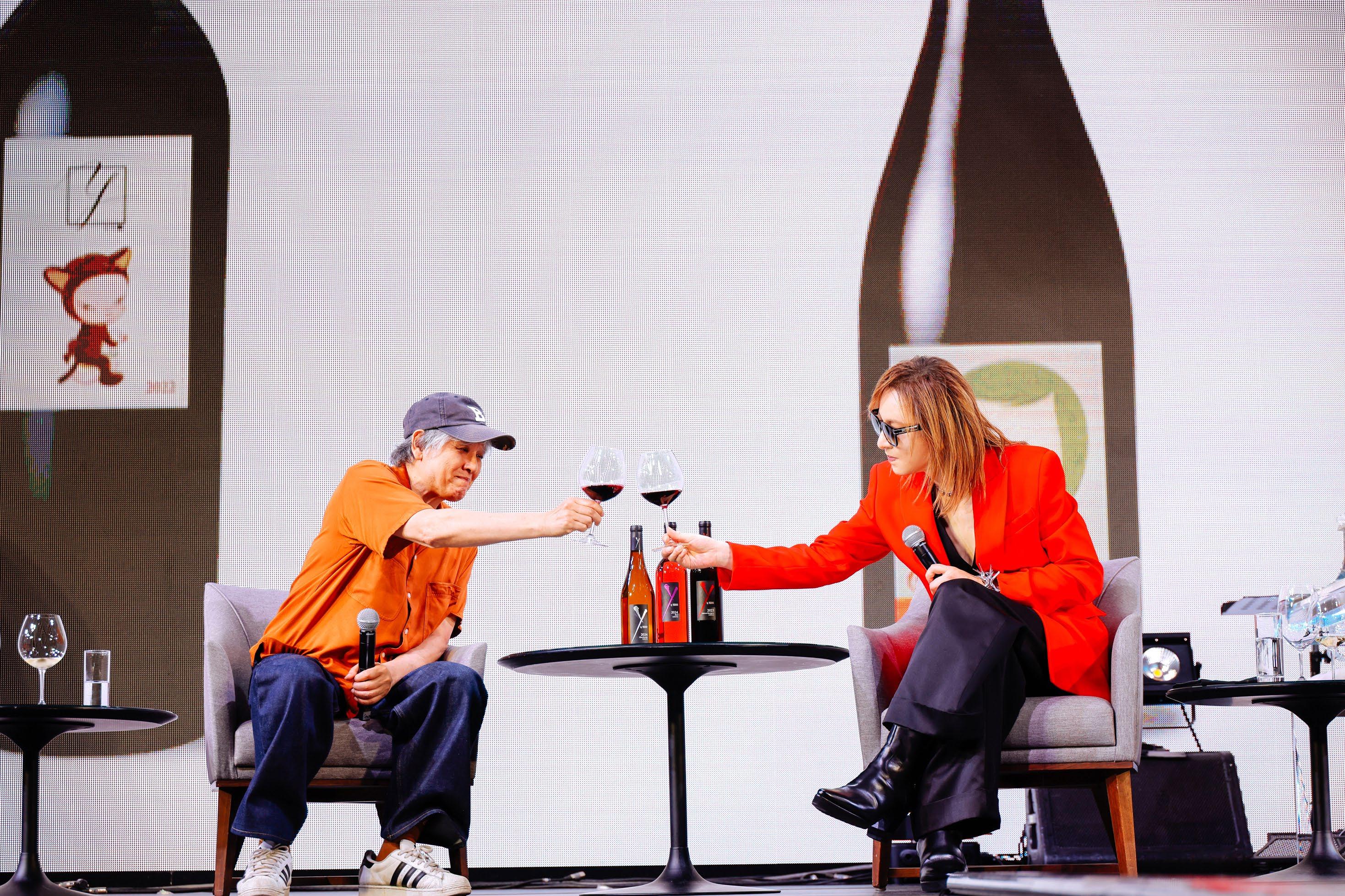
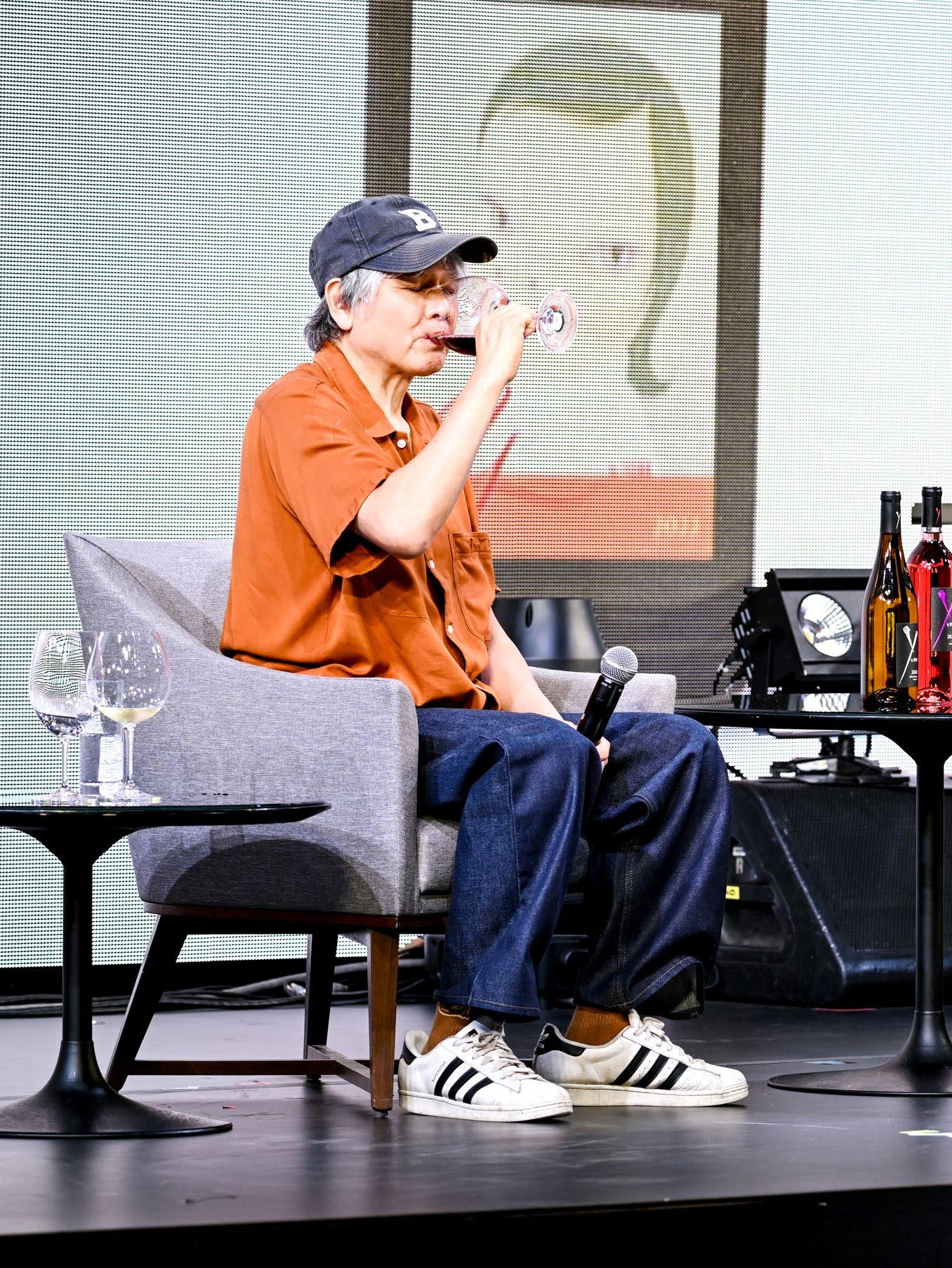
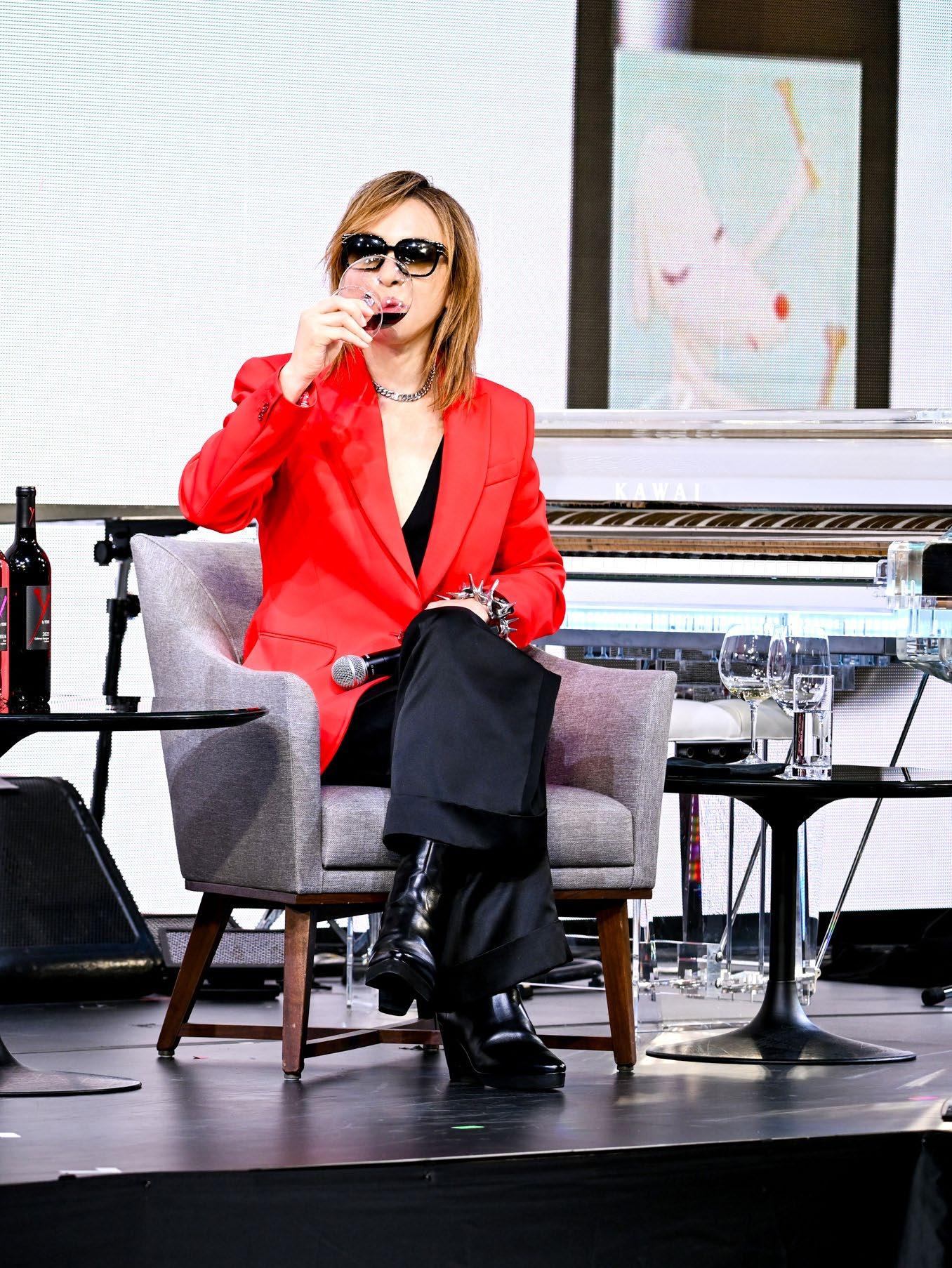

“I’ve admired YOSHIKI’s extraordinary success in music for years, but what struck me most when we met was his honesty and authenticity. He’s someone I can truly trust. Above all, his wines are remarkable— absolutely delicious. The idea that my artwork would appear on his label made me incredibly excited, and ultimately led me to join this project. Even the bottle cap carries a small illustration, which is rare in the wine world. Of course, there was great pressure: how much artistic value could I bring to something that already had a perfected taste? After countless discussions, I’m proud that we are finally ready to share this with the world.”
「音楽の世界でのご活躍は以前から存じてお り、本当にすごい方だと思っていました。
YOSHIKIさんは、ご自身をまっすぐに表現さ れていて、「この人は信頼できる」と感じまし た。そして何より、YOSHIKIさんのワインが 本当に美味しかったこともあり、「このラベル に自分の絵が載るんだ」と思うと、とても楽し みで、コラボレーションをさせていただくこと を決めました。ラベルだけでなく、キャップに までワンポイントの絵が入っているのは、他の ワインではあまりないこだわりです。すでに完 成された味に対して、どれだけアートとしての 付加価値を加えられるか、それは大きなプレッ シャーでもありました。長い時間をかけて話合 ったので、いよいよ本当に世の中に出るんだと 実感できて、嬉しいです。」

©YOSHIKI
“When I first met Nara, I never dreamed we would collaborate on this scale. To create something together with an artist I deeply respect feels like a dream come true. I’m convinced this will become one of the most important projects of my career. Every wine in this collaboration represents the pinnacle of Y by YOSHIKI. I can’t wait for people around the world to experience them.”
「奈良さんと出会ってから、ここまでのコ ラボレーションができるとは当時想像して いませんでした。尊敬する芸術家の奈良さ んとこういった取り組みができるのが感無 量で、僕にとっても夢のようです。今後大 きなプロジェクトになると確信していま す。今回コラボレーションとして出すワイ ンは、どれも「Y by YOSHIKI」の最高傑 作です。楽しみにしていてください。」

This collaboration is far more than a product launch—it is a statement. By uniting the artistry of Yoshitomo Nara with the musical and entrepreneurial vision of YOSHIKI, the project embodies a distinctly Japanese form of global influence. Just as their recognition in the TIME100 signals international esteem, this collaboration represents Japan’s cultural dynamism on the world stage.
As the final notes of YOSHIKI’s surprise performance of “Forever Love” echoed from a crystal piano at the press conference, the room felt suspended in a moment that was both intimate and monumental. The YOSHIKI × Nara collaboration is not merely about wine, but about how art, music, and culture can merge to create experiences that transcend borders.
Website: yoshiki.net
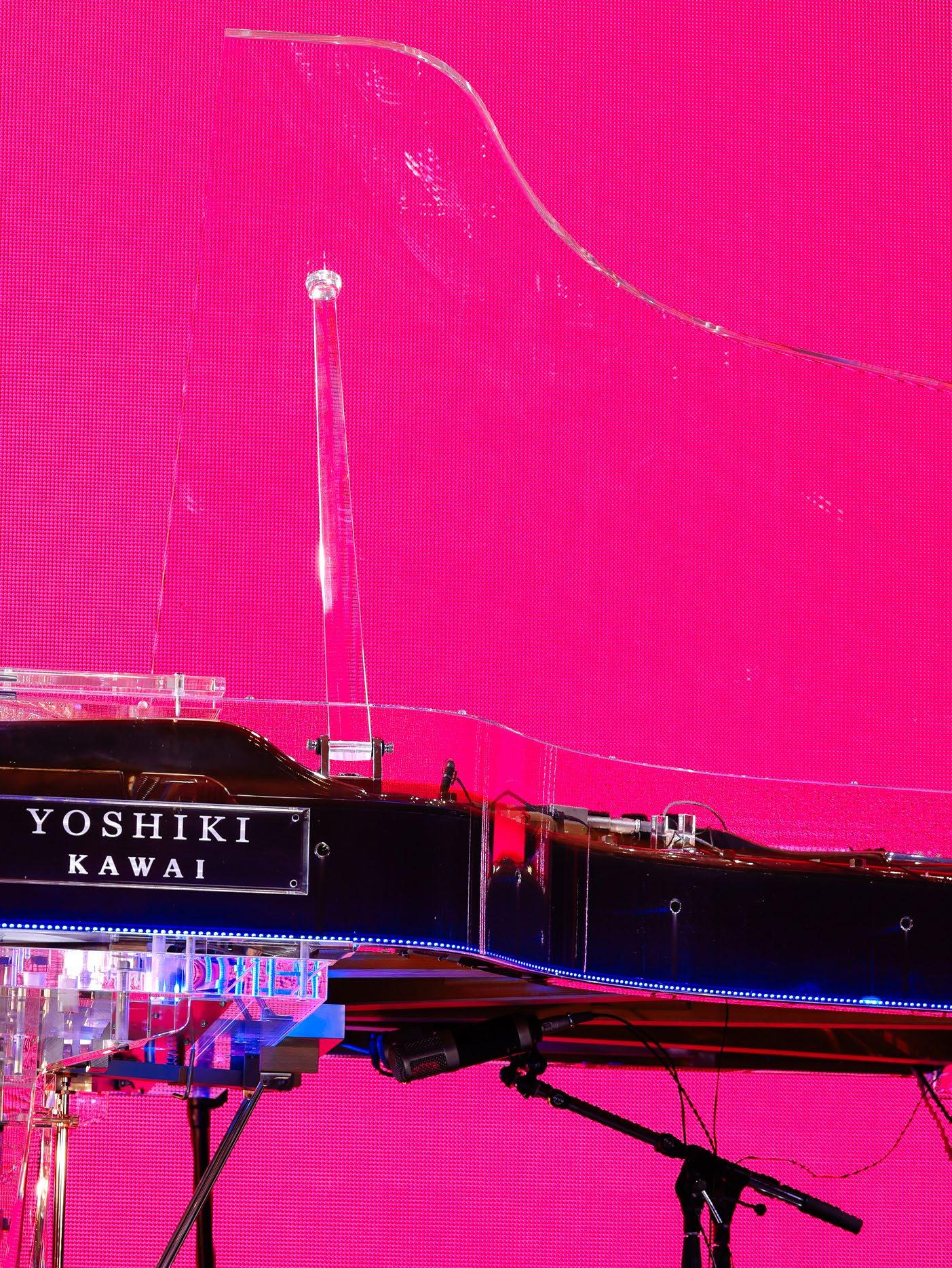
文化的マイルストーン
奈良美智のアートとYOSHIKIの音楽的・ 起業家的ビジョンが融合するこのワイン は、単なる商品ではなく、文化的な声明で もあります。二人がTIME100に選ばれた 事実と同様に、日本文化の持つ世界的な力 を象徴するものです。
記者会見の最後、YOSHIKIがクリスタル ピアノで「Forever Love」を披露した瞬 間、会場は深い感動に包まれました。音 楽、アート、そしてワインが共鳴し合うこ のプロジェクトは、時代を超えて人々の記 憶に残り続けるでしょう。
公式サイト:yoshiki.net

As October’s light softens the vibrant energy of Singapore’s streets and the roar of Formula 1 engines echoes nearby, Opera Gallery Singapore unveils its most compelling exhibition to date: “The Singapore Masters Show: From Monet to Condo”. From 3 October to 3 November 2025, this extraordinary presentation gathers around 25 masterpieces, tracing a seamless arc from the gentle glow of Impressionism to the bold forms of contemporary figuration, forging a meditative pause amid the rush of race week.
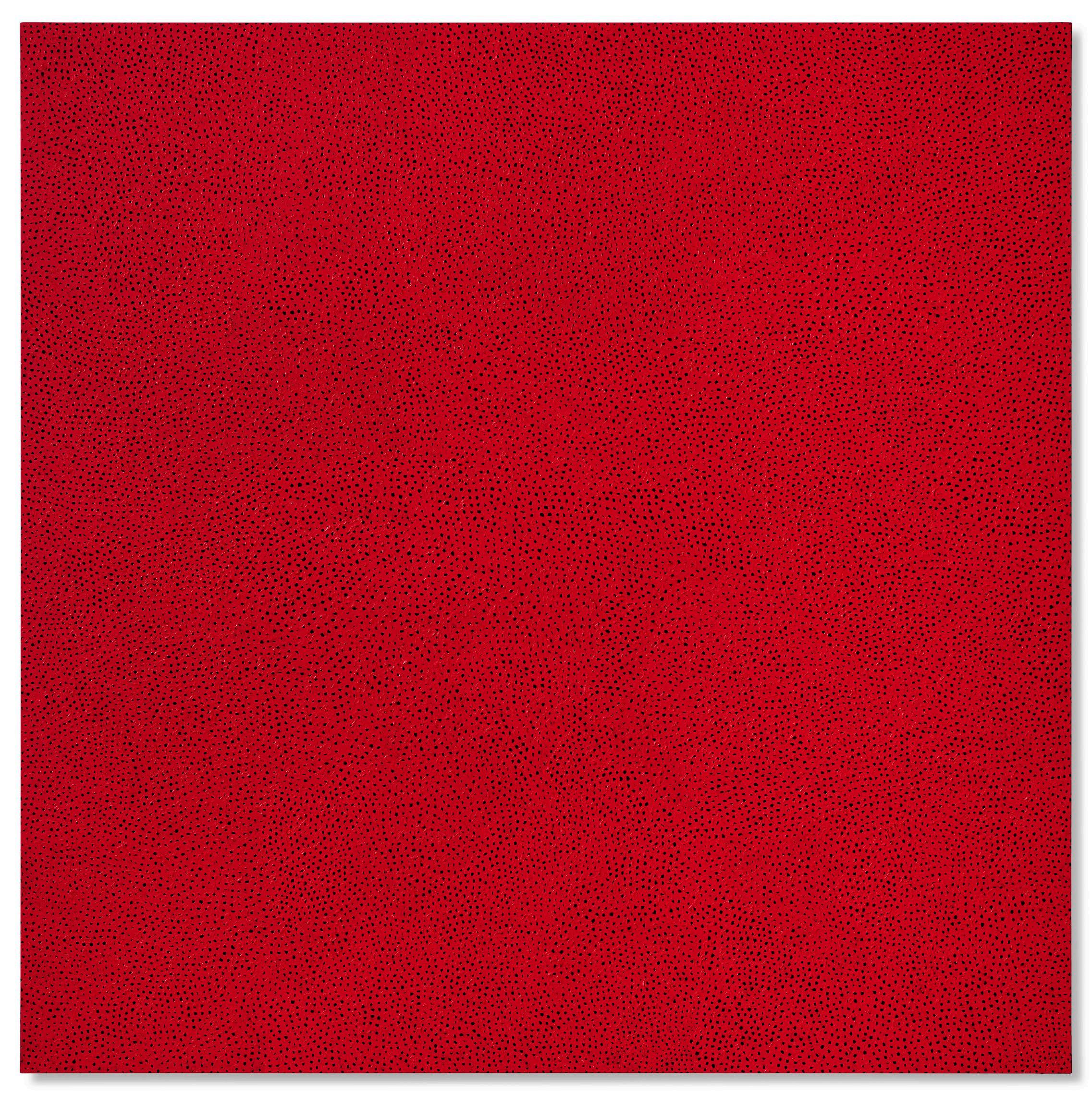
10月、柔らかな陽光がシンガポールの街の活気をやさしく和らげ、すぐそばではF1マシンの轟音が反響する。
その只中で、オペラ・ギャラリー・シンガポールは過去最大級の意欲作を披露する。
「The Singapore Masters Show: From Monet to Condo」。2025年10月3日から11月3日まで、印象 派の穏やかな光彩から現代具象の力強いフォルムまで、およそ25点の傑作が一堂に会し、レースウィークの喧 騒に静かな休止符を打つ。
This luminous showcase opens with Claude Monet’s Les Bords de l’Épte à Giverny (1887)—a resonant picture of reflection and light, its textured strokes richly evoking Giverny’s ethereal landscape. The painting, once owned by the Prince of Wagram and dealer Paul Durand-Ruel, anchors the exhibition’s contemplative core.
Across the gallery, bold leaps in artistic vision follow. Pablo Picasso’s Le Bain (1968), a gem from the Berggruen Collection, once displayed at the Musée de l’Orangerie, speaks to the enduring force of Cubism. Nearby, the expressive gestures of Marc Chagall, the lyrical abstractions of Pierre Soulages, and the stylistic echoes of Fernand Léger chart Modernism’s transformative journey.
ら現代の鼓動へポップの残響か
時代を超える対話のヴィジョン
空気は一変し、ポップアートと戦後美術の鮮烈な作品群 が登場する。アンディ・ウォーホル《Reigning Queens: Queen Elizabeth II of the United Kingdom》(1985) は、ポップカルチャーが偶像をいかに高め、そして問い直 すかを映し出す。草間彌生《Starry Pumpkin》(2016) は、2017年にシンガポール国立美術館で高く評価され、 観る者を宇宙的な鮮烈さへと没入させる。
そして掉尾を飾るのは、ジョージ・コンド《Abstract Portrait Composition》(2021)。断片化された具象は、 ピカソの革新からの系譜を引きつつ、現代的感性を鮮やか に刻む。
ステファン・ル・ペルティエの指揮のもと、オペラ・ギャ ラリー・シンガポールは時代を横断する美の対話を紡ぎ出 す。
「『The Singapore Masters Show: From Monet to Condo』は、最高水準の美術作品を紹介するという当ギ ャラリーの使命を体現し、過去150年の巨匠たちの作品 間に対話を生み出す展示です」と、ル・ペルティエは語る。
プライベート・コレクションから美術館展示まで、卓越し た来歴を持つ作品群は、鑑賞者に畏敬と熟考を促す。創設 者ジル・ディアンも、「F1開催週に合わせたこの展示は、 国際的な文化交流の瞬間を生み出す」と強調する。
刹那が加速する時代にあって、「From Monet to Condo」は鑑賞者に、味わい、立ち止まり、そして世代 を超えて響き続ける美の余韻を見いだすことを促す。
チェッカーフラッグが降りた後も、文化の鼓動は長く反響 し続けるだろう。
―― 鑑識家のために
Led by Stéphane Le Pelletier, Opera Gallery Singapore invites a timeless conversation across art epochs. As he reflects:
“‘The Singapore Masters Show: From Monet to Condo’ illustrates our commitment to presenting exhibitions of the highest quality artworks… an exhibition that creates a dialogue between works by major artists of the last 150 years.”
With works of eminent provenance—from private collections to institutional exhibitions—the display fosters both reverence and reflection. As Gilles Dyan, the gallery’s founder, emphasizes, staging this during F1 week invites an “international moment” of cultural immersion.
In an era where moments are often fleeting, “From Monet to Condo” encourages us to savor—reflect, pause, and discover the enduring resonance of art across generations.
Prepare for a cultural pulse that echoes long after the chequered flag falls.
— For Connoisseurs





生きる遺産、語り継ぐ風土 ブルゴーニュ「クリマ」世界遺産10周年記念式典より
10ans_Temps-officiel©M.Joly


10ans_Temps-officiel©M.Joly
The 10th Anniversary of Burgundy’s “Climats” as a UNESCO World Heritage
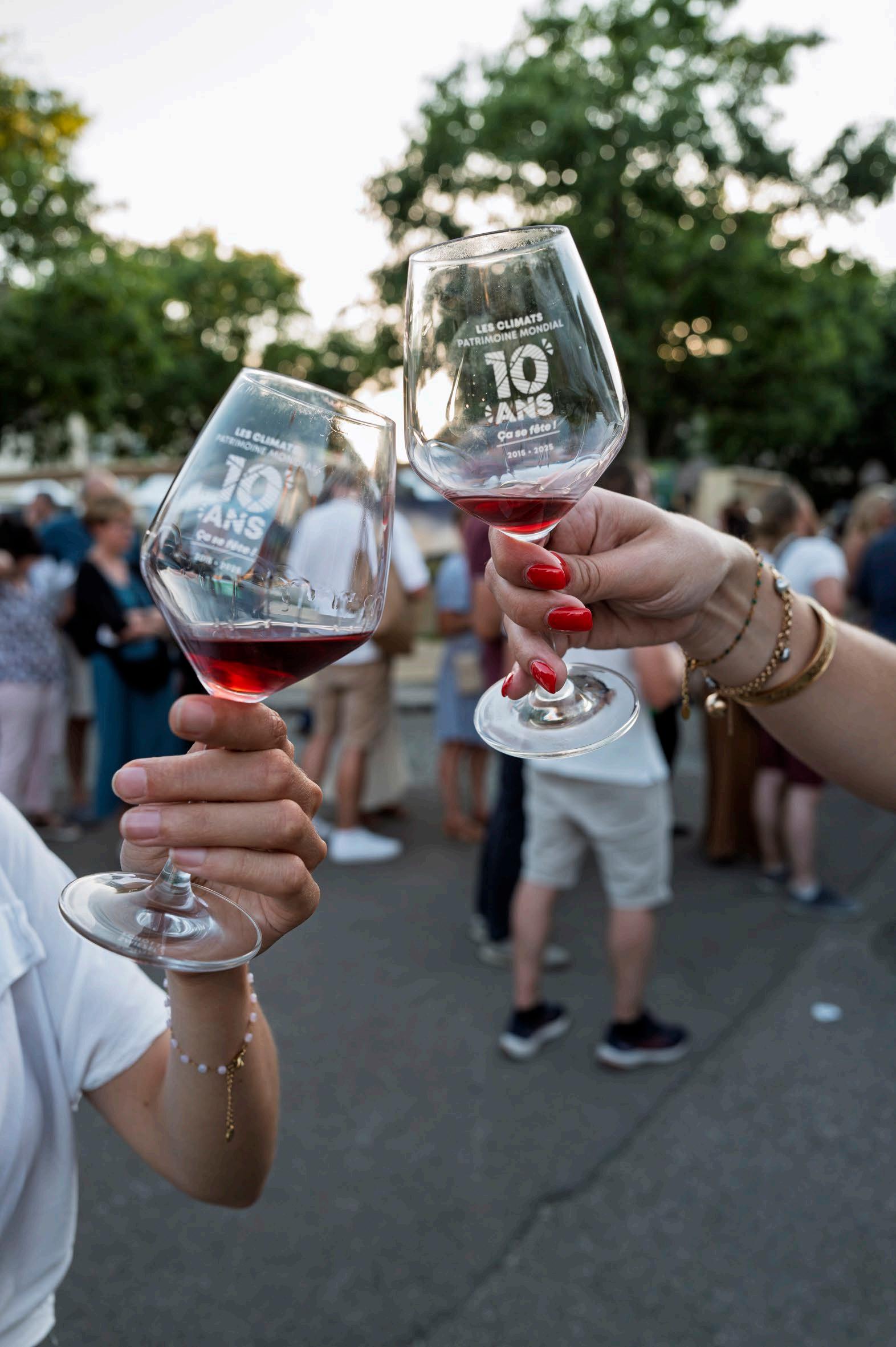
In the gentle hills of eastern France, where sunlight lingers over the vineyards, the word Climats—so lyrical in French—captures more than geography. It embodies an entire cultural system. On July 4, 2025, the village of Puligny-Montrachet, renowned for its white wines, marked a significant anniversary: the inscription of the “Climats of the Burgundy Vineyard” on the UNESCO World Heritage list, ten years ago to the day. The event was more than a commemoration. It was a renewed reflection on how culture is remembered, safeguarded, and lived. In an era when multilateralism is under strain and heritage is too often treated as artifact, Burgundy offers another vision: a heritage rooted not only in stone, but in soil, labor, and collective memory.
フランス東部、やわらかな陽光に包まれた丘陵のブドウ畑。 その風景の中で、詩のように響く「Climats(クリマ)」と いう言葉は、単なる地理ではなく、精緻で奥深い文化体系そ のものを表している。2025年7月4日、白ワインで名高い ピュリニー=モンラッシェ村は特別な一日を迎えた。10年 前のこの日、ブルゴーニュの「葡萄園のクリマ」がユネスコ の世界遺産に登録されたのである。 これは単なる記念では ない。「文化はいかに記憶され、守られ、生きられていくべ きか」を再考する場であり、未来への問いかけでもあった。 多国間主義が揺らぐ現代において、遺産を「保存すべき対象」 から「生きた実践」へと位置づけ直す姿勢が、ブルゴーニュ で改めて示された。

10ans_Ambiances©M.Joly
On July 4, 2015, at the 39th UNESCO World Heritage Committee meeting in Bonn, Germany, the Climats were formally recognized as a cultural heritage site. For the first time, the notion of terroir— once confined to agriculture—was acknowledged as a complete cultural system. In Burgundy, a Climat is not simply a parcel of land defined by geology and climate. It is a named and delimited landscape, shaped by centuries of human cultivation, memory, and transmission. Each plot carries its own name, history, and winemaking identity, forming one of the most intricate cultural cartographies in the world. As Aubert de Villaine, co-owner of Domaine de la Romanée-Conti and spiritual leader of the heritage nomination, explained: “Climat means a cultural system. It involves choices, memory, transmission, and naming. We are not merely inheriting land; we are inheriting a way of life.”
2015年7月4日、ドイツ・ボンで開かれた第39回ユネスコ 世界遺産委員会で「ブルゴーニュのクリマ」は正式に文化遺産 として登録された。これは、もともと農業用語に過ぎなかった 「テロワール(風土)」が初めて「文化体系」として認められ た歴史的瞬間だった。 ブルゴーニュにおける「Climat」は、 単なる土壌や気候を指すのではなく、人々が数世紀にわたり命 名し、区画し、栽培してきた小区画である。それぞれに名前、 歴史、独自のワイン文化が息づいている。 ドメーヌ・ド・ラ ・ロマネ=コンティ(DRC)の元共同オーナーであり、登録 運動の精神的指導者でもあったオベール・ド・ヴィレーヌ氏は こう語った。 「Climatとは文化的なシステムを意味します。 選択、記憶、継承、命名——それらすべてが含まれているので す。私たちは土地を受け継いでいるのではなく、“生き方”を 受け継いでいるのです。」
One of the highlights of the celebration was the presence of UNESCO Director-General Audrey Azoulay. In her keynote address, she described Burgundy as: “A shining example: concrete, rooted, and widely cherished… In a time when multilateralism is questioned, this is how World Heritage should live.” She emphasized that the value of heritage lies not only in monuments, but in the cultural vitality of local communities. Burgundy’s Climats, she announced, will be showcased at the next UNESCO World Heritage session in India as a model of living heritage preservation—an act that transforms local knowledge into
記念式典の最大の注目は、ユネスコ事務局長オ ードレ・アズレ氏の登壇だった。「多国間主義 が問われる時代にあって、ブルゴーニュのクリ マは、地に足の着いた、心に響く、そして広く 愛される世界遺産のあり方を示しています。」 さ らに彼女は、遺産の価値は建造物や景観の保存 にあるのではなく、地域社会の文化的生命力と 継続性にあると強調。ブルゴーニュの事例を「生 きた文化遺産の模範」として、次回インドでの 世界遺産会議で紹介することを明らかにした。
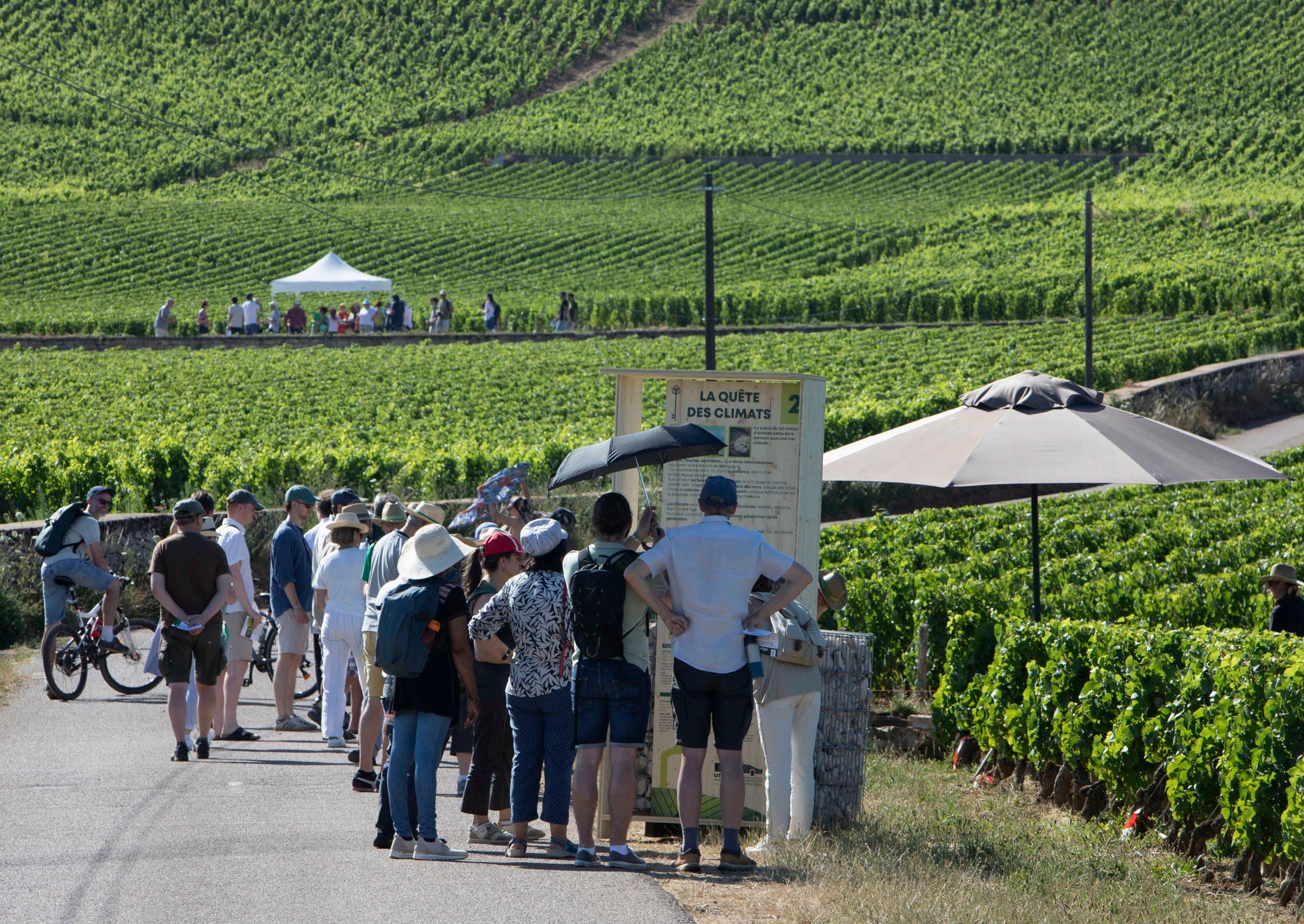
Returning to the site of his long campaign, Aubert de Villaine spoke with characteristic modesty. In an interview with Gen de Art, he reflected: “They have a past—a brilliant past—and the present cannot truly prosper if it is not built on that past. If they remember and build upon it—with wisdom, imagination, and energy—they will succeed.” His words reveal a rural philosophy both simple and profound: memory is not static but must be lived, a continuous practice grounded in land and time.
オベール・ド・ヴィレーヌ氏は穏やか に、しかし確信を持って語った。 「輝 かしい過去があり、それを忘れずに 現在を築くならば、知恵と想像力と エネルギーをもって未来を拓くこと ができる。」 彼の言葉は、記憶を「生 きた実践」として受け継ぐことの重 要性を改めて思い起こさせる。
As evening fell, the anniversary transformed into a collective ritual. Under the theme Village de Gardiens (“Village of Guardians”), dozens of wineries—led by Domaine de la Romanée-Conti—poured their wines in the village square. Guests shared not only vintages, but history and identity. Children painted beneath the vines, artists offered face-paint designs of grape leaves and butterflies, a silhouette artist roamed, and poetry readings echoed through the streets. The night culminated in a fire performance, The Legend of the Guardians, which wove myth and movement into the summer darkness. This was more than festivity—it was heritage in motion, binding past and present through community and creativity.
日が沈むと「守り人の村(Village de Gardiens)」をテーマに広場で祝祭が始まった。
DRCをはじめとするワイナリーがワインを振る 舞い、子どもたちは葡萄棚の下で絵を描き、ア ーティストはブドウの葉をモチーフにフェイス ペイントを施す。夜には「守り人の伝説」と題 した火のパフォーマンスが行われ、幻想的に幕 を閉じた。 それは、風土が単なる土地ではなく 「人とともに生きる文化」であることを示す瞬 間だった。
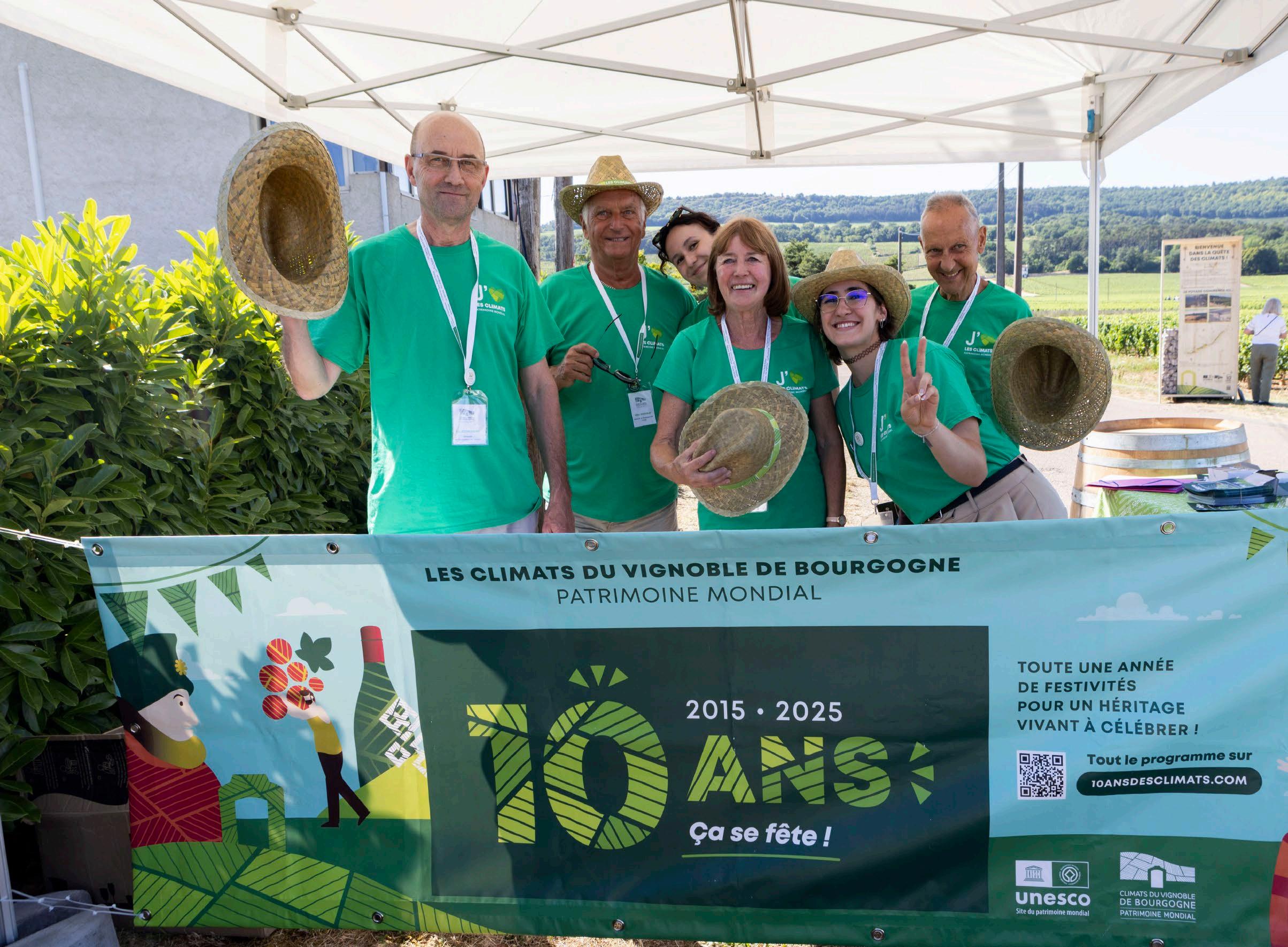
夜の祝祭
One guest offered a telling metaphor: “World Heritage is not a medal—it is a compass.” Indeed, as climate change accelerates and urban pressures rise, Burgundy confronts urgent challenges. Yet its future lies in the same collective strength that secured the UNESCO inscription: grassroots action, local stewardship, and the shared conviction that culture survives through practice.
守り人の村 「世界遺産とはメダルではなく、羅針盤であ る。」 ある出席者のこの言葉の通り、ブルゴ ーニュの遺産は未来への道を指し示している。
気候変動や開発圧力という新たな試練に直面 しつつも、この地は草の根の力と地域の連帯 でそれを乗り越えていくだろう。 10周年は 終章ではなく、序章である。ここでの記憶は 化石ではなく、四季とともに息づくもの。ブ ドウのように土地と人の営みで育まれ、次の 世代が新たな守り人として歩みを始めている。

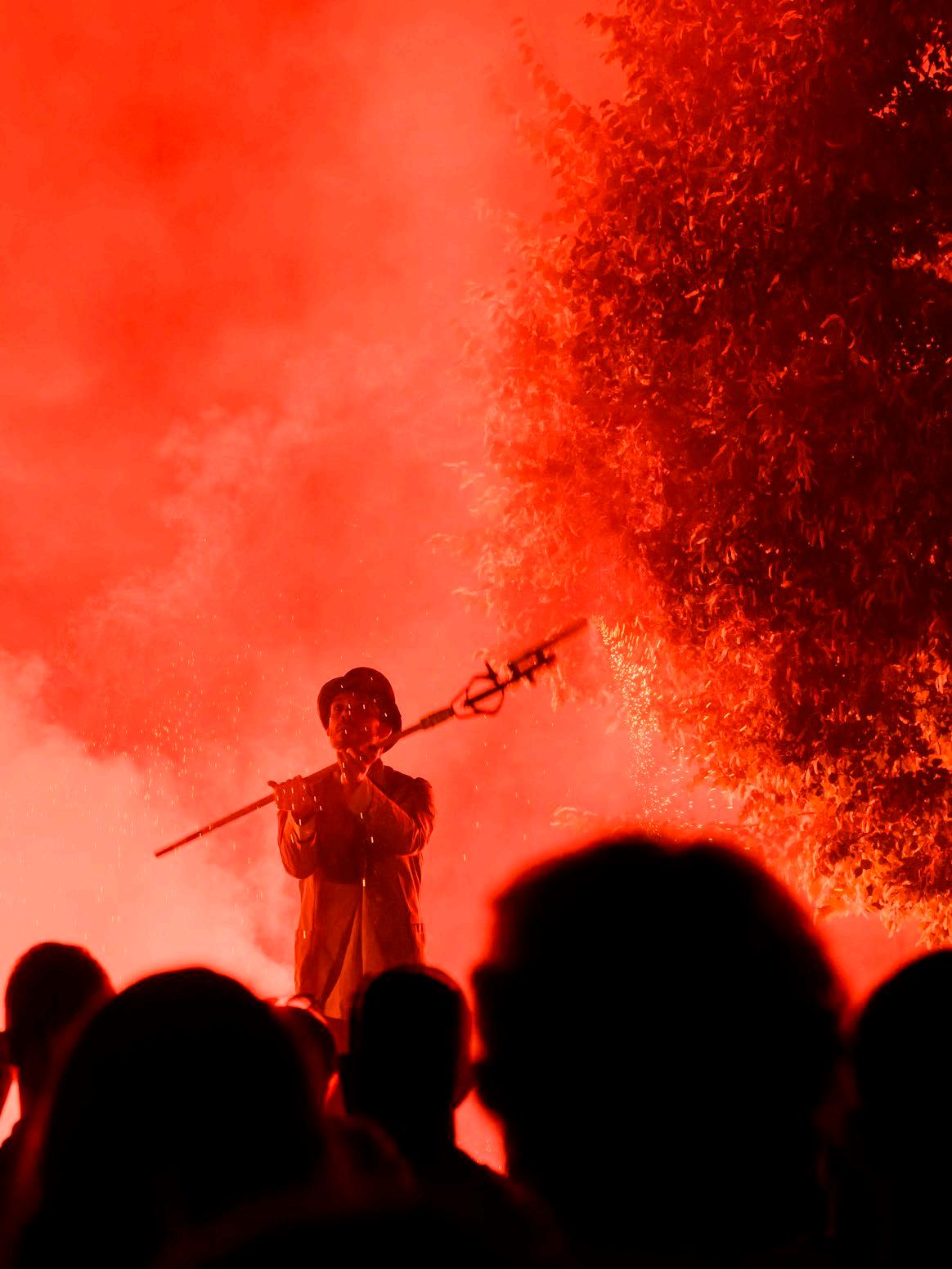
The tenth anniversary of the Climats du Vignoble de Bourgogne is not an endpoint but a beginning. From the stones of Vosne-Romanée to the children’s laughter in Puligny’s square, Burgundy has demonstrated that heritage need not be frozen in time. Here, memory is not archival but seasonal. It grows like the vine—shaped by sun, soil, and the hands that tend it. A new generation now steps into this landscape, ready to become the next guardians of terroir.
「世界遺産とはメダルではなく、羅針盤であ る。」 ある出席者のこの言葉の通り、ブルゴーニ ュの遺産は未来への道を指し示している。気候変 動や開発圧力という新たな試練に直面しつつも、 この地は草の根の力と地域の連帯でそれを乗り越 えていくだろう。 10周年は終章ではなく、序章で ある。ここでの記憶は化石ではなく、四季ととも に息づくもの。ブドウのように土地と人の営みで 育まれ、次の世代が新たな守り人として歩みを始 めている。

“The challenge is always in the vineyard,” Brice says.“You have to cope with heat, manage the canopy, the wind, the balance of growth — and find that one perfect day for harvest. Not yesterday, not tomorrow. That day.” 「挑戦はいつも畑にあります。」とブリスは語 る。 「暑さに対応し、樹冠や風、成長のバラン スを管理し、そして“収穫のたった一日”を見極 めなければならない。昨日でも明日でもなく、 “その日”です。」
2023 was no exception. Each vintage brings different conditions, and adaptation has become part of Leflaive’s daily rhythm. “In the last ten days it was cold; in the next ten it will be hot. So we make decisions every day, every week,” he explains.
Climate change hasn’t shaken Domaine Leflaive’s philosophy. In fact, it has strengthened Brice’s belief in biodynamic farming.“The more the climate changes, the more we’re convinced our choice is the right one. The wines we produce from biodynamic vineyards are more delicate, more elegant than if we farmed differently.”
2023年も例外ではなかった。
毎年が違う年であり、順応する ことがルフレーヴの日常になっ ている。 「ここ10日は寒く、 次の10日は暑くなる。だから 私たちは日々、週ごとに判断を 変えていきます。」
気候変動は、ドメーヌ・ルフレ ーヴの方針を揺るがすどころ か、むしろビオディナミ(生物 力学農法)への信念をさらに強 めた。「気候が変わっていくほ ど、私たちの選択が正しかった と確信します。 ビオディナミ で育てたブドウから造るワイン は、他の農法よりも繊細で、よ りエレガントなんです。」
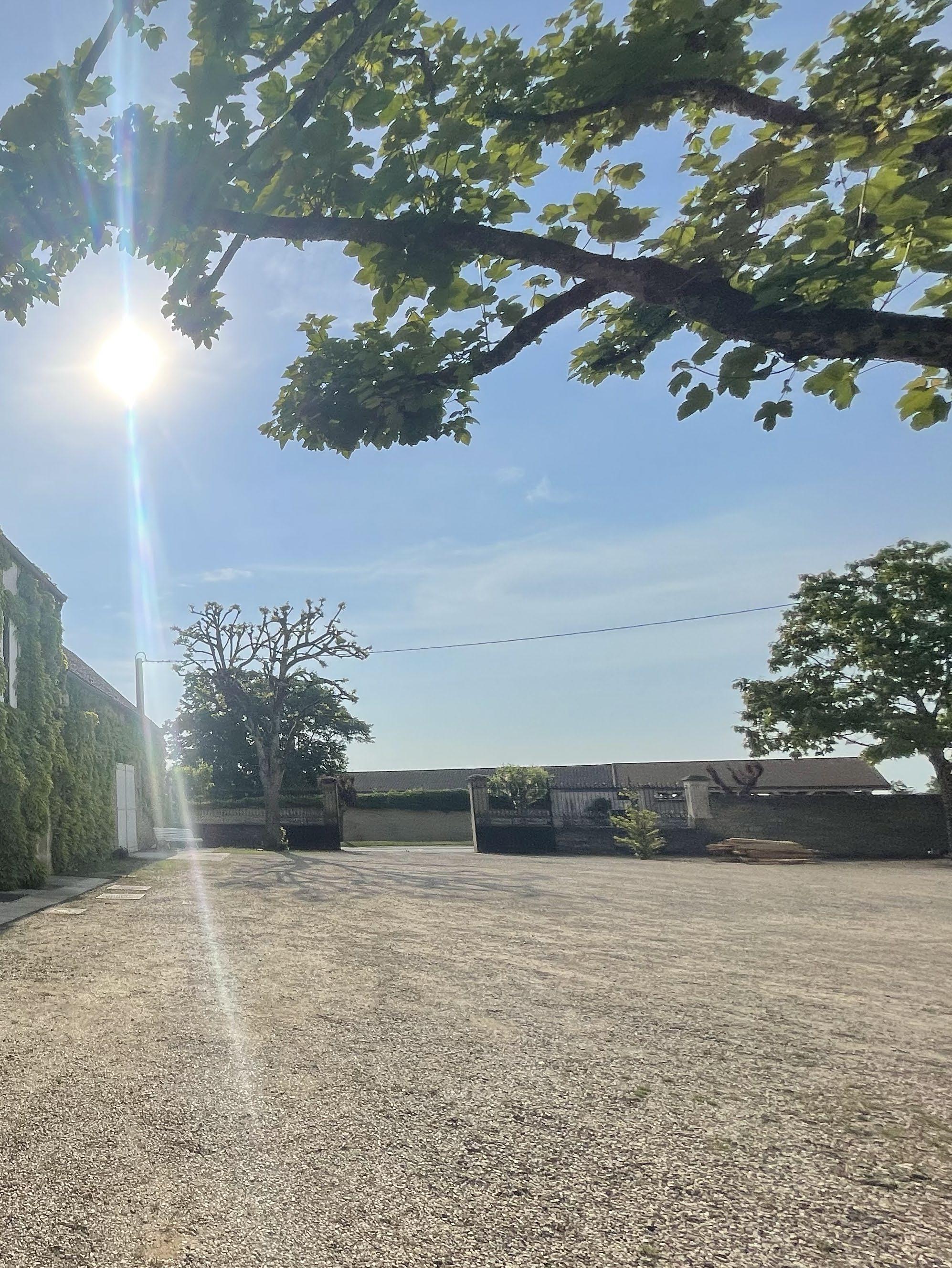
Brice de La Morandière on Climate, Terroir, and Legacy
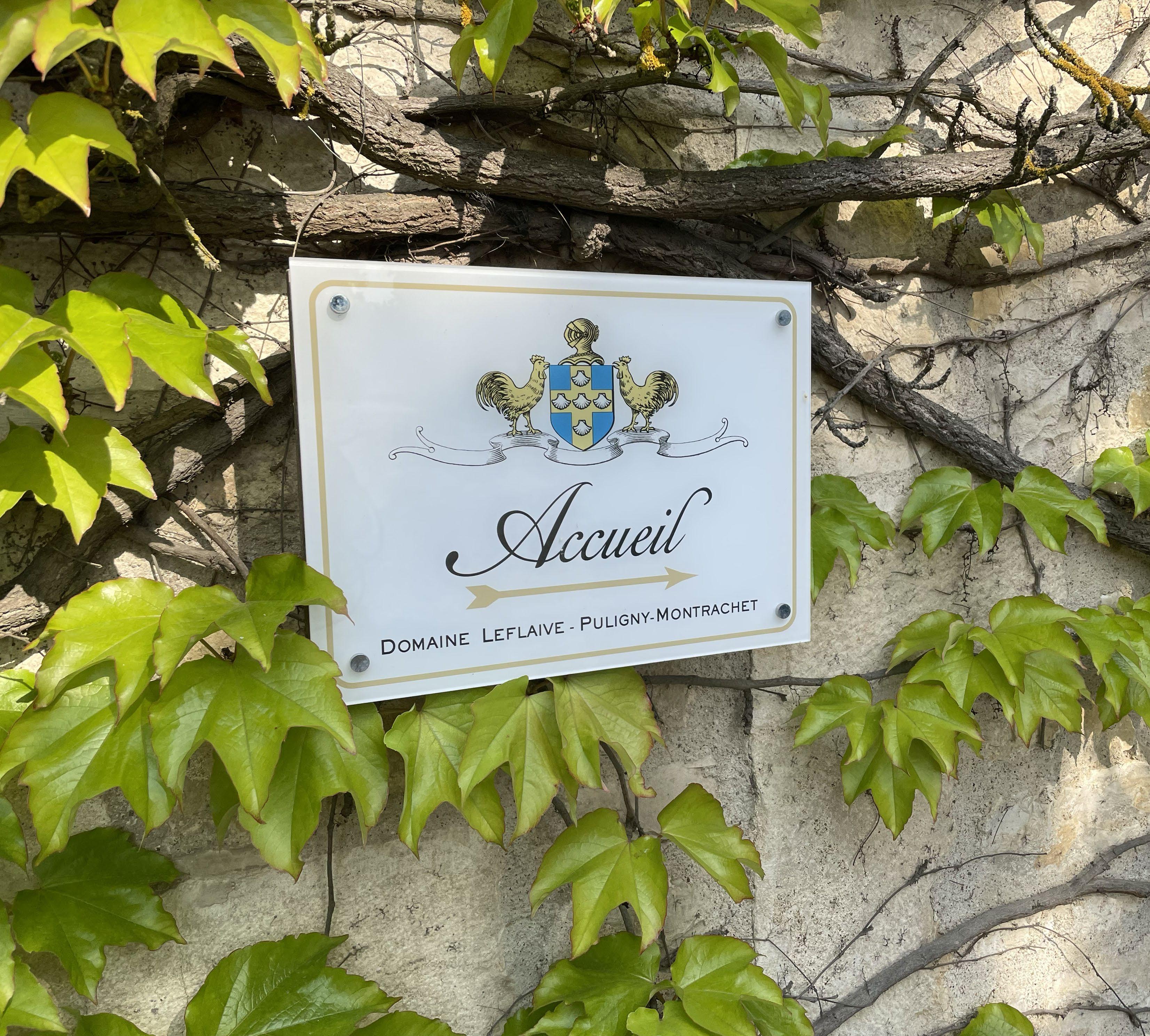
When Brice took over Domaine Leflaive in 2014, he quickly realized that respecting tradition did not mean refusing change. Quoting Gustav Mahler, he often reminds his team: “Tradition is not the worship of ashes, but the preservation of fire.” For Brice, tradition requires constant reflection on what is truly worth preserving. Over the past decade, he has overseen the renovation and construction of four buildings, two of which were built using wood and straw — with straw serving as an excellent natural insulator. He has also refined the winemaking process so that Leflaive wines can age longer while retaining their freshness. Even the label has been redesigned, marking a new chapter in the estate’s history.
“After stripping away some of the design elements, I looked back at my great-grandfather’s labels. And I realized: the changes I’d made were, in fact, a return to the original purity.”
10年の変化 灰ではなく、炎を守る
2014年にブリスがドメーヌ・ルフレーヴを引き継いだとき、 彼は「伝統を守るとは、何も変えないことではない」と強く 感じたという。彼はグスタフ・マーラーの言葉を引用し、「伝 統とは、灰を守ることではなく、炎を守ることだ」と語る。 ブリスは常に伝統を見直し、何が本当に残すべき“良い伝統” なのかを問い続けてきた。この10年で彼は、4棟の建物を 改修または新築し、そのうち2棟は木材と藁を用いた建築で、 藁は優れた断熱材として機能している。また、醸造の工程を 改良し、ルフレーヴのワインがより長く熟成し、より長くフ レッシュさを保てるようにした。さらに、ラベルのデザイン も一新し、メゾンの新しい時代を象徴する姿を示したのであ る。
「いくつかの装飾を取り除いたあと、曾祖父の時代の古いラ ベルを見たんです。結局、自分がした“変化”は、原点の純 粋さに戻るためのものだったと気づきました。」

“How do you experience terroir? It has to start from the heart,” Brice says.
“Wine must create a spark of emotion. Different terroirs carry different personalities. Each vintage has its own personality. And the winemaker too becomes part of that personality. All of this meets in a glass of wine and becomes a memory that stays.”
テロワールは感情 ワインは火花を生むもの
「テロワールをどう感じるか。それは心から始まらな ければならない。」
「ワインは感情の火花を生み出すものです。 異なるテ ロワールには、それぞれ異なる個性がある。異なるヴ ィンテージも、また異なる個性を持つ。そして造り手 もまた、個性の一部となる。 すべてがグラスの中で出 会い、人の心に残る“記憶”になるんです。」
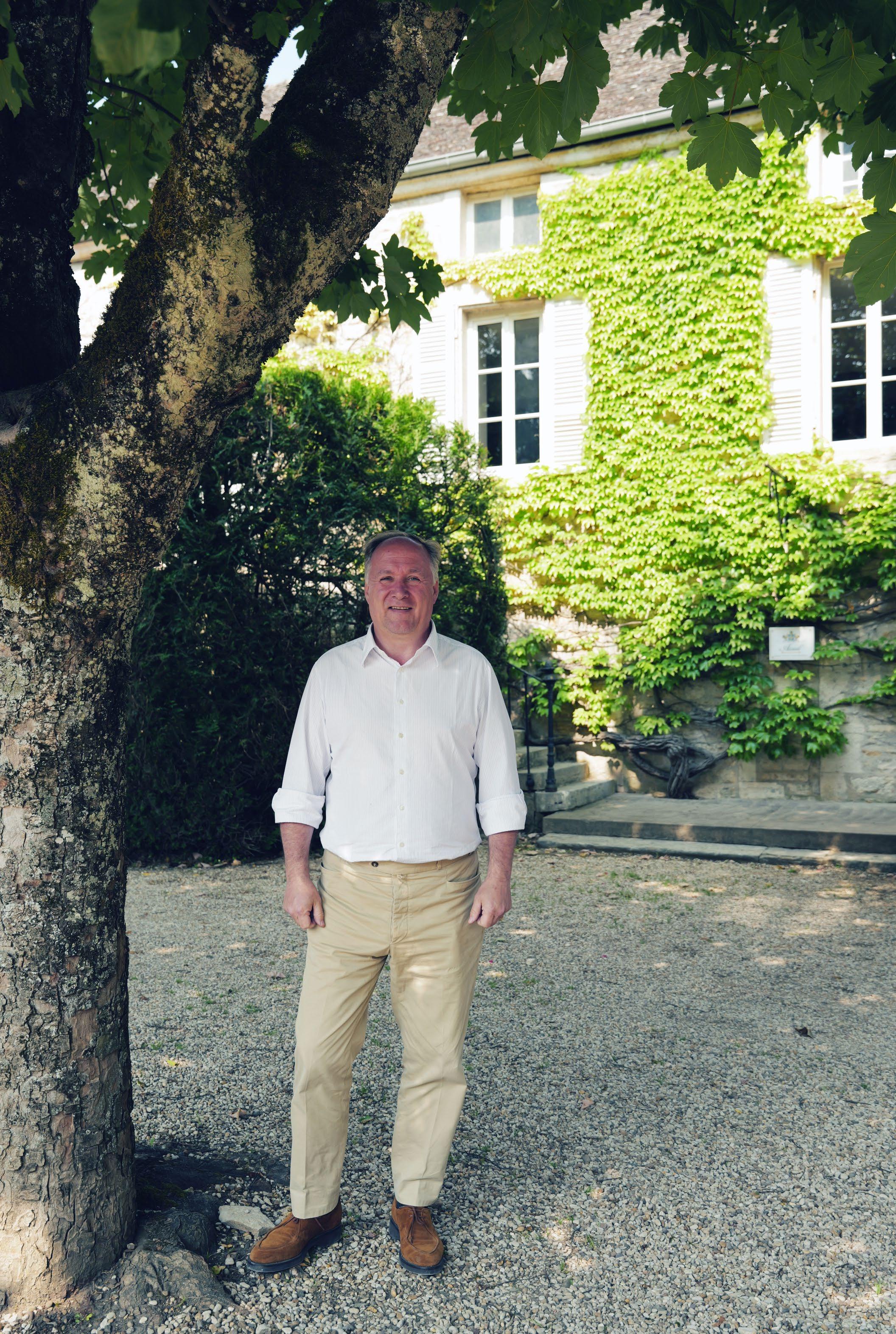
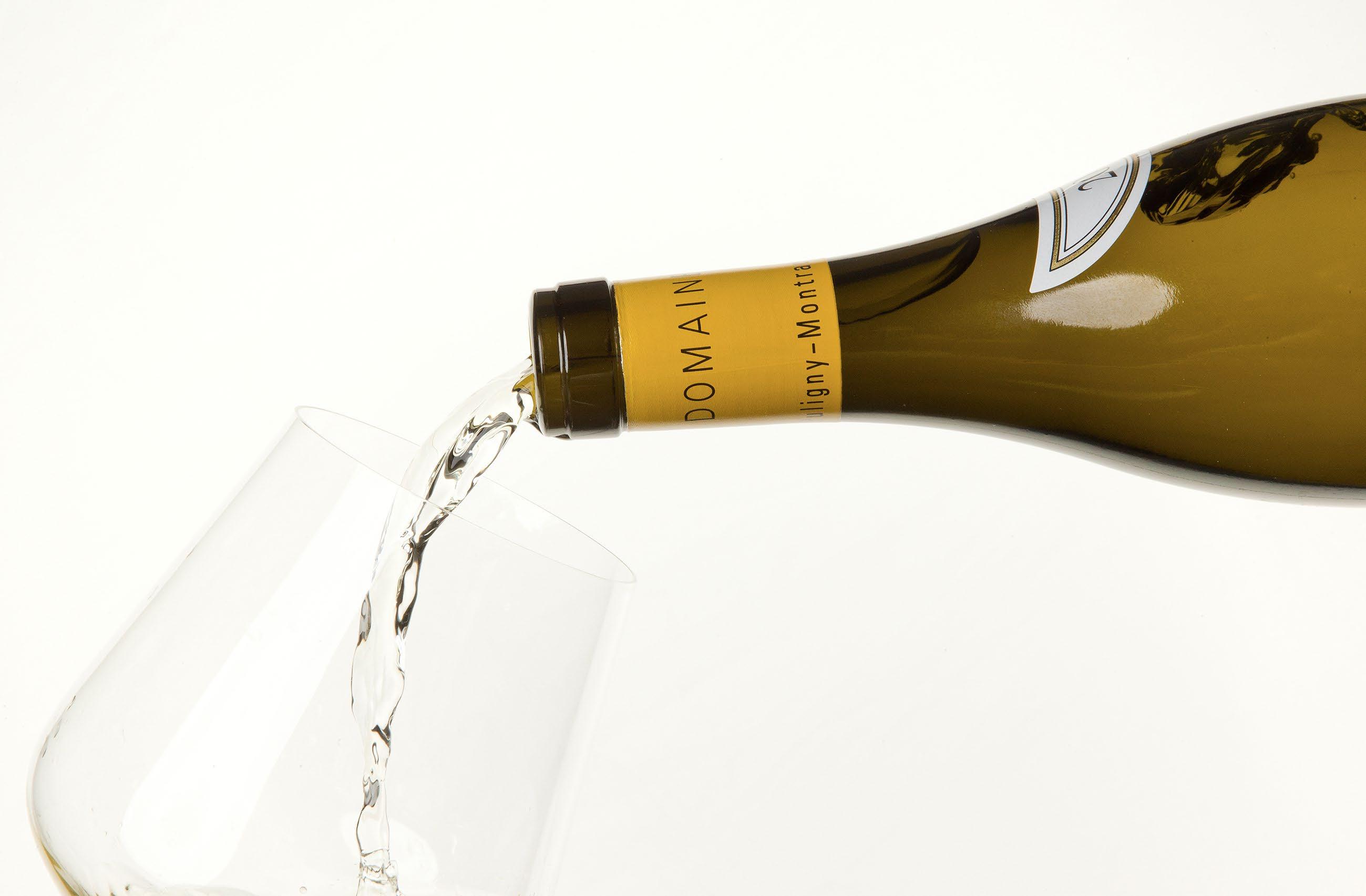
For Brice, Leflaive is more than a domaine. It’s a cultural messenger. “Inside terroir, there’s always culture. Visitors shouldn’t just come for the wine; they should walk the vineyards, feel what it’s like to live with nature.” He is also an active participant in events like Musique & Vin au Clos Vougeot, placing wine alongside music and art. “Because wine itself is culture,” he says simply.

Over the past decade, Leflaive’s vineyards have expanded, and its practices evolved. But today, the goal isn’t to become bigger. “In the last ten years we’ve extended projects from Chablis down to the Mâconnais. But the most important project is always the same: to make the very best wine we can, every single year.”
ブリスにとって、ルフレーヴは単なるワイナリーではない。文化の 使者でもある。「テロワールの中には、いつも文化があります。 こ こを訪れる人には、ワインだけではなく、畑を歩き、自然と共にあ る時間を感じてほしい。」彼は音楽とワインの祭典「Musique & Vin au Clos Vougeot」にも積極的に参加し、ワインと音楽、芸術 を並列に置く。 「ワイン自体が文化だからです。」
10年の間に、ルフレーヴの畑は広がり、手法も進化した。 しかし、 今の目標は大きくなることではない。「私たちはこの10年で、シ ャブリからマコネまで新しいプロジェクトを広げてきました。でも 一番大切なのは、“毎年、私たちができる最高のワインを造ること” なんです。」
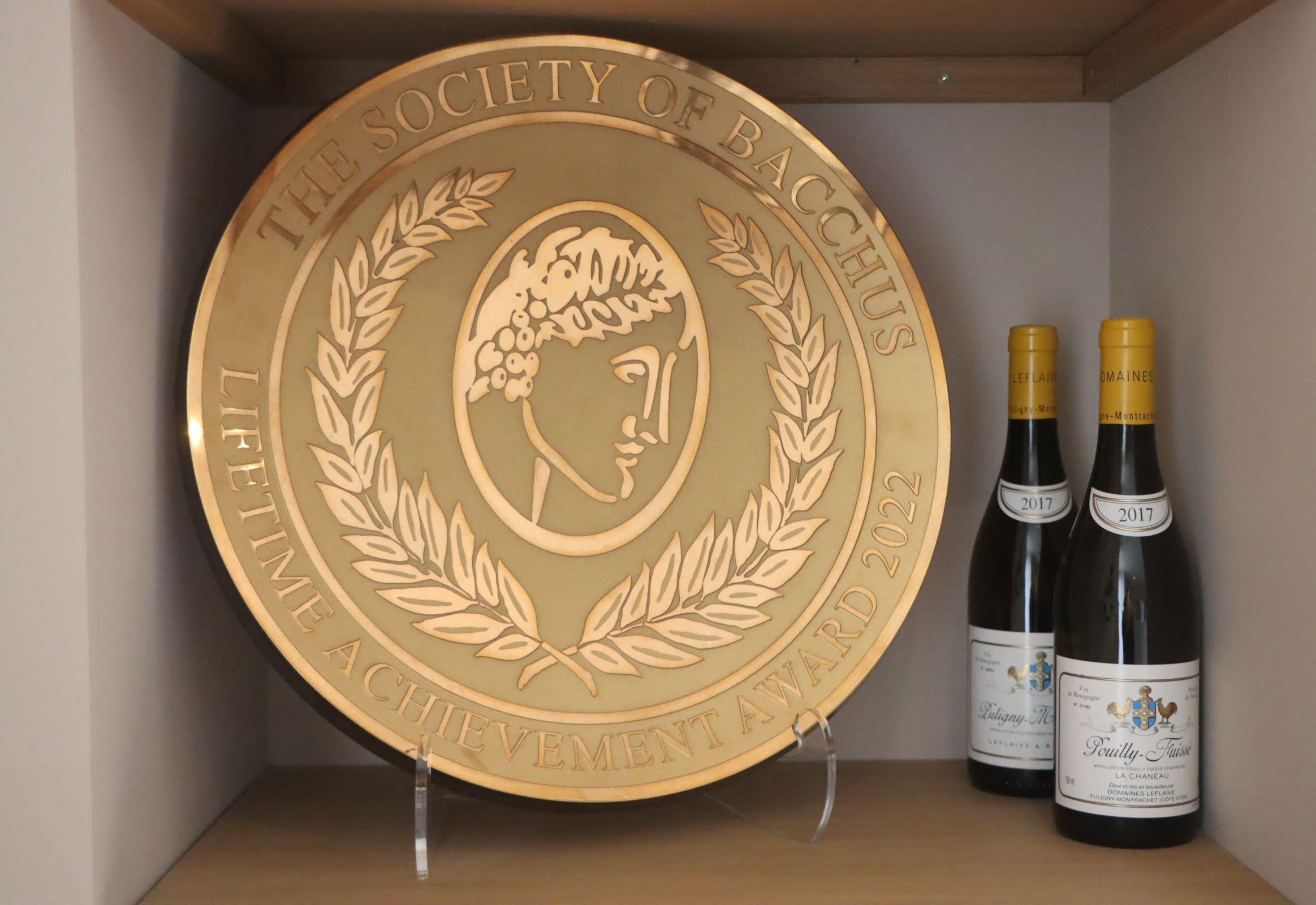
At the close of the conversation, Brice’s tone turns steady, but warm: “Change is necessary — but it must be careful. Some changes bring us closer to the fire; others are just ashes. Our task is to keep Domaine Leflaive’s flame alive, and let it burn through new climates, new times — always.”
インタビューの最後、ブリスは穏やかで、それでいて熱を帯びた声 で語った。「変わることは必要です。でも注意深くなければならな い。 変化の中には、炎に近づくものもあれば、灰に過ぎないものも ある。 私たちの使命は、ドメーヌ・ルフレーヴの炎を守り続け、 そ れを新しい時代、新しい気候の中でも燃やし続けることです。」 変わるために、忘れない
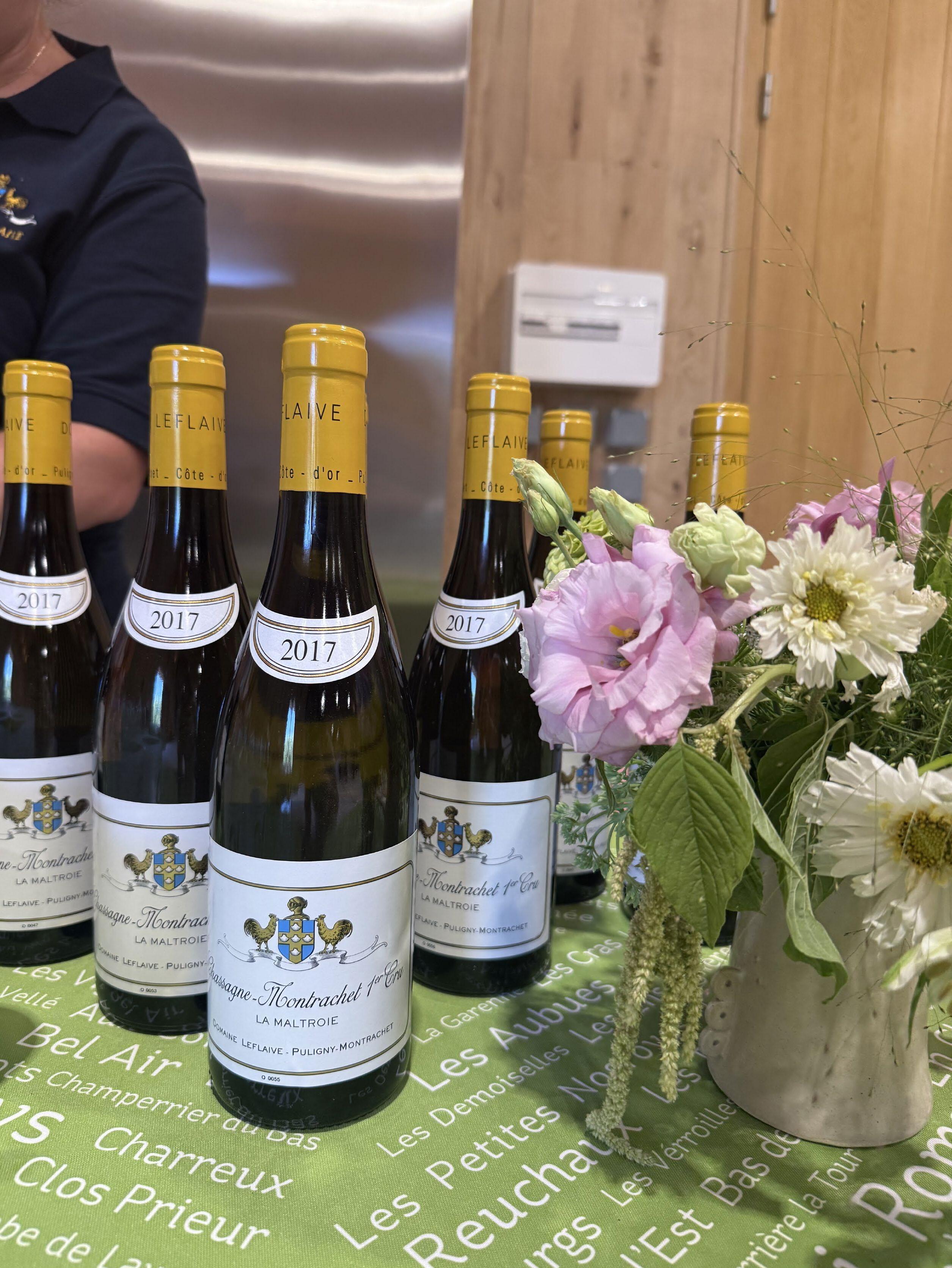

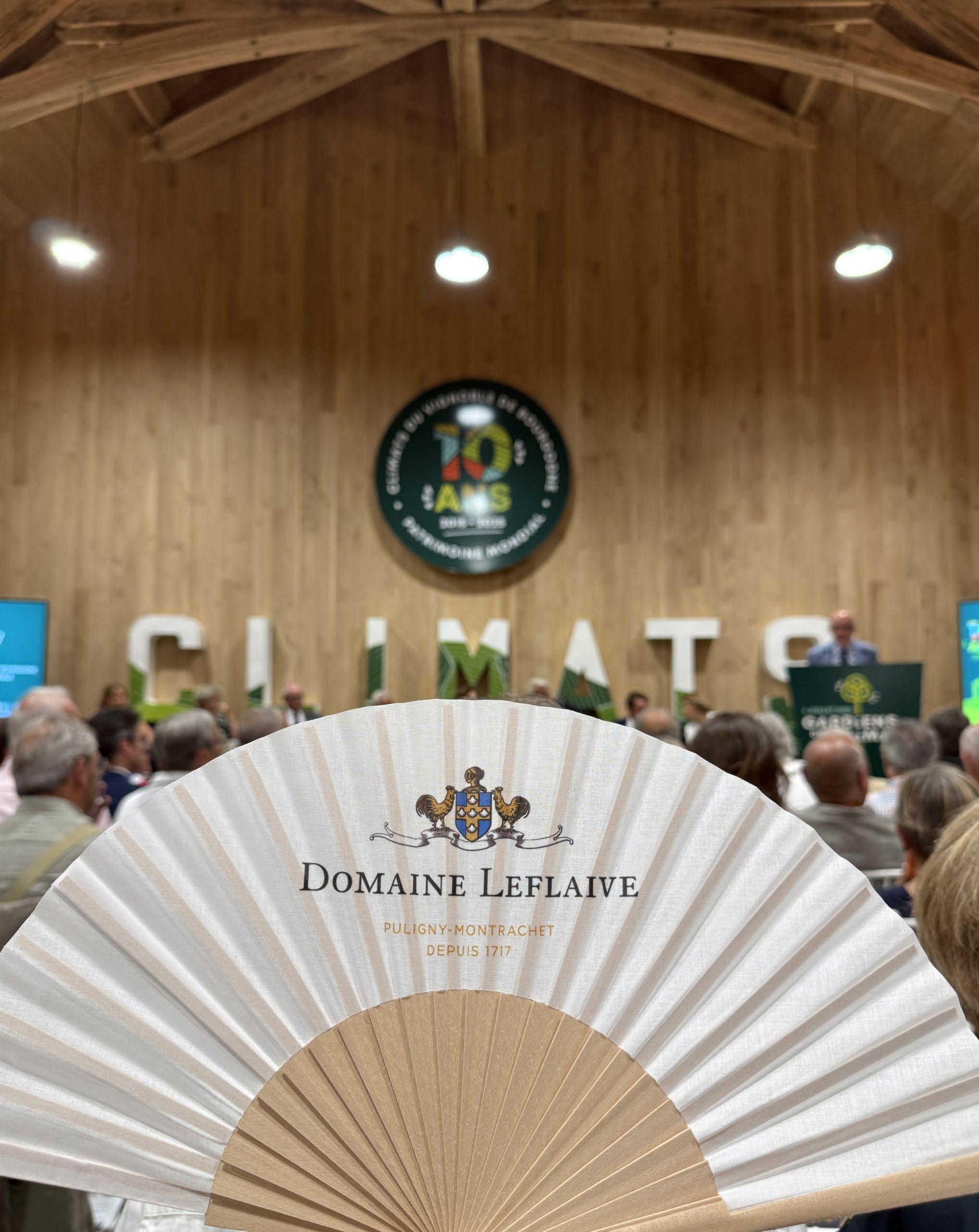

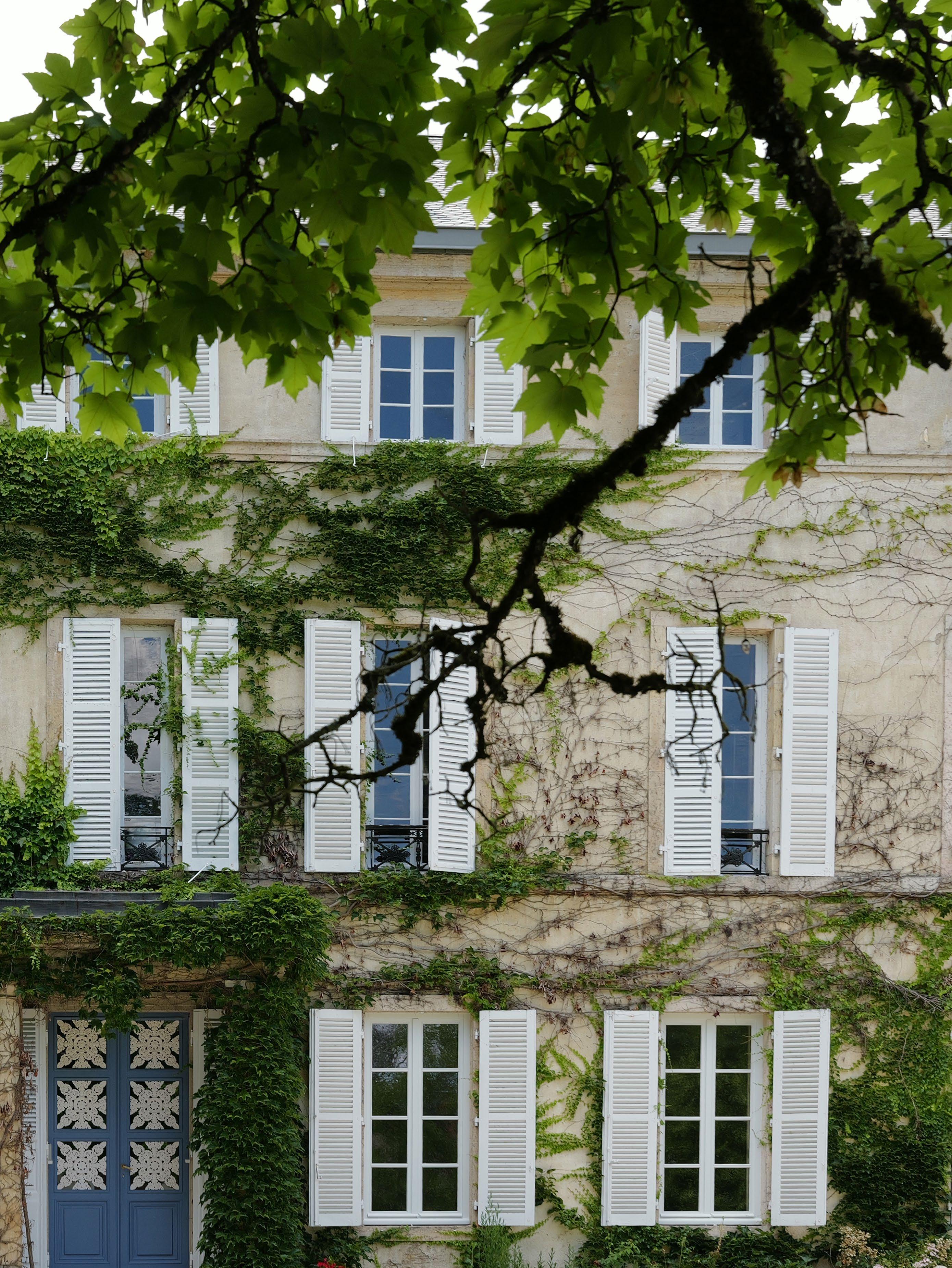
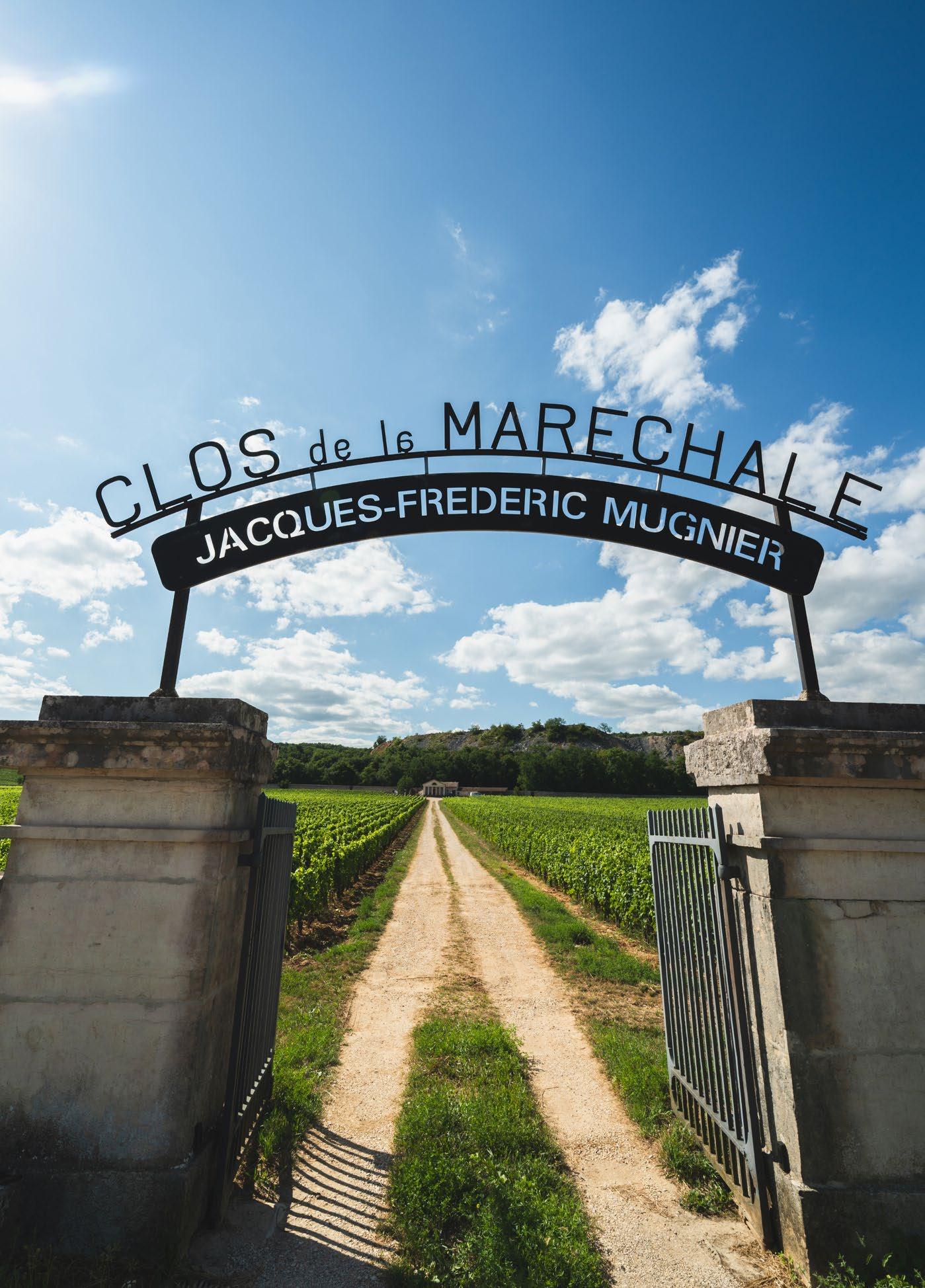
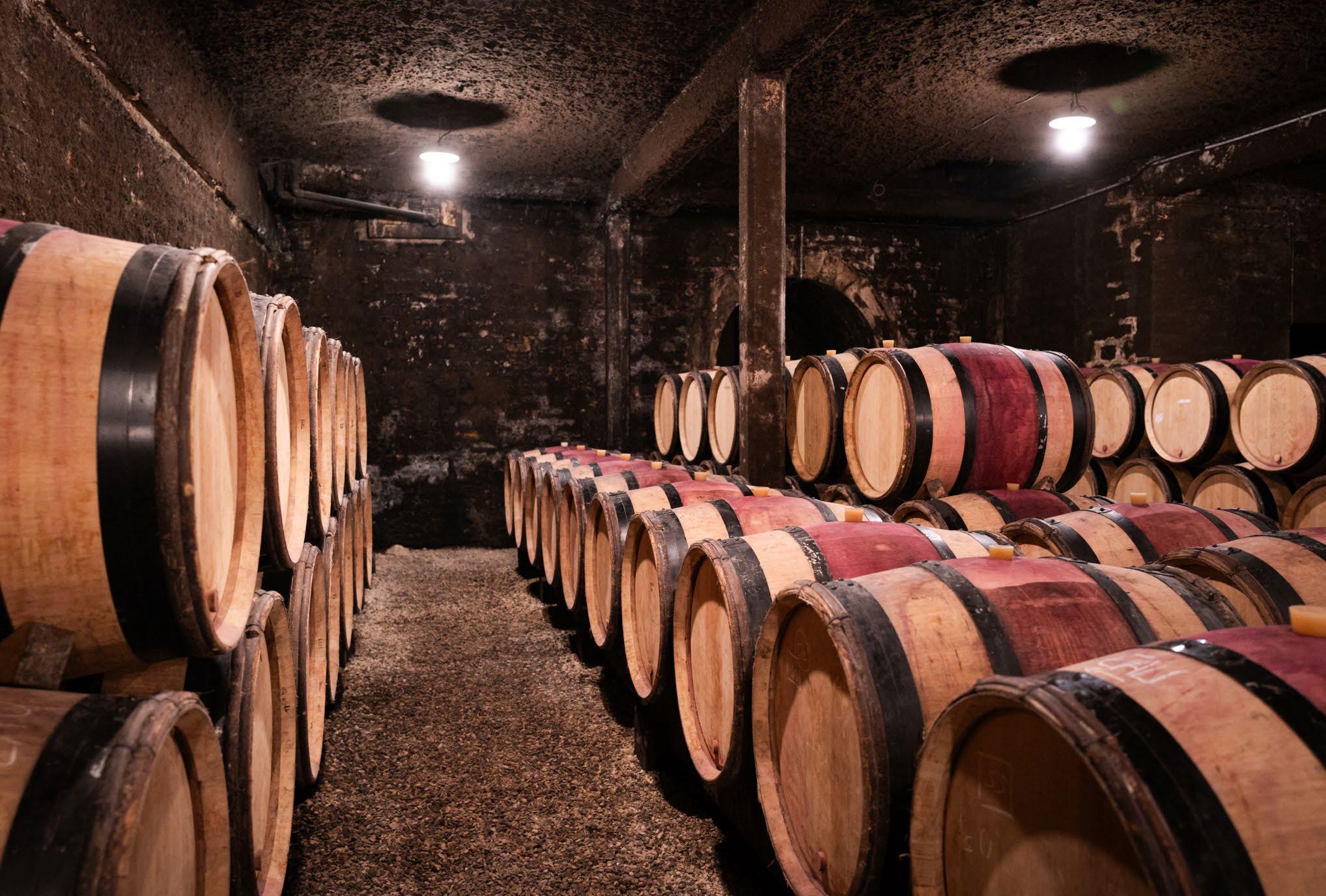
ワインは音楽に、大自然は芸術家に
At Domaine J.-F. Mugnier in Chambolle-Musigny, Frédéric Mugnier approaches wine not as an act of creation but as an expression of nature. A former oil engineer and airline pilot, he turned to his family vineyards seeking a purpose rooted in clarity and human connection. For him, great wine is less about technique than patience, restraint, and fidelity to place—allowing the terroir itself to speak. Mugnier often compares wine to music: its beauty lies not in isolated notes but in harmony. Guided by curiosity, sincerity, and respect for time, he sees himself as a guardian of nature’s artistry.
シャンボール=ミュジニーにあるドメーヌ J.-F. ミュニエでは、フレデリック・ミュニエ氏がワイ ンを「創造」ではなく「自然の表現」として捉え ています。石油エンジニアやパイロットとしての 経歴を経て、彼は家族の畑に戻り、人とつながる 明確な目的を求めました。ワイン造りにおいて大 切なのは技術よりも、忍耐と節度、そしてテロワ ールへの忠実さ。彼はワインを音楽にたとえ、調 和こそが真の美しさだと語ります。好奇心と誠実 さ、そして時間への敬意を持ち、自然の芸術性を 守ることが彼の哲学です。
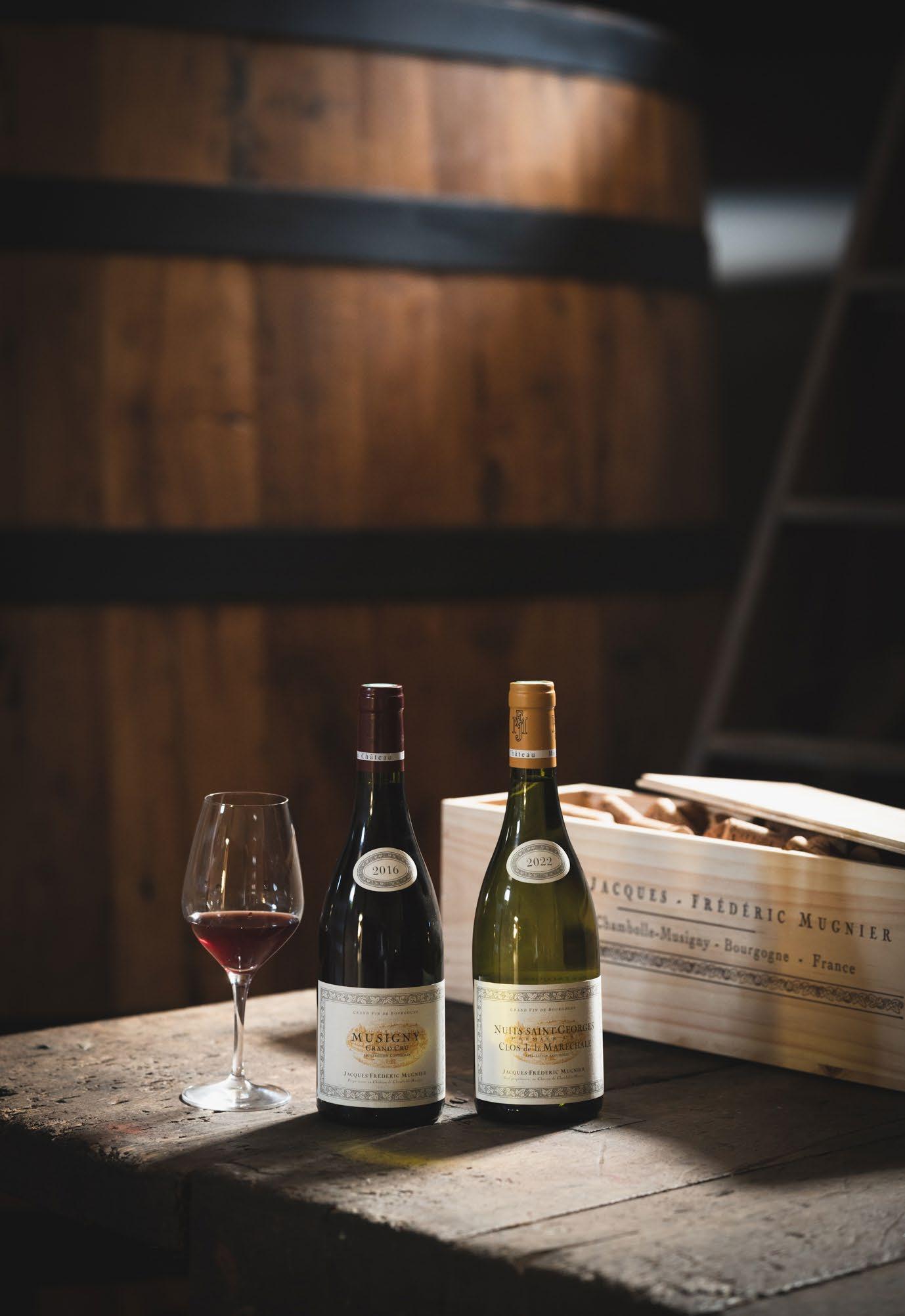
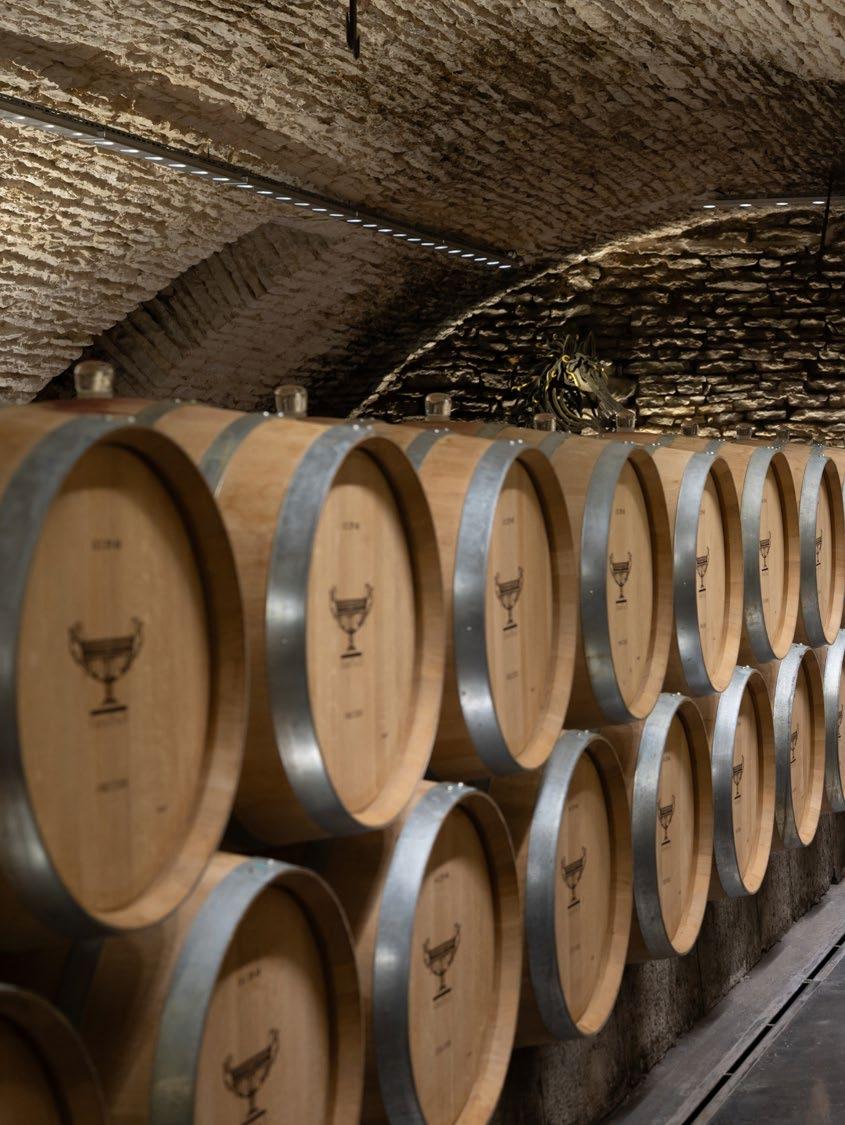
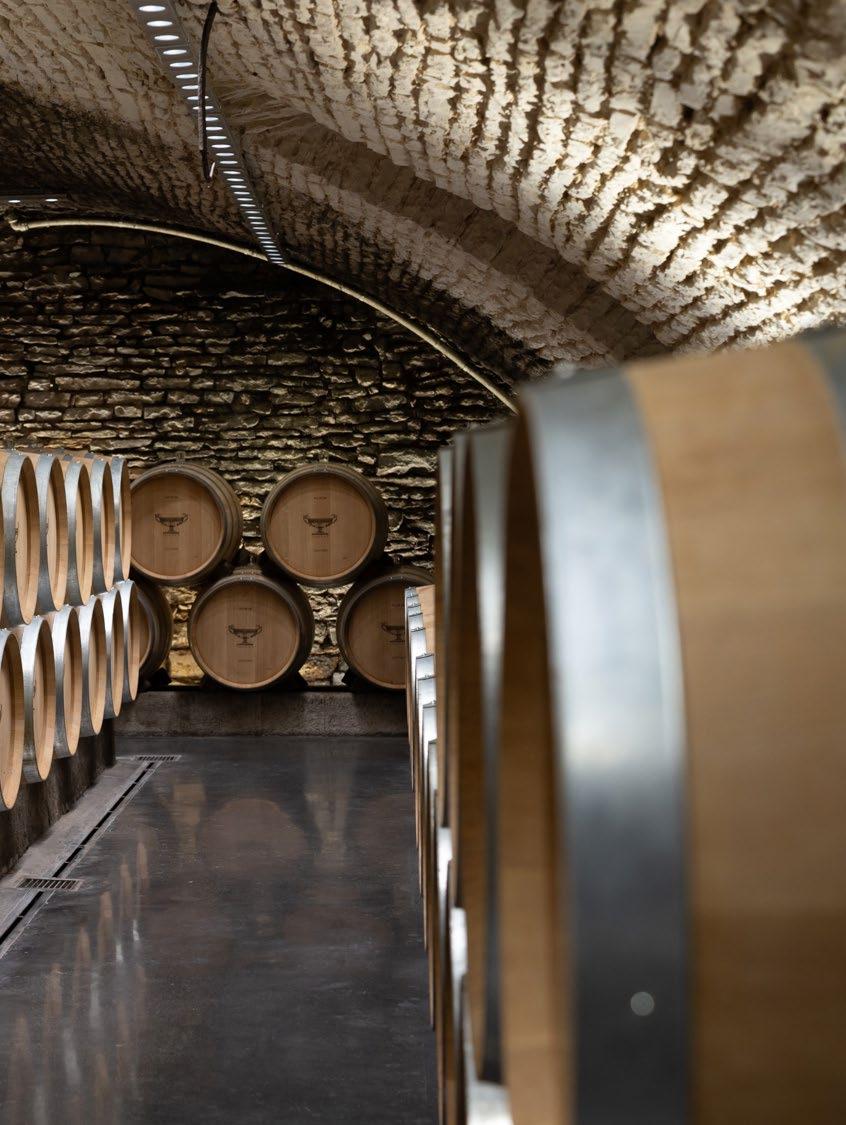
In Vosne-Romanée, at the very heart of Burgundy, Domaine Gros Frère et Sœur stands as one of the region’s most prestigious estates. Founded in 1963 by Gustave Gros and today led by Bernard Gros, the domaine embodies a rare combination of tradition, precision, and artistry.
Its 20 hectares include some of the Côte de Nuits’ most hallowed terroirs: Richebourg, Grands-Échezeaux, Échezeaux, and Clos de Vougeot, alongside treasured parcels in Vosne-Romanée and Chambolle-Musigny. These holdings, cultivated with profound respect for nature, yield wines of exceptional purity and character.
Bernard Gros is celebrated for his meticulous approach: careful hand-harvesting, minimal intervention in the cellar, and judicious oak aging that refines structure while preserving elegance. The result is a collection of wines that are sensual, layered, and unmistakably expressive of their origin.
From the silk and perfume of Richebourg to the power and depth of Clos de Vougeot, each cuvée reflects its unique vineyard while sharing a signature style—generous, refined, and built to age gracefully.
More than wine, Domaine Gros Frère et Sœur offers a lineage of excellence, carrying Burgundy’s heritage into the future with unwavering devotion.

by

ブルゴーニュの中心地ヴォーヌ=ロマ ネに位置するドメーヌ・グロ・フレー ル・エ・スールは、地域を代表する名 門のひとつです。1963年にギュスタ ーヴ・グロが創設し、現在はベルナー ル・グロが率い、伝統と精緻さ、そし て芸術性を兼ね備えたワイン造りを続 けています。
約20ヘクタールの畑には、リシュブー ル、グラン=エシェゾー、エシェゾー、 クロ・ド・ヴージョといった偉大なグ ラン・クリュのほか、ヴォーヌ=ロマ ネやシャンボール=ミュジニーの珠玉 の区画が含まれています。自然への敬 意を基盤とする栽培が、その真髄です。
収穫は手作業で丁寧に行われ、醸造は 最小限の介入、熟成は繊細さを守るオ ーク樽。ベルナール・グロの哲学によ り、ワインは官能的で多層的、そして テロワールの声を力強く響かせます。
リシュブールの絹のような芳醇さ、ク ロ・ド・ヴージョの堂々たる奥行き。 それぞれの個性を示しながらも、共通 するのは気品と長期熟成に耐える風格 です。
ドメーヌ・グロ・フレール・エ・スー ルの一杯には、ブルゴーニュの遺産と 未来が息づいています。
At the heart of Burgundy, Domaine Méo-Camuzet has long been admired for its deep respect for terroir and its expressive, time-honored wines. Beyond the vineyard, the domaine also fosters dialogue between tradition, creativity, and contemporary culture.
One such initiative is the Young Artists’ Prize, launched in collaboration with ENSA Dijon. Every two years, students and recent alumni are invited to reinterpret the intangible heritage of the Climats de Bourgogne through art. The prize culminates in an exhibition at the Cité des Climats et Vins de Bourgogne in Beaune, offering the public a vibrant perspective on heritage and creativity.
This year’s winning work, Le Vin de la Terre – Santé ! by Ma Jie (b.1993, China), is a striking installation in clay and steel that links the workers’ hand to the grape seed—a symbolic gesture of gratitude to Mother Earth. The next edition will open on 13 November, just before the renowned Hospices de Beaune auction, and will run until mid-January, presenting the twelve artists of the competition.
ブルゴーニュの中心に位置するドメーヌ・メオ=カミュゼは、長年にわたり テロワールへの深い敬意と表現力豊かなワインで知られています。同時に、 伝統と創造性、そして現代文化の対話を育む存在でもあります。
その一環として設立されたのが、ディジョン美術学校(ENSA Dijon)との 共同企画である若手アーティスト賞です。2年ごとに開催され、在校生や卒 業生が「ブルゴーニュのクリマの無形遺産」をテーマに作品を提案します。
受賞後には、ボーヌのCité des Climats et Vins de Bourgogneで展覧会 が開かれ、遺産と創造性の新たな視点を一般に紹介しています。
今年の受賞作は、中国出身(1993年生)の馬婕(Ma
Jie)による《大地の ワイン ― サンテ!》。粘土と鉄を用いたインスタレーションは、労働者の 手と葡萄の種を結びつけ、大地への感謝の想いを象徴的に表現しています。
次回の展覧会は11月13日に開幕し、名高いボーヌのオスピス競売の直前 から翌年1月中旬まで開催され、12名のアーティストが参加予定です。
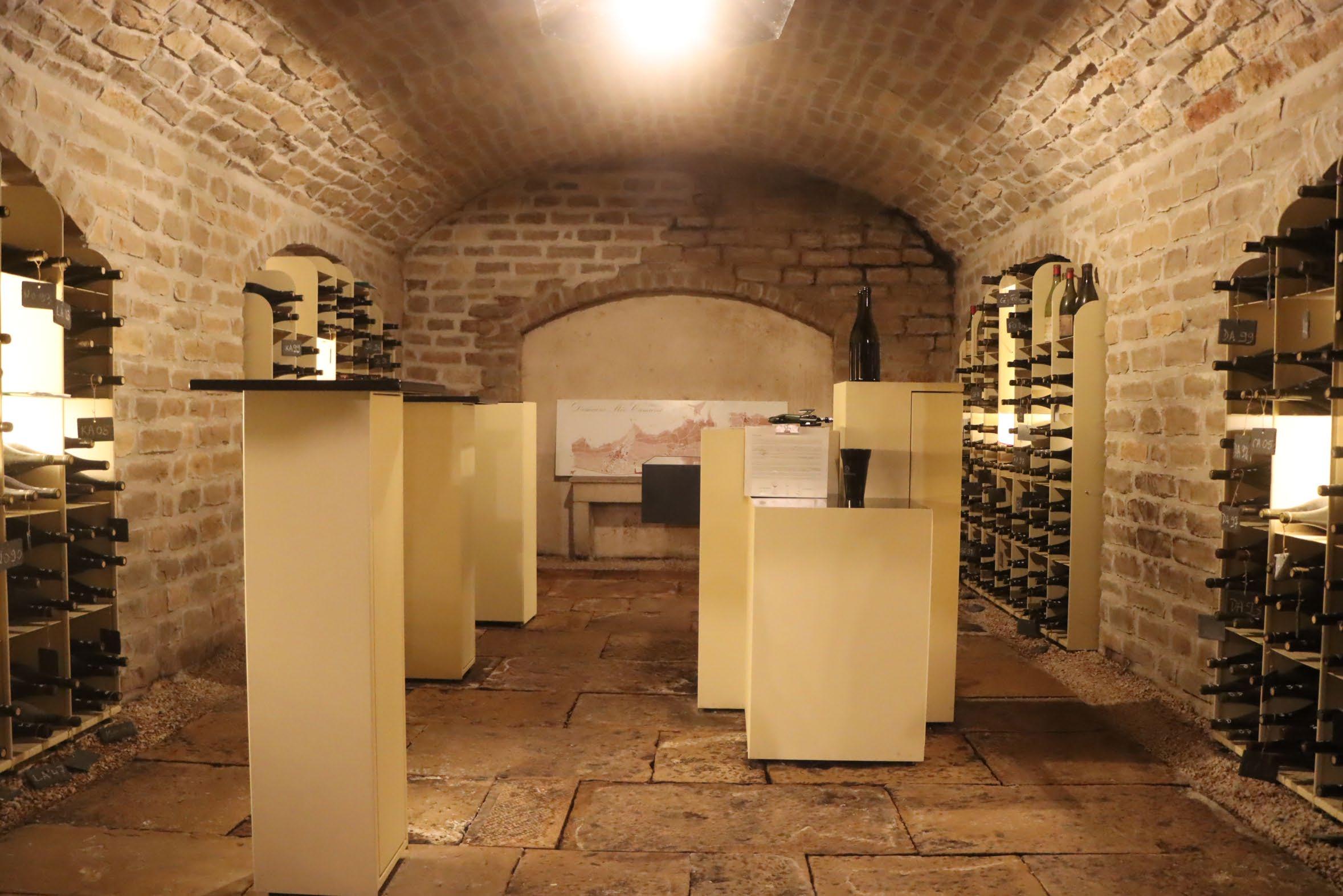


Méo-Camuzet and the Young Artists’ Prize
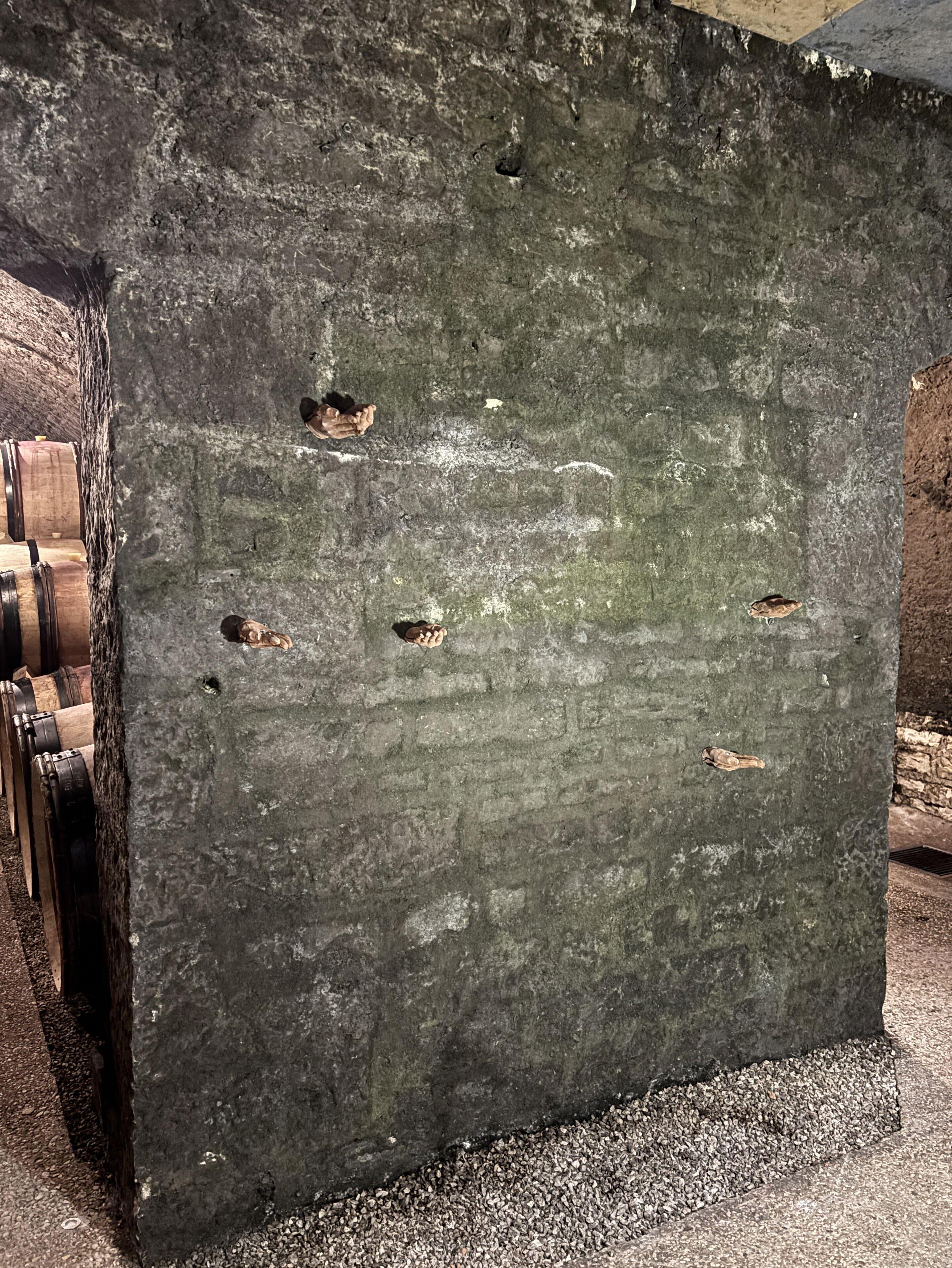
ブルゴーニュでは、葡萄畑からギャラリーへと芸術 が息づき、遺産が新たな表現を芽吹かせる。

In Burgundy, artistry flows from vineyard to gallery, where heritage inspires new voices.
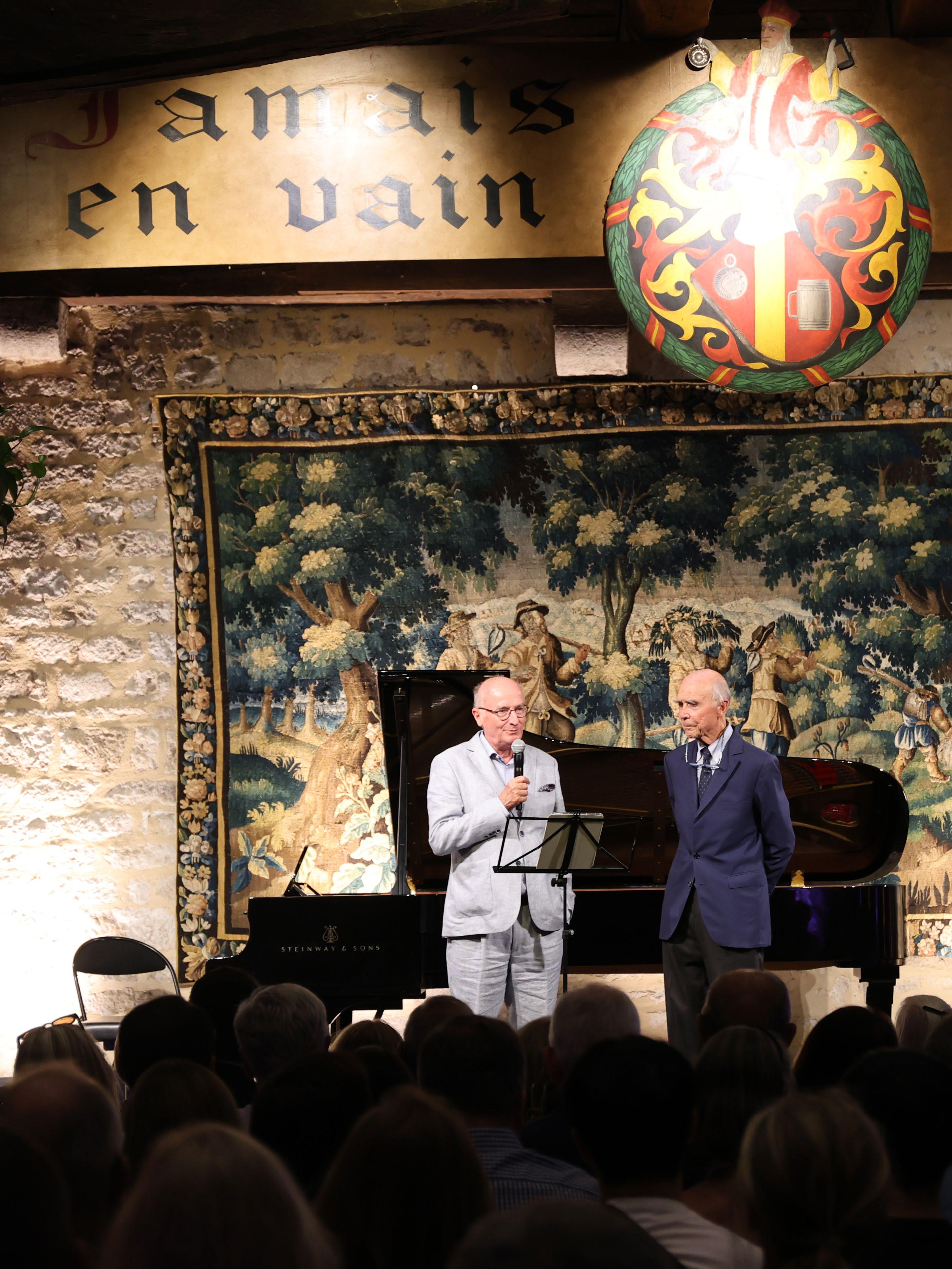
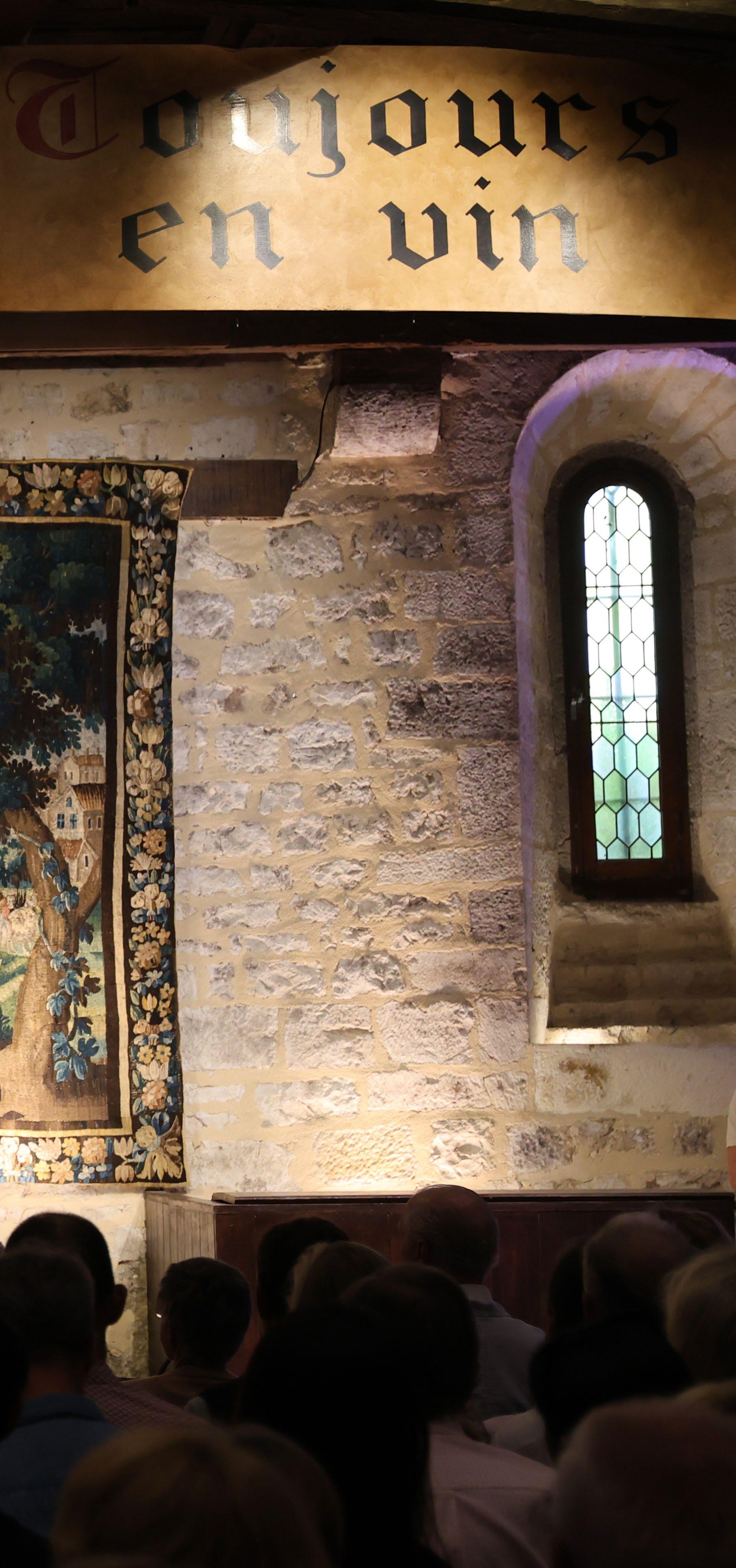
Since its inception in 2008 by Aubert de Villaine and Bernard Hervet, Musique & Vin has been conceived as more than a sequence of concerts. It is an experiment in cultural poetics—rearticulating the French art de vivre. Music and wine, two of humanity’s oldest expressive languages, are placed in dialogue with land, history, and the ephemeral nature of performance.
The setting itself, the 12th-century Clos de Vougeot, embodies this ambition. Once a monastic winery, the château becomes a resonant chamber of memory—oak barrels and stone vaults sharing space with fugues and arias. Here, the ancient and the immediate collapse into a singular present. Music ceases to be staged; it becomes spatial rhetoric.

テロワールから始まる芸術 音楽と生の美学
2008年、オベール・ド・ヴィレーヌ とベルナール・エルヴェによって創設 されたこのフェスティバルは、単なる コンサートの連続ではなく、「フラン ス的生活芸術(l’art de vivre)」を現 代に再提示する試みであった。音楽と ワイン——二つの古くからの感性的言 語が、大地、歴史、そして演奏という 儚い瞬間と交差する場である。
舞台となる12世紀のクロ・ド・ヴー ジョ城は、まさにその象徴である。か
つて修道院のワイン醸造所であったこ の城は、樽や石造りの空間とフーガや アリアが響き合う共鳴の場。過去と現 在が重なり合い、音楽は単なる演奏か ら「空間的修辞」へと変貌する。
The festival opened with its Jeunes Talents series, dedicated to nurturing the next generation of musicians. German mezzo-soprano Marlen Bieber and American flutist Martha Chan, joined by the Orchestre Dijon Bourgogne under the narration of Pierre Charvet, offered a performance that blended technical brilliance with emotional resonance.
What followed was a week of encounters between masters and audiences: Yuja Wang, Jean-Yves Thibaudet, and Sunwook Kim at the piano; Gautier Capuçon on cello; the Hagen Quartet; and the Orchestre des Climats de Bourgogne. Among the highlights was June 26 in Beaune, when Wang and Capuçon performed Rachmaninoff and Grieg in the courtyard of the Gothic Hôtel-Dieu—a night where music and architecture merged in dreamlike harmony.
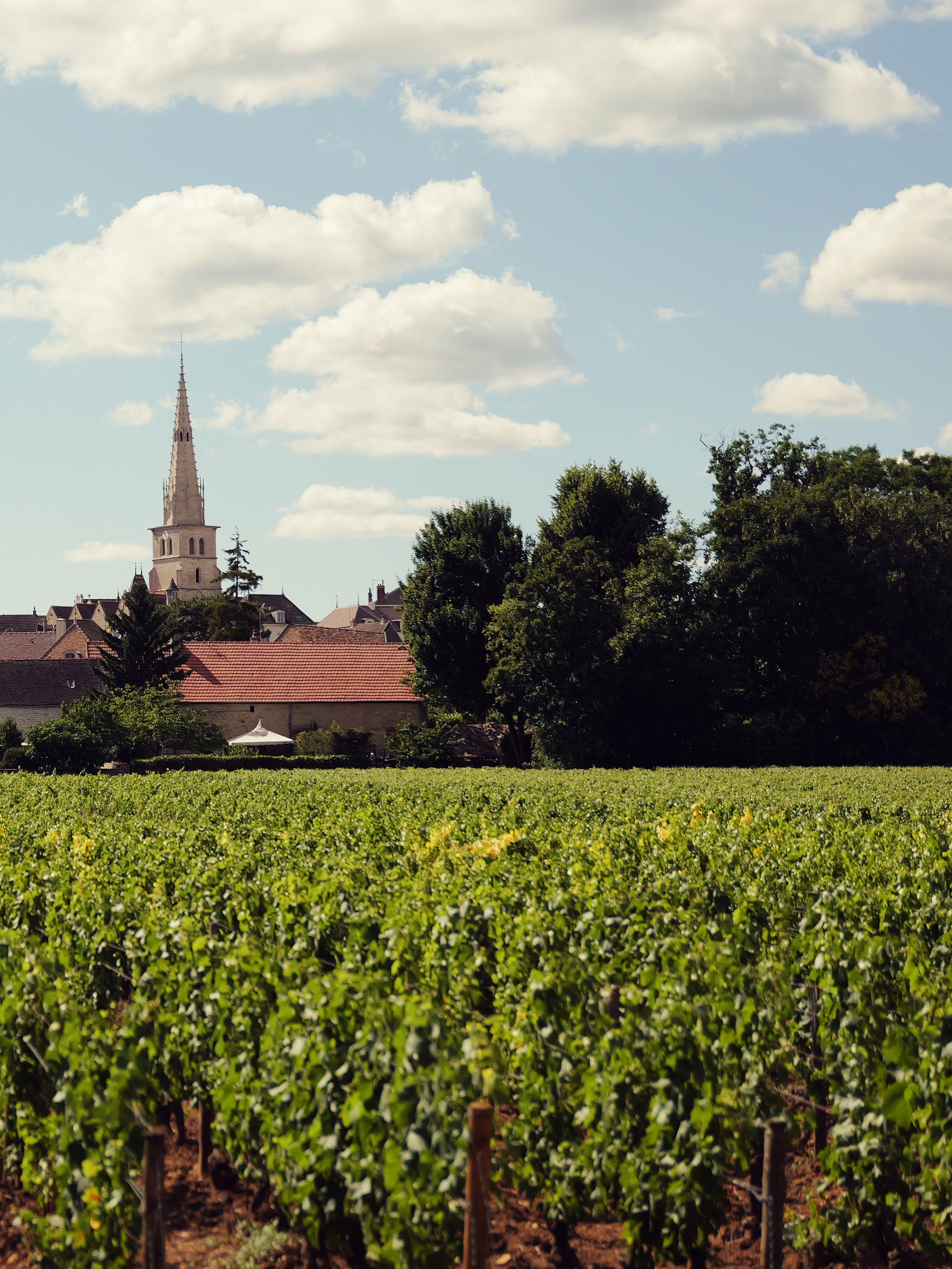
若き才能と巨匠たち:時をつなぐ演奏
フェスティバルは「Jeunes Talents(若き才能)」シリ ーズで幕を開けた。ドイツ出身のメゾソプラノ、マルレ ン・ビーバーとアメリカのフルート奏者マルタ・チャン が、オルケストル・ディジョン=ブルゴーニュの伴奏と ピエール・シャルヴェの解説を得て、若々しい表現力と 豊かな情感を響かせた。
会期中には、ユジャ・ワン、ジャン=イヴ・ティボーデ、 キム・ソヌクといった世界的ピアニスト、チェリストの ゴーティエ・カプソン、ハーゲン・クァルテット、そし てオルケストル・デ・クリマ・ド・ブルゴーニュが登場。 なかでも6月26日、ボーヌのゴシック建築オテル・デ ューの中庭で行われたワンとカプソンによるラフマニノ フとグリーグの演奏は、建築と音楽が夢幻のように融合 した特別な一夜となった。
What distinguishes Musique & Vin is its devotion to the genius loci—the spirit of place. Each venue is not a backdrop but an active participant in the performance. From the vaulted hall of Clos de Vougeot, where Mozart reverberates through stone and oak, to the ruins of SaintVivant Abbey, where a single piano note brushes lichencovered walls, to village chapels and Meursault cellars— music becomes tactile, rooted, and site-specific.
Here, space breathes, listens, and speaks. Each concert unfolds as a ritual where listening becomes a mode of presence.
The daily tastings are not an interlude but an essential rhythm of the festival. Glasses of Chambertin, VosneRomanée, and Meursault are poured beneath the evening light, inviting dialogue with winemakers about vintage, climate, and philosophy. Each sip becomes a conversation, each bottle a liquid archive of culture.
The charity auction, organized by Bonhams Cornette de Saint-Cyr, amplifies this ethos. Featuring rare wines and historical instruments, it raised funds for the Instrumental Fund and the training of young musicians. More than philanthropy, it is a model of sustainable cultural ecology, where luxury and legacy are aligned with purpose.
空間が舞台となる: 場の精神と共鳴する音
このフェスティバルの真髄は、genius loci(場の精神) を重んじる姿勢にある。クロ・ド・ヴージョの大広間で は、石と木を震わせるモーツァルトの響き。サン=ヴィ ヴァン修道院の廃墟では、風化した壁面にそっと重なる ピアノの一音。ムルソーの教会やカーヴでは、音楽が大 地に根づき、手触りを持つ体験となる。
ここで空間は中立ではなく、生き、聴き、語る存在とな る。演奏は儀式となり、聴くことが「存在すること」の かたちになる。
ワインという文化的対話 コンサートに先立つ試飲会は、単なる余興ではなく、こ の祭を形づくるもう一つの核である。シャンベルタン、 ヴォーヌ・ロマネ、ムルソーのワインがグラスに注がれ、 造り手と訪問者がヴィンテージや気候、哲学について語 り合う。その一杯一杯が「液体の文化遺産」としての物 語を紡ぐ。
また、ボナムズ・コルネット・ド・サン=シールが主催 するチャリティオークションも重要な柱である。稀少な ワインや歴史的楽器が出品され、その収益は若手音楽家 や楽器基金の支援に充てられる。贅沢と遺産が「持続可 能な文化生態系」として結びつく瞬間である。

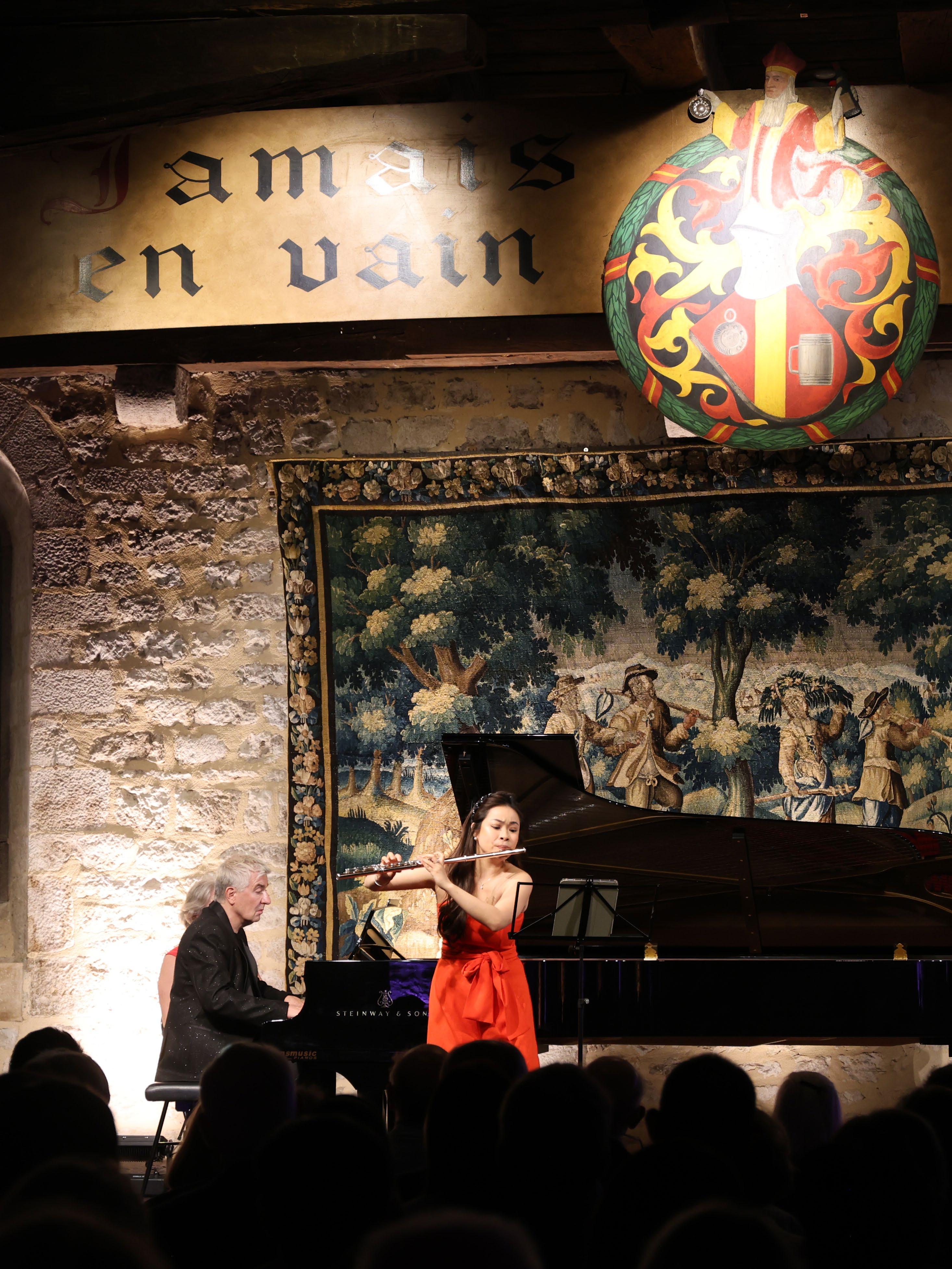

On June 20, 2025, during the internationally acclaimed Art Basel Basel fair in Switzerland, a special dialogue titled “Sensing Burgundy: Art, Culture and the Poetics of Place” was presented on the central Exchange Circle stage, drawing attention from across the art and design world.
The conversation was moderated by Olivia Matsumoto, editor-in-chief of GEN DE ART, whose unique perspective bridges contemporary art, editorial work, and regional cultural curation. As both editor and curator, Olivia guided the discussion with thoughtful, deeply contextual questions to each guest.
Rather than a group discussion, the format unfolded as a series of intimate, one-onone dialogues between Olivia and each guest: Miwa Komatsu, a renowned Japanese contemporary artist, and Emmanuel Dupont, a French architect based in Burgundy. The flow of the event allowed each voice to resonate with clarity, highlighting individual perspectives on spirituality, memory, and the poetic essence of place.
2025年6月20日、スイス・バーゼルで開催され た国際アートフェア「Art Basel Basel 2025」に おいて、《Sensing Burgundy:芸術・文化・テ ロワールの詩的交差点(Sensing Burgundy: Art, Culture and the Poetics of Place)》と題された 特別対談イベントが、展覧会の中核セクションであ る 「Exchange Circle 」ステージにて華やかに披 露されました。
司会進行を務めたのは、《GEN DE ART》編集長 のオリビア・マツモト(Olivia Matsumoto)。対 談は、オリビアと二人のゲストそれぞれとのやりと りを軸に進行。日本の現代アーティスト 小松美羽 (こまつ・みわ) とのセッションでは、「自然と の対話」や「作品を通じた祈りの在り方」を掘り下 げ、建築家 エマニュエル・デュポン(Emmanuel Dupont) との対話では、「テロワールと空間記憶」 「建築が織りなす精神的地形」についての思索が展 開されました。
三者が一堂に会する形ではありましたが、会話の流 れは一貫してオリビアを軸とした一対一の連続的な 対話で構成されており、それぞれの内面と風土の接 点が、静かに丁寧に引き出されていきました。


Art Basel Basel 2025のExchange Circleステージにて、《GEN DE ART》編集長のオリビア・マツモト(左)、 アーティストの小松美羽(中央)、建築家のエマニュエル・デュポン(右)
霊性と自然のあいだにあるもの小松美羽の芸術的響き
The first half of the program focused on the thoughts and practices of Miwa Komatsu. Before the conversation began, the audience was immersed in a short film showcasing her work—a sequence that set the tone for what felt like a ritualistic experience.
Komatsu, whose art is deeply rooted in ancient Japanese spirituality and nature worship, has exhibited at the British Museum and other major international institutions. Her work is often seen as a symbol of cultural exchange and spiritual resilience.
When asked how she “listens to nature,” Komatsu shared:“I enter my creative state through meditation. For me, painting is itself a form of meditation. As I sink into deeper consciousness, visions appear before me—like a small
theater. That’s where each of my works begins.”
She added that while she does not consciously pursue repetition or rhythm, her body naturally aligns with certain motions:“When my focus deepens, my movements repeat naturally. It feels as if my body synchronizes with the rhythm of nature. That’s what I perceive as true sustainability.”
When asked why her works transcend cultural boundaries and resonate internationally, Komatsu reflected: “Traveling the world, I’ve noticed that all religions share the element of ‘prayer.’ Perhaps prayer and painting are both forms of innate human language— something that directly touches the heart.”
対談の前半は、小松美羽による発言を中心に展 開されました。冒頭では、彼女の作品世界を紹 介する映像が上映され、会場はまるで儀式のよ うな没入感に包まれました。
古代日本の信仰や自然霊性に深く根ざした小松 の芸術は、大英博物館などの国際的機関でも展 示され、グローバルな文化交流の象徴として評 価されています。
「自然の声を聴く」とはどういうことか、とい う問いに対し、小松は次のように語りました: 「私は瞑想を通じて創作の状態に入ります。私 にとって、描くという行為そのものが瞑想です。 深い意識に沈み込むと、小さな劇場のような光 景が見えてくるんです。それが私の作品の出発 点です。」
さらに、筆の動きについても彼女はこう述べま した: 「リズムや繰り返しを意図しているわけではな いのですが、集中が極まると自然と同じ動きが 続きます。体が自然のリズムと同期するような 感覚です。これこそが、私にとっての“サステ ナビリティ”なんです。」
エコロジー危機への芸術家としての応答につい て問われた際には、間もなく7月5日から札幌 芸術の森美術館で開催される新しい個展に言及 しました。その展覧会は、かつて北海道に生息 していたが1889年に絶滅した「エゾオオカミ」 に焦点を当てています。
「エゾオオカミは北海道の固有種でしたが、人 間の手によって絶滅してしまいました。私はア ーティストとして、自然に今も存在する精霊た ちの“代弁者”になりたい。彼らは私たちを見 守ってくれているし、“同じ過ちを繰り返すな” と訴えかけているのです。」
最後に、なぜ彼女の作品が文化を越えて世界中 で共鳴を呼ぶのかと尋ねられた際、次のように 締めくくりました: 「世界中を巡るなかで、どんな宗教にも“祈り” という共通項があると気づきました。もしかす ると、祈りも絵も、人間の奥底にある普遍的な 言語なのかもしれません。だからこそ、心に直 接届くのだと思います。」
Seated next to Komatsu was Emmanuel Dupont, co-founder of the architecture firm Atelier Zéro Carbone Architectes (AZCA) and a long-time resident of Burgundy since the early 2000s. With precise, philosophical language, Dupont responded to the theme of terroir, emphasizing the inseparable relationship between architecture, landscape, and cultural memory.
“2025 marks the 10th anniversary of the Burgundy ‘Climats’ being inscribed as a UNESCO World Heritage Site. It’s a time to reflect on the bond between humans and land. Architecture is a medium through which memory engages with contemporary life.”
Dupont is also the initiator of the regional art programme Festival Volcan de Nuits, which integrates art, land, and sustainable building into a holistic expression of place. In his view, space can serve as a vessel for continuing the spiritual identity of the land.
建築が織りなす風土の哲学
小松の隣に座ったエマニュエル・デュポンは、AZCA建築事務所の共同創設者であり、 2000年代初頭からブルゴーニュに拠点を置く建築家です。
彼は本対談のテーマである「風土」に対し、建築がいかにして自然・文化・地形記憶 と結びつくかという観点から、明快かつ哲学的な言葉で応答しました。
「2025年は、ブルゴーニュのクリマがユネスコ世界遺産に登録されて10周年にあ たります。まさに“人と土地の関係”を再考するタイミングです。建築とは、記憶を 現在に翻訳するための媒体なのです。」
彼が手がけた地域芸術祭「Volcan de Nuits」では、土地と建築、そして芸術の共生 を目指した実験的プロジェクトが展開されており、その場づくりは「精神性の継承」 として機能しています。

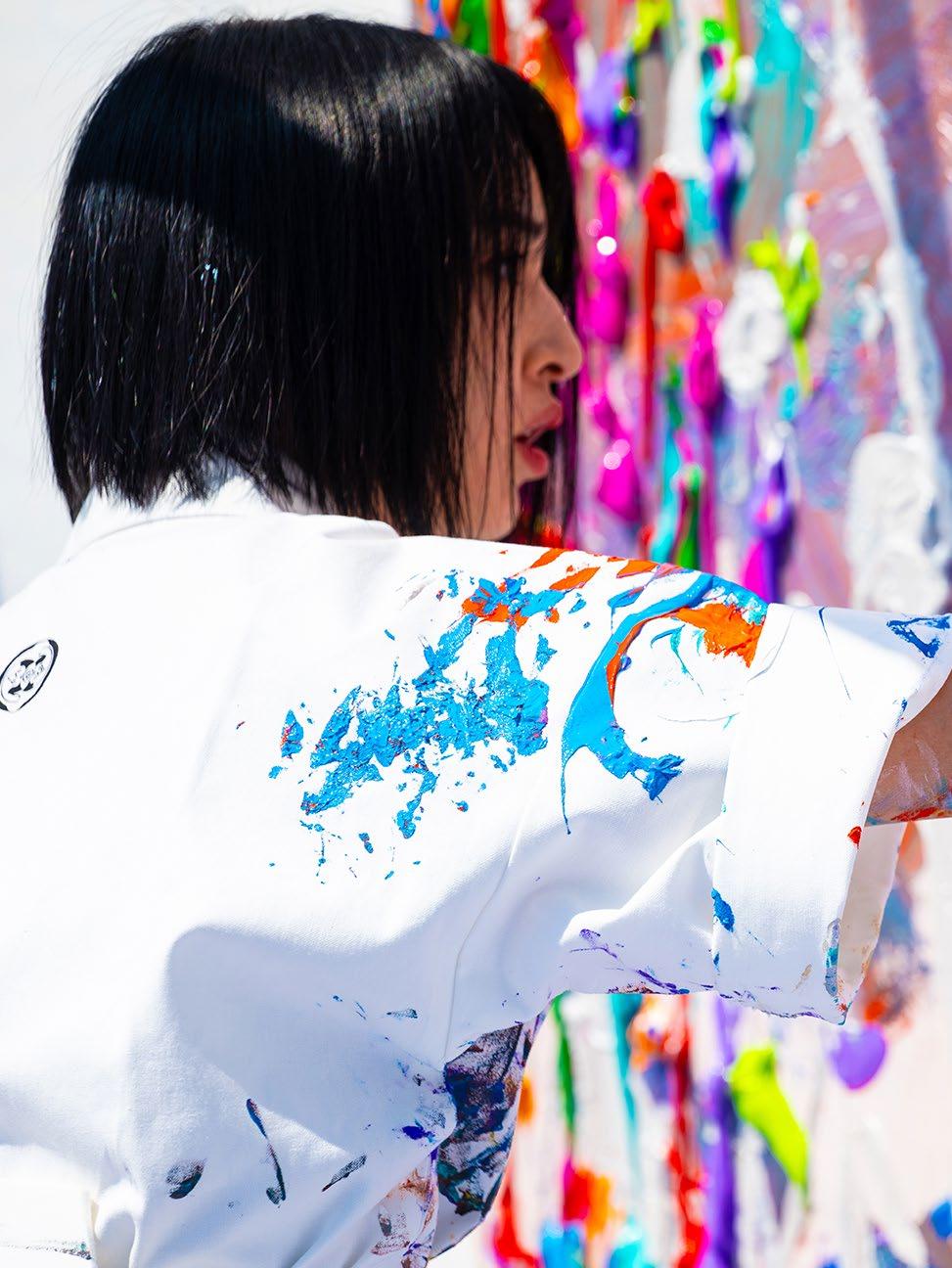
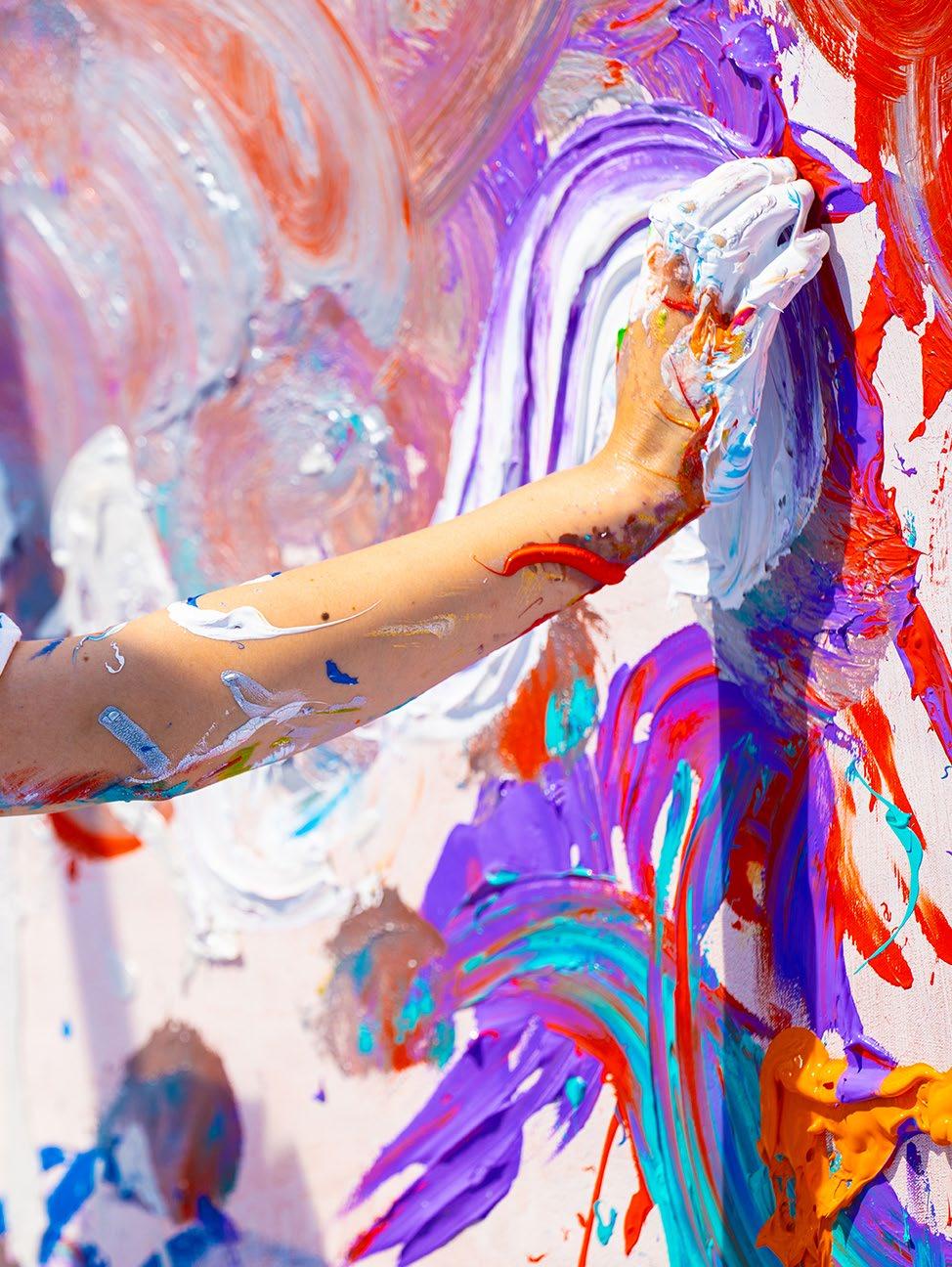

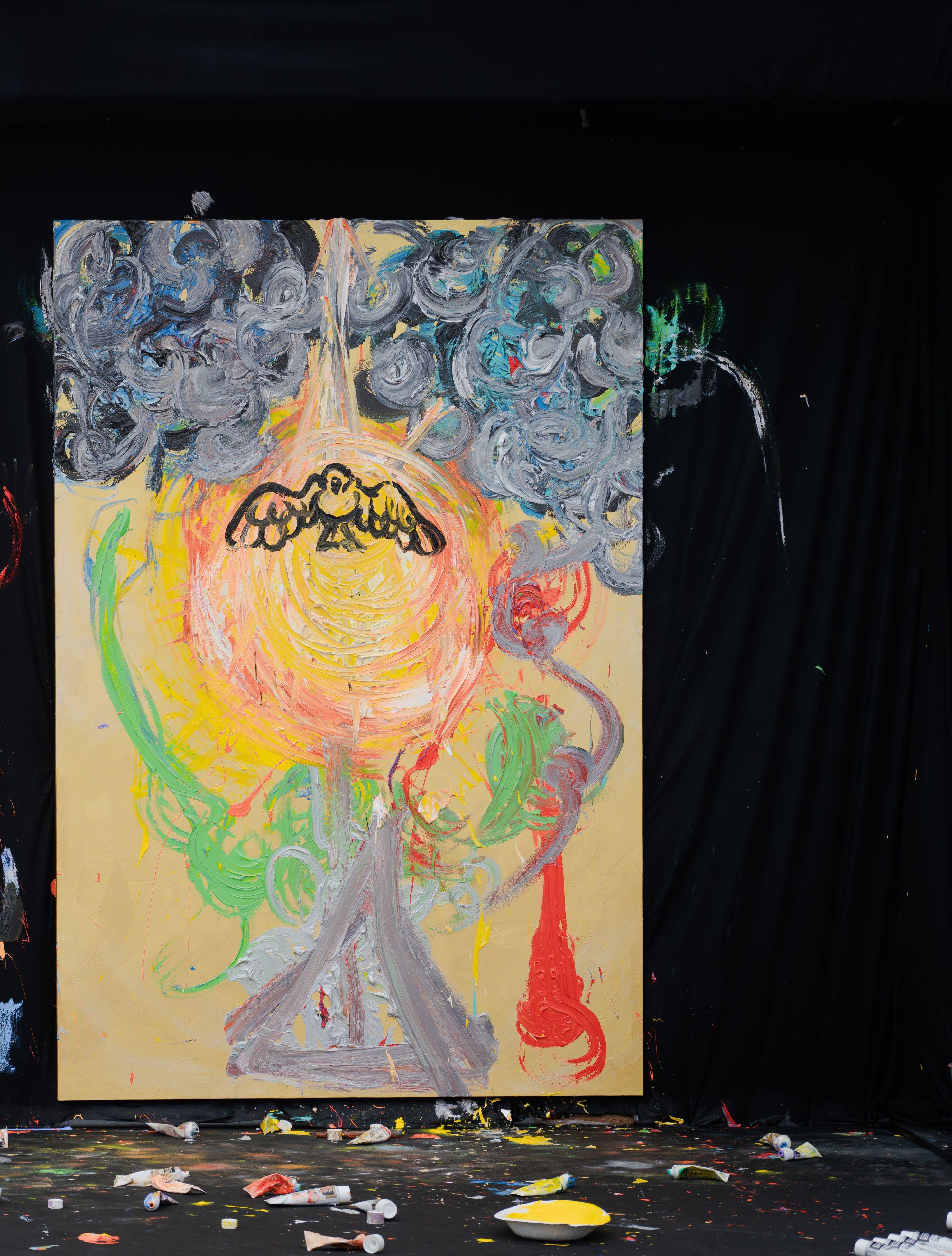

While the world’s major watch fairs continue to wrestle with questions of scale and cost, Geneva Watch Days (GWD) has quietly reached its sixth edition. What began in 2020 as an emergency response to the pandemic has matured into a distinctive fixture on the international horological calendar.
Unlike the centralized and rigid formats of traditional fairs, GWD thrives on decentralization, openness, and inclusivity. This year, a record 66 brands participated, transforming Geneva’s city center into an interconnected network of exhibitions. Hotel suites, workshops, and flagship boutiques became temporary stages, linked by the Rotonde du Mont-Blanc Pavilion—a lakeside hub that hosted public displays, media presentations, and collector gatherings. Most importantly, the Pavilion remained open to the public every day, free of charge, underscoring the fair’s ethos of transparency, accessibility, and shared culture.
For GEN DE ART, which focuses on the intersection of horology and contemporary culture, this year’s GWD reaffirmed how the fair has evolved beyond commerce into a cultural festival in its own right.
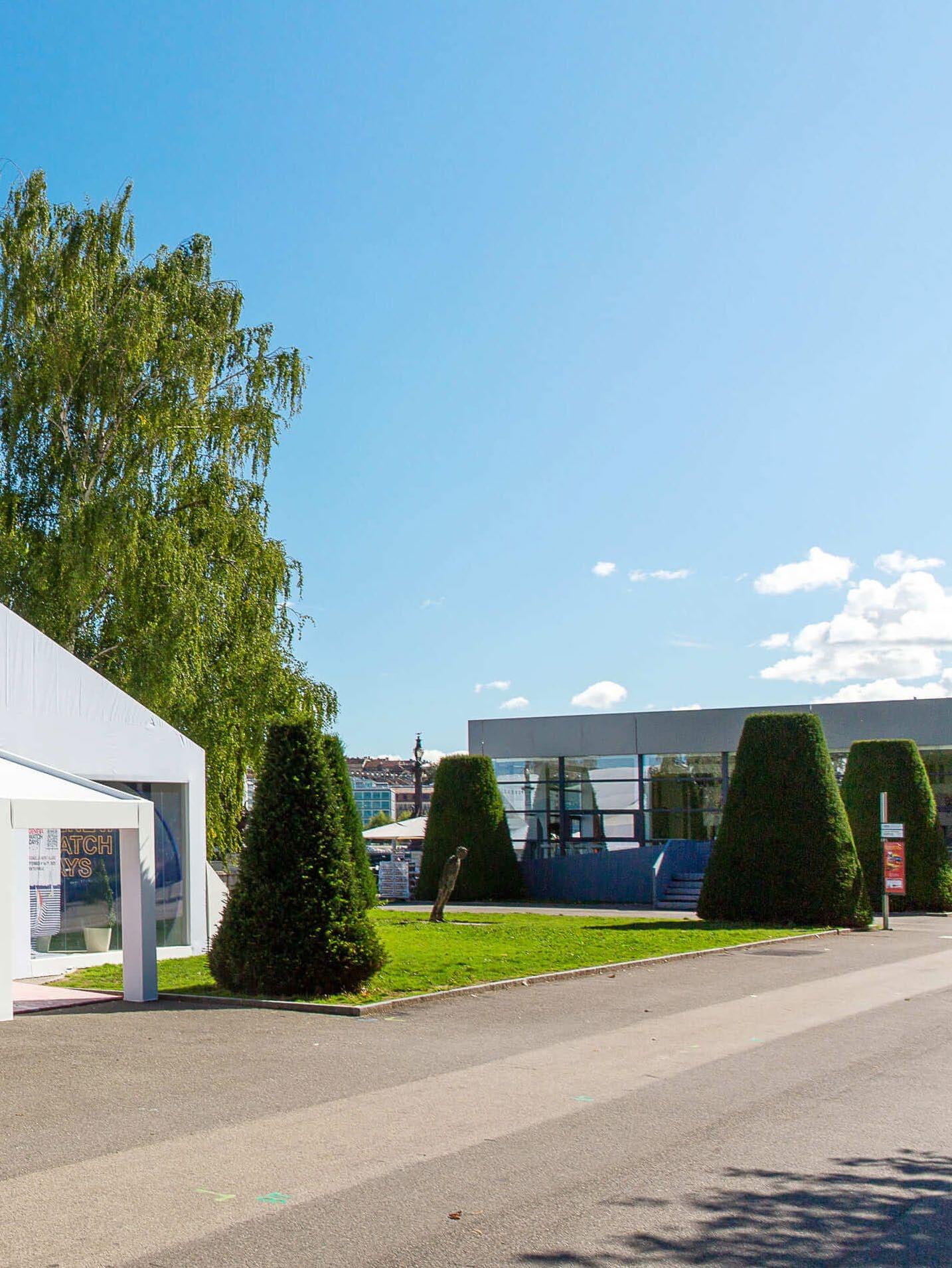
世界の主要な時計フェアが規模やコストの課題と向 き合い続けるなか、ジュネーブ・ウォッチ・デイズ (GWD)は静かに第6回を迎えた。2020年にパン デミックへの緊急対応として始まったこの催しは、今 や国際的な時計カレンダーに欠かせない存在へと成長 している。
従来の集中型フェアの硬直的な形式とは異なり、 GWDは分散化・開放性・包摂性を基盤とする。今年 は過去最多となる66ブランドが参加し、ジュネーブ 市街全体が展示の舞台となった。ホテルのスイートル ーム、メゾンの工房、フラッグシップ・ブティックが 即席の展示空間に変わり、それらを結ぶハブとして湖 畔のロトンド・デュ・モンブラン・パビリオンが機能 した。ここではパブリック・エキシビション、メディ ア発表、コレクターの集いが行われ、しかも毎日一般 公開・入場無料を貫いた。これは「透明性・アクセス 性・文化の共有」というGWDの理念そのものである。
時計と文化の交差点に焦点を当てるGEN DE ARTに とって、今回の体験は、GWDが単なる展示会を超え、 文化的フェスティバルとして成熟したことを確認する 機会となった。

In his opening remarks, Jean-Christophe Babin, CEO of Bulgari, recalled the origins of GWD. While the pandemic disrupted centralized fairs, decentralization—allowing brands to showcase in their own chosen spaces while uniting under one common week—proved not a temporary fix but a lasting strength.
This model offers three clear advantages:
•Flexibility: Each brand can craft its own presentation without being constrained by costly booths.
•Inclusivity: Fees are scaled by company size, enabling young or niche makers to share the same spotlight as global giants.
•Openness: With the Pavilion as a shared entrance, the public is not excluded but welcomed into the heart of the event.
The growth is undeniable:
•From 19 brands at its inception, the fair now hosts 67.
•The Pavilion presented around 150 timepieces, spanning household names to independents.
•Attendance included 700 journalists, 500 retailers, and 1,500 international collectors.
•Public visitors were expected to exceed 18,000 during the four-day fair.
As Patrick Pruniaux, CEO of Ulysse Nardin and GirardPerregaux, noted: “GWD is a living organism, evolving every year. Geneva is not only the capital of Swiss watchmaking—it has become a lighthouse for watch lovers worldwide.”

ブルガリCEOのジャン・クリストフ・ババンはオープニングで、GWDの原 点を振り返った。パンデミックは集中型フェアを中断させたが、「同じ週に、 ブランドが自ら選んだ空間で展示を行い、共通のハブでつなぐ」という分散 型モデルは一時的な代替ではなく、むしろ強みに変わったのだ。
このモデルは3つの利点をもたらす:
•柔軟性:ブランドは高額なブースに縛られず、自らのスタイルに合った方 法で展示できる。
•包摂性:参加費は企業規模に応じて設定され、若手やニッチなメーカーも 大手と同じ舞台に立てる。
•開放性:湖畔のパビリオンを共通の入口とすることで、一般の来場者が排 除されるのではなく、むしろ中心に迎え入れられる。
数字がこの成功を裏付ける:
•初回19ブランドから、今年は67ブランドに拡大。
•パビリオンには約150本の腕時計が展示され、大手から独立系まで幅広く 網羅。
•700人のジャーナリスト、500人の小売業者、1,500人の国際的コレクタ ーが参加。
•一般来場者は18,000人超が見込まれた。
ユリス・ナルダン/ジラール・ペルゴCEOのパトリック・プリュニオはこ う語った。 「GWDは生きた有機体であり、毎年進化を続けています。ジュ ネーブはもはやスイス時計の首都というだけでなく、世界の時計愛好家にと っての灯台となっています。」

What distinguishes GWD most clearly is not only the watches but the cultural and civic programming that surrounds them.
•Calibership Challenge: Forty nonprofessionals, guided by Geneva watchmaking schools, attempted to regulate Sellita movements to COSC standards—an exercise both playful and instructive.
•Culture Club: Organized with FHH, GPHG, and watchmaking schools, offering tours and lectures that foster intergenerational transmission of knowledge.
•Power Breakfasts: Morning debates on resilience, sustainability, and the
GWDの特徴は時計そのものだけではな い。市民と文化のためのプログラムが、 その魂を形作っている。
•Calibershipチャレンジ:非プロ40人 がセリタ製ムーブメントをCOSC規格に 合わせて調整する体験。教育的かつ遊び 心に満ちた試み。
•カルチャー・クラブ:FHH、GPHG、 時計学校と連携し、ツアーやレクチャー を実施。世代を超えた文化継承を促進。 •パワー・ブレックファスト:レジリエン
intersection of tourism and luxury watchmaking, broadening the conversation beyond pure horology.
•Charity Auction: Donations from brands raised funds for the Geneva Watchmaking School, securing resources for the next generation of artisans.
Through these initiatives, GWD becomes not just an industry gathering but a festival for the city. The Pavilion by the lake is more than an exhibition hall; it is a civic agora where culture, community, and commerce converge.
ス、サステナビリティ、高級観光と時計 業界の関係などをテーマにした朝の討論 会。
•チャリティ・オークション:ブランド提 供の作品を競売にかけ、ジュネーブ時計 学校の学生支援に充当。
こうした取り組みがGWDを、産業イベ ントであると同時に都市を巻き込むフェ スティバルへと変えている。湖畔のパビ リオンは展示空間であると同時に、社交 ・教育・体験の広場でもあるのだ。 公共性と文化性:都市を巻き込む祭典
業界分析:創造性・コスト・課題 創造性の集中 設立以来、GPHG受賞作の約35%をGWD参加ブランド が占めている。市場シェアに比べて驚異的な数字であり、GWDが独立 系の創造力を育む場であることを示している。 効率と持続可能性 2025年の運営費は約300万スイスフラン。伝統的フ ェアが数億単位を要するのに比べ、圧倒的に効率的である。この非営利 的モデルは、経済的な意味でもサステナビリティの要請に応えている。 グローバル政治と貿易障壁 記者会見では米国によるスイス時計への 39%関税が大きな議題となった。経営者や州政府関係者は懸念と慎重な 楽観を示し、ロビー活動や短時間勤務補助(RHT)などで雇用を守る方 策が進められている。これにより、GWDが地政学と無縁ではなく、む しろ国際市場の現実と密接に結びついていることが明らかになった。
Concentrated Creativity Since its inception, roughly 35% of GPHG award winners have been GWD brands—an extraordinary statistic given their modest share of global revenue. This highlights GWD’s role as an incubator for creativity, especially among independents.
Efficiency and Sustainability The 2025 edition operated on a budget of about CHF 3 million—a fraction of the hundreds of millions associated with traditional fairs. This lean, non-profit model aligns with the industry’s
GWD 2025
growing emphasis on sustainability, not only ecological but also financial.
Global Politics and Trade Barriers During the press Q&A, U.S. tariffs on Swiss watches—now raised to 39%—were a central concern. Executives and Geneva officials expressed both caution and determination, citing lobbying efforts and mechanisms such as reduced working hours (RHT) to protect jobs. The exchange underlined that GWD is not insulated from geopolitics but deeply connected to the realities of global trade.
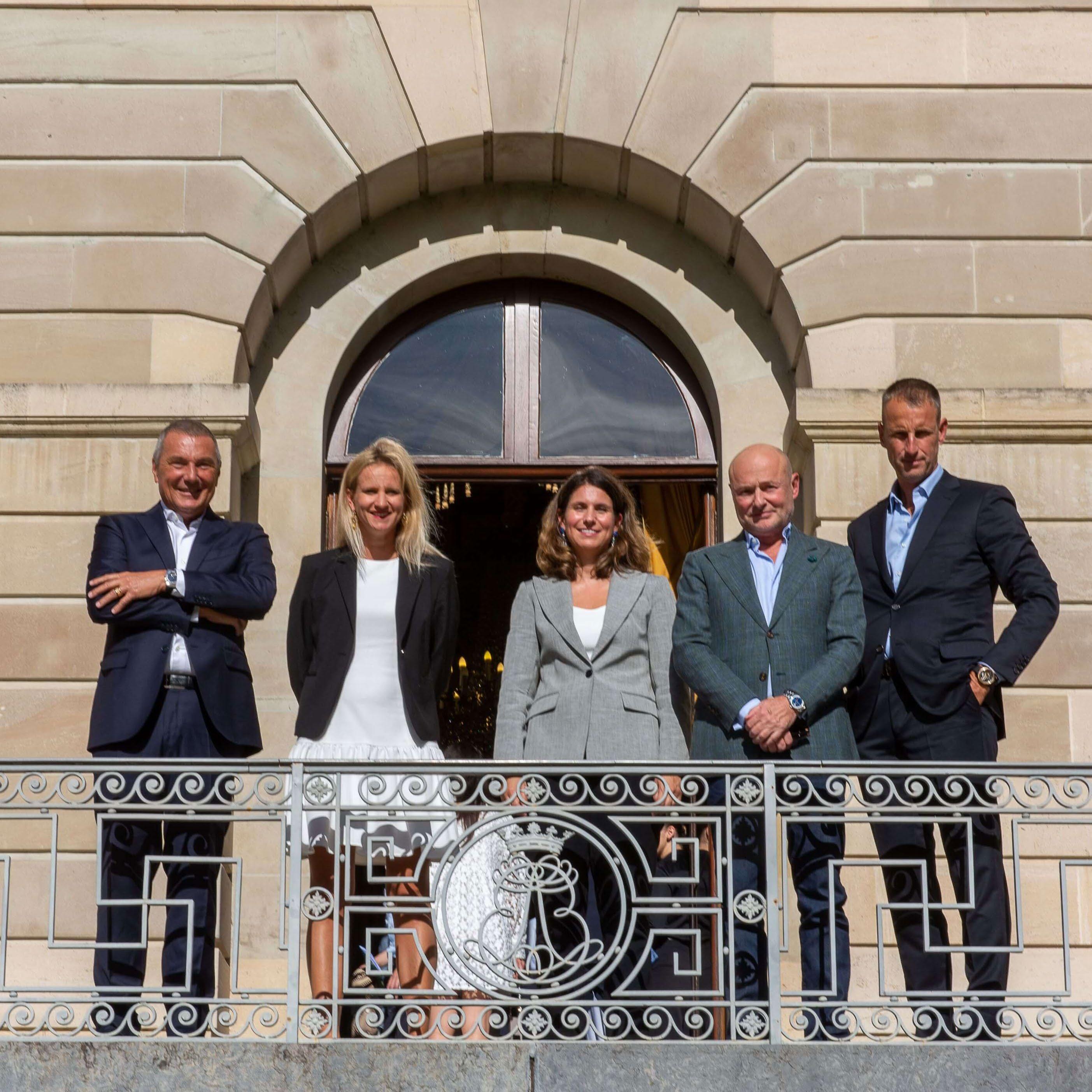
@ GWD 2025

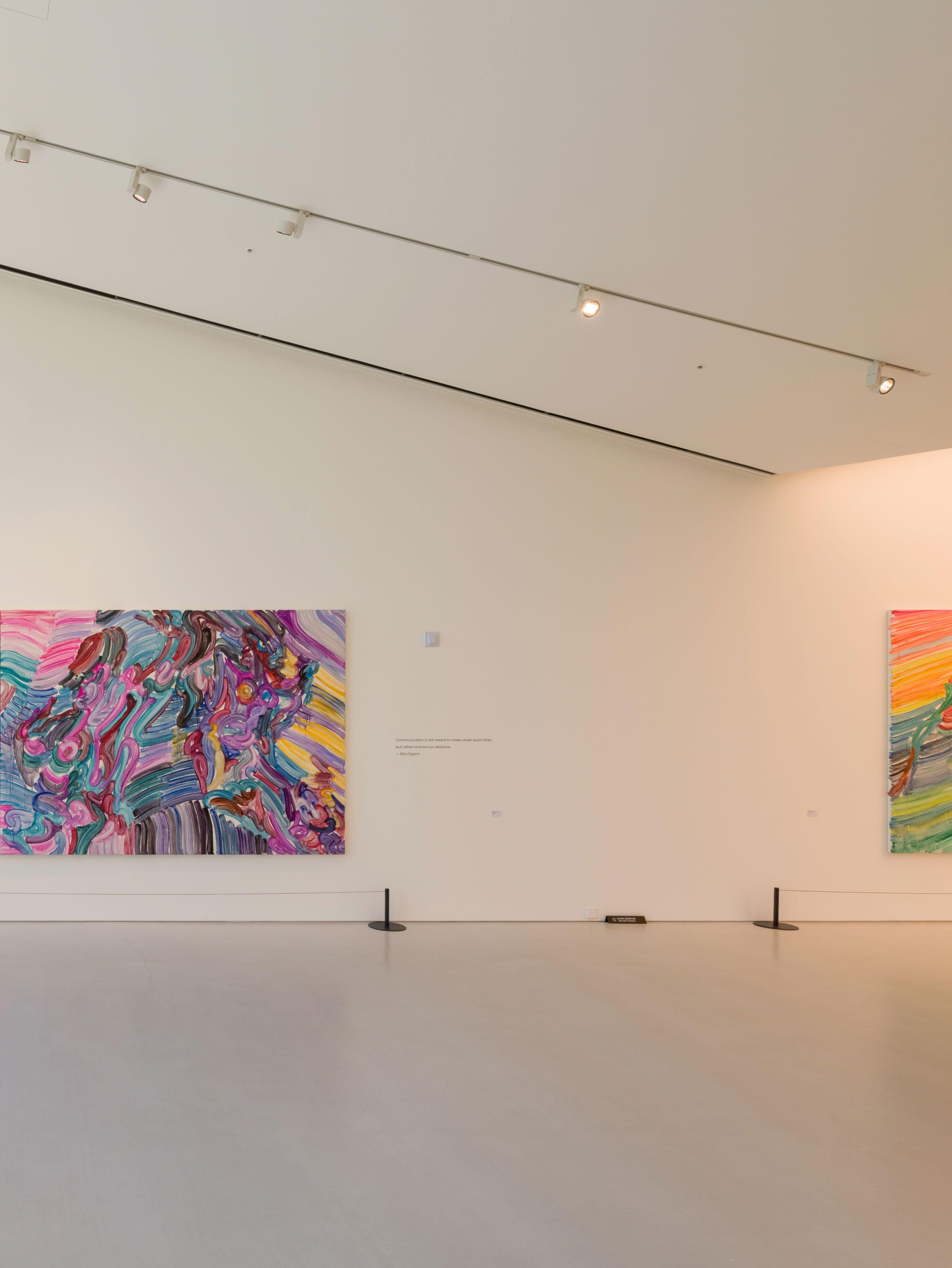

On April 8, 2025, a new art museum, the OAR Contemporary Art Museum, just opened in Gyeongju, South Korea. Gyeongju, South Korea, is the host city for APEC this year and has been attracting attention in recent years as the ancient capital of the Silla Kingdom, with UNESCO World Heritage sites. The museum's director, Kim Mun-ho, has been collecting art for many years and built the museum in Gyeongju with deep passion.
To commemorate the opening of the museum, we will be holding a solo exhibition by the world-renowned Japanese artist Etsu Egami, "Egami Etsu: Echoes of the Earth," from April 8 to September 21.
The exhibition will be academically supported by Stefanie Patruno, director of the State Museum of Art in Karlsruhe, Germany, which collects Egami Etsu's works.
As a representative artist of the third generation of postwar Japanese contemporary art, Egami explores the essence of communication by visualizing miscommunication such as misalignment, misvision, and mishearing, based on her own experiences abroad.
In 2021, she won the Forbes Asia 30 UNDER 30 award, as well as PRESTIGE Hong Kong's Artist to Watch 2024 and the best artist prize at Art Karlsruhe, Germany, and has received numerous awards, including a work purchased and permanently stored by the Karlsruhe
In 2024, her work was exhibited at the Miss Dior Exhibition held at the Roppongi Museum, and was added to DIOR's collection.
The new works created for the museum's opening exhibition explore themes ranging from miscommunication to human connections, physicality, dance, and music, and will allow visitors to encounter the artist's true essence.
Egami says, "Lines are not only connecting us but also dividing us. The essence of Oriental painting is lines. When miscommunication and lifelines take on rhythm, breathing, and physicality, I hear music. It becomes the resonance of the earth."
The exhibition will feature a dynamic exhibit including three largescale works measuring nearly 6 meters that embody the relationship between calligraphy and music that Egami felt, as well as portraits of international singers, and will introduce a number of colorful works that will immerse you in Egami's worldview.
The exhibition catalogue will also include texts by Mael Bellec, curator of the Musée Cernuschi in Paris, and Tatehata Akira, director of the Saitama Prefectural Museum of Modern Art.
2025年4月8日、韓国・慶州に新しい美術館OAR Contemporary Art Museumがオープンされます。韓国慶州市は今年APECの開催都 市になるなどユネスコ世界遺産があるなど新羅王国時代の古都として近 年注目されている都市です。美術館のキム・ムノ館長は長年美術コレク ションを続けており、深い情熱とともに慶州に美術館を建設しました。
この度4月8日~9月21日まで、美術館の開館記念展として世界的 に活躍している日本作家江上越の個展「江上越: 大地の響き」を開催 いたします。
また展覧会は江上越の作品をコレクションする美術館、ドイツ•カ ールスルーエ州立美術館館長ステファノ・パトリーノ氏 (Stefanie Patruno )が学術支持を担います。
江上越は日本戦後現代美術第三世代の代表的なアーティストとして、自 身が持つ海外での実体験を元に、ズレや誤視、誤聴などのミスコミュニ ケーションを可視化することによりコミュニケ―ションの本質を探り、 作品制作しています。
2021年に「Forbes Asia 30 UNDER 30」を受賞したほか、 PRESTIGE香港の「Artist to Watch 2024」、ドイツアートカールス ルーエの「The best artist prize」受賞、作品がカールスルーエ公立美
術館に買い上げ永久収蔵されるなど、数々の賞を受賞しています。ま た、2024年には六本木ミュージアムにて開催の「ミスディオール展覧 会」にて作品を展示、DIORに作品が収蔵されました。
本美術館での開館展に向けて制作された新作は、ミスコミュニケーショ ンから人と人のつながり、身体性、ダンス、音楽とテーマと展開し、作 家の真骨頂に出会うことができるでしょう。
江上は「線は隔てるものでもあり、つなぐものでもある。東洋絵画の真 髄は線である。ミスコミュニケーション、生命線がリズムや呼吸、身体 性を帯びた時に、音楽が聞こえてきた。それが大地の響きになっていく のです。」といいます。
展覧会では江上越が感じた書と音楽の関係性を体現できるような6m近 くの大作が3点展示されるなどダイナミックな展示をはじめ、国際的な 歌手たちのポートレート作品まで、江上の世界観に没入できる、色彩豊 かな作品を多数ご紹介いたします。
今回の個展図録には本展に向けて、パリ・セルヌスキ美術館学芸員マエ ル・べレック氏(Mael Bellec)、埼玉県立近代美術館館長建畠晢氏の 文章も掲載されます。

シュテファニー・パトゥルノ ドイツ・カールスルーエ美術館館長 江上の芸術的思考は、移動の旅に根ざしています。 戦後第三世代の日本人アーティストである彼女は、 日本、アメリカ、中国、ドイツを転々としながら育 ちました。音の誤り、歪み、そして「不具合」―― これらはすべてイメージの一部となります。江上に とって、理解できない瞬間は失敗ではなく、洞察へ の扉なのです。このアプローチを通して、江上は、 国籍や文化の枠にとらわれず、グローバルに繋がり を持つ新世代のアーティストの典型です。具象と抽 象を行き来する彼女の肖像は、デジタルの断片化、 メディアの過負荷、そして集団的孤立の間で崩壊し つつある世界を映し出す、彼女自身の自画像でもあ ります。江上はこれらの状況を理性的な視点から分 析するのではなく、感情的に解釈する。彼女の作品 は、生命力、不確実性、そして断片化が脈打つ、宙 に浮いた領域のようである。

Stephanie Patruno Director of the Staatliche Kunsthalle Karlsruhe, Germany
Egami’s artistic thinking is rooted in a biography of movement. As a third-generation postwar Japanese artist, she grew up between Japan, the USA, China, and Germany. With this approach, Egami exemplifies a new generation of globally connected artists who do not define themselves through national or cultural clarity. Her portraits – oscillating between figuration and abstraction – are also self-portraits of a dissolving world: between digital fragmentation, media overload, and collective isolation. Egami does not analyze these conditions intellectually, but translates them sensually. Her images are zones of suspension – pulsating with life, uncertainty, and fragmentariness.
建畠晢(多摩美術大学学長、草間彌生美術館館長) 真のコミュニケーションとは何かがそのまま伝わるとというこ とではない。画面のイメージは手段ではなく、それ自体が変化 し続けるもの、差異を生成させるものであり、その不確定性に 自ら向き合うことがこの画家 江上越 にとってのコミュニケーシ ョンの本質なのだ。
どこか透明感のあるその揺れ動く色彩の海を自らは“幻の虹色” というが、というが、たしかにその場に幻影のように出現する 色彩のありようは、フィギュールとして存在するというよりは 虹の比喩がふさわしいように思われるのだ。
幻の虹色、平行線、捻じれ、ずれ、律動・・・・。そう、その 不確定に揺れ動く豊穣な世界は、ポストコロナ禍におけるアー トとしても大いに瞠目されなければまるまい。

Akira Tatehata, President of Tama Art University and Director of the Yayoi Kusama Museum
True communication does not mean that something is conveyed exactly as it is. The image on the canvas is not a means, but something that is in itself constantly changing, generating differences, and for Egami, the essence of communication is to confront this uncertainty.
Etsu Egami calls this sea of swaying, somewhat transparent colors a "phantom rainbow," and indeed the way the colors appear in the space like illusions seems more appropriate to the metaphor of a rainbow than to exist as figurines.
Phantom rainbow colors, parallel lines, twists, shifts, rhythms...Yes, this rich world of uncertainty and swaying is sure to be a marvel to behold as art in the post-COVID era.

In Vosne-Romanée, a village whose very name evokes the essence of Burgundy’s wine heritage, Le Richebourg Hôtel presents itself as a sanctuary of modern refinement. Surrounded by vineyards that produce some of the rarest and most coveted wines in the world, the hotel embodies a dialogue between tradition and innovation, offering guests a deeply immersive experience of Burgundy’s culture and lifestyle.
Le Richebourg H ô tel Restaurant & Spa is not ostentatious; its elegance lies in understatement. The hotel’s 31 rooms are crafted with meticulous attention to atmosphere— soft natural light, balanced proportions, and warm textures that invite calm. Terraces open towards landscapes that shift with the seasons, creating an intimate connection to the vines beyond. It is a place where design and setting coexist, where modern hospitality pays homage to the region’s timeless character.
Here, comfort is layered rather than imposed. Fine linens, discreet technology, and thoughtfully designed spaces allow guests to rest and reflect. The interiors whisper refinement rather than proclaim it, offering a kind of luxury that lingers subtly, like the aftertaste of a grand cru.
控えめな贅沢、続いてゆく心地よさ
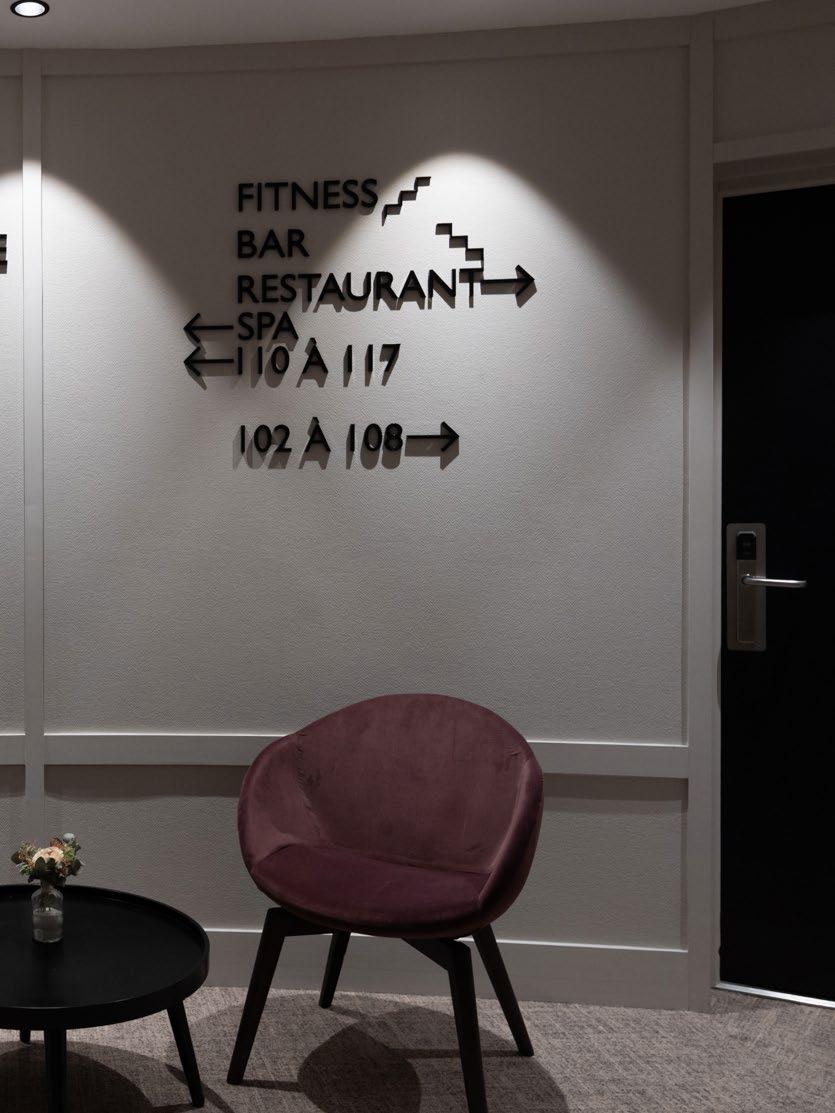
ヴォーヌ=ロマネ。その名を 聞けば、ブルゴーニュを代表 する偉大な畑の数々が思い浮 かぶでしょう。世界で最も希 少で愛されるワインを生む土 地に佇む「ル リシュブール ホ テル レストラン&スパ 」は、 伝統と革新の対話を体現する 洗練の空間です。ここでは、 ブルゴーニュの文化やライフ スタイルを全身で味わうこと ができます。
このホテルの魅力は華美さではなく、繊細な気配り にあります。全31室の客室は、自然光と温もりあ る素材が調和し、静けさに満ちた空気を纏います。 窓やテラスの向こうには、季節ごとに表情を変える 葡萄畑が広がり、滞在そのものが土地とつながる体 験へと変わります。
贅沢は決して押し付けがましくなく、重ねられた心 地よさの中に宿ります。上質なリネン、控えめな最 新設備、整えられた空間は、過剰な演出ではなく、 静かな余韻を残します。それはまるで偉大なワイン の余韻のように、深く心に染み入るのです。
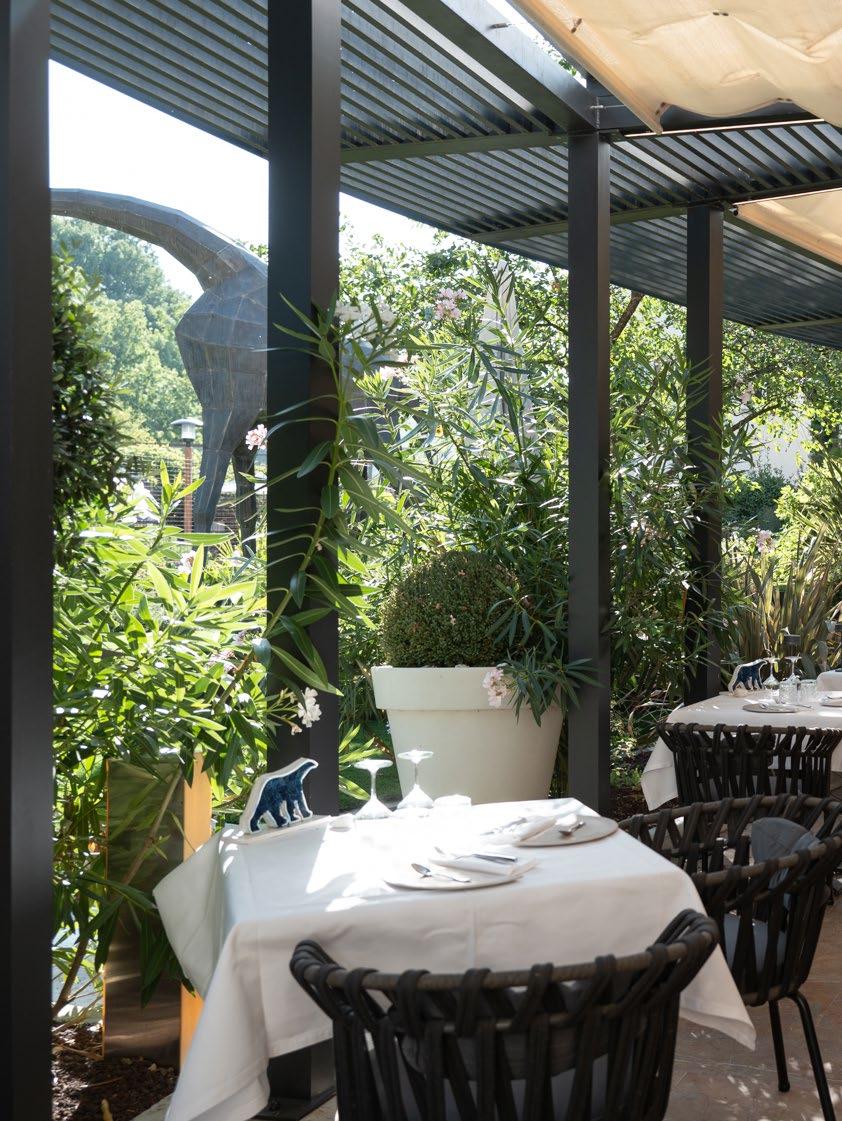

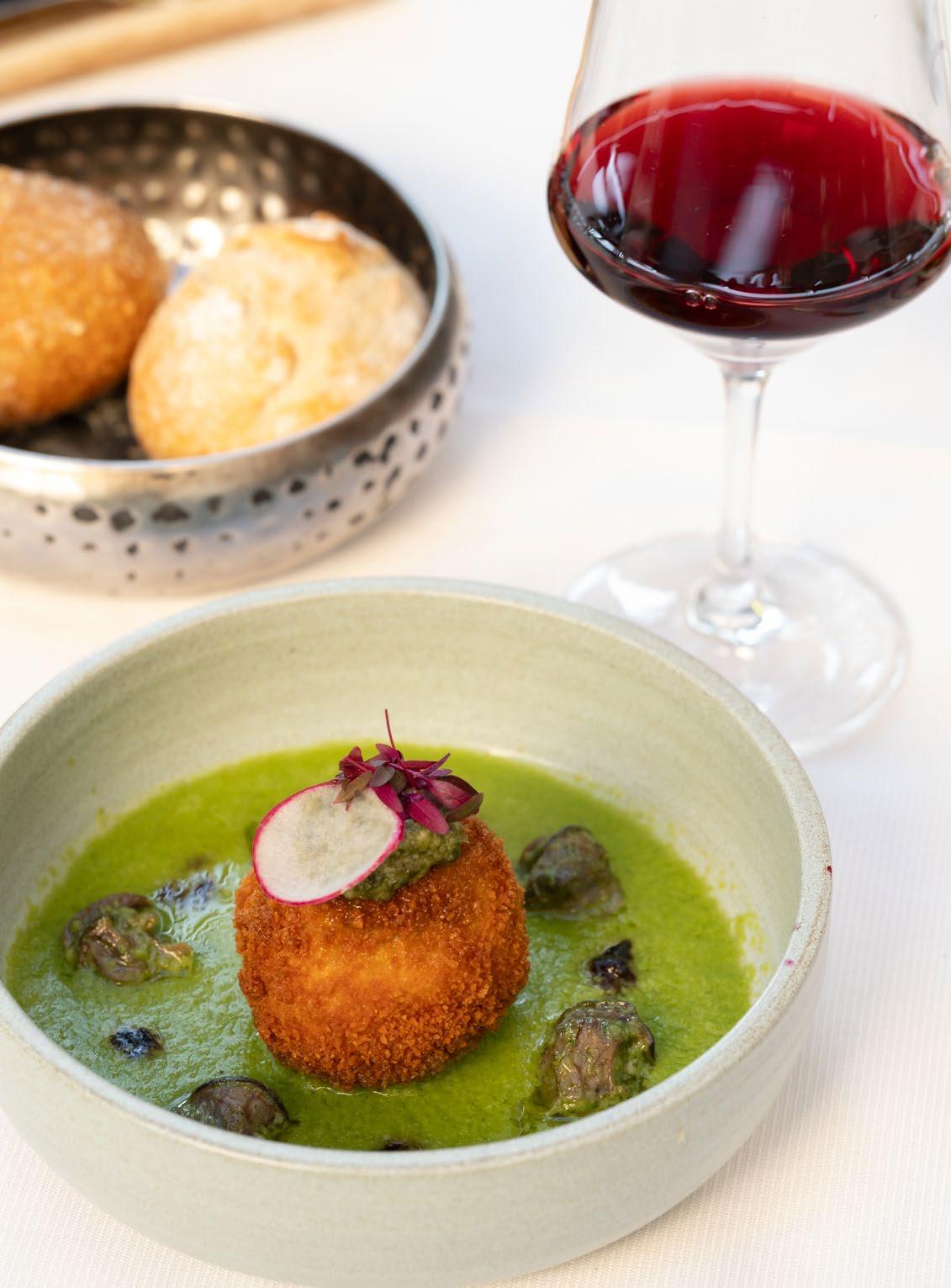
Central to the experience is Restaurant, where Burgundy’s traditions meet a contemporary culinary vision. The kitchen celebrates local producers, with menus that mirror the rhythm of the seasons. A single plate may highlight the earthy richness of regional mushrooms, or the delicate sweetness of summer berries, always accompanied by wines that elevate and expand the flavors. The cellar, naturally, is extraordinary: treasures from Vosne-Romanée stand alongside carefully selected vintages from across the Côte d’Or. Dining here is not simply nourishment—it is a narrative of place, told through taste.
Equally important is vineaSpa, the hotel’s temple of renewal. Treatments inspired by vinotherapy connect the body to the vineyard, drawing on the antioxidant power of the grape to restore balance. A serene pool, hammam, and relaxation lounges complete the experience. Guests may drift from exploration to repose, their senses attuned to Burgundy’s quiet rhythm. The spa is not an escape from Burgundy, but rather another way to enter into its essence.
館内の中心となるのは、レス トラン。ブルゴーニュの豊か な食材を活かし、四季折々の 恵みを料理へと昇華させま す。土の香りを感じる茸や、 夏の果実の瑞々しさ。それら はヴォーヌ=ロマネのワイン と共に、土地そのものの物語 を語ります。セラーには銘醸 ワインの宝庫が並び、食事は 単なる一皿を超え、ブルゴー ニュの魂に触れる体験となり ます。
同じく欠かせないのがスパ 「ヴィネアスパ」です。葡萄 の恵みを取り入れたヴィノセ ラピーは、身体と大地を結び つけるひととき。プールやハ マム、リラクゼーションラウ ンジで心を解き放ち、ブルゴ ーニュの静かな鼓動に身を委 ねることができます。ここで の癒しは現実からの逃避では なく、この土地への深い没入 なのです。

What makes Le Richebourg Hôtel Restaurant & Spa exceptional is its position at the threshold of Burgundy’s most hallowed terroirs. Just steps away are vineyards such as La Romanée, Richebourg, and La Tâche—names that resonate like poetry among wine lovers. The hotel offers curated tastings and private visits, allowing guests to walk among the vines and feel the continuity of centuries-old tradition.
And yet, the hotel is not merely a base for exploration—it is a destination in its own right. The blend of refined hospitality, gastronomy, and cultural immersion leaves an impression as enduring as a legendary vintage.
At Le Richebourg Hôtel Restaurant & Spa, Burgundy is not simply observed; it is lived, savored, and remembered long after departure.

Photo by Taisuke Yoshida

ラ・ロマネ、リシュブール、ラ・ターシュ。世界最高峰 の畑がすぐそばに広がり、特別なテイスティングや見学 を通して、数世紀にわたり受け継がれてきたテロワール の物語に触れることができます。
それでもル リシュブール ホテル レストラン&スパ は、 単なる滞在の拠点にとどまりません。洗練されたおもて なし、美食、文化が響き合うこの場所そのものが、熟成 されたワインのように長く記憶に残る体験を紡ぎます。 ここではブルゴーニュは「観る」ものではなく、「生き、 味わい、心に刻む」ものとして存在しているのです。
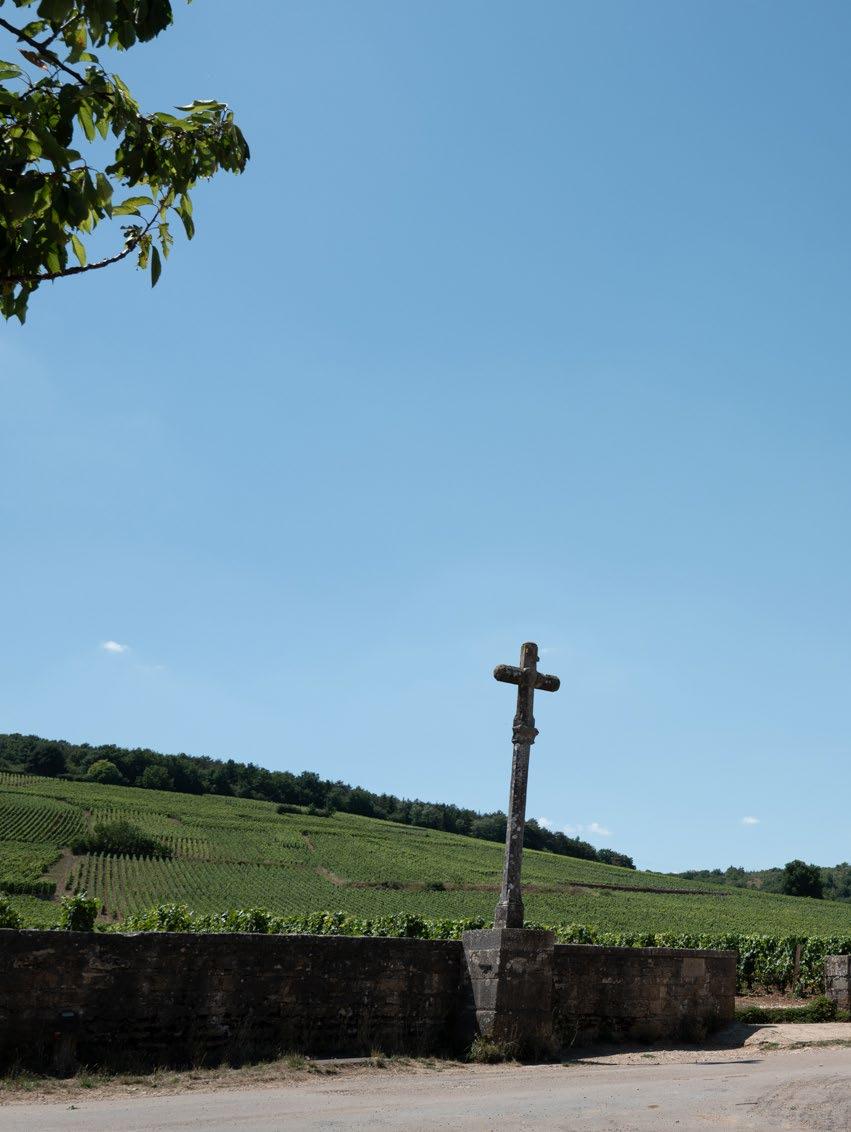
In late 2025, the village of Vosne-Romanée—home to Burgundy’s most celebrated vineyards—will welcome a new cultural landmark: the Vosne-Romanée Culture and Art Center (VRCAC). Conceived from the desire to weave together land, memory, and creation, VRCAC embodies the belief that culture, like wine, is rooted in soil, tradition, and the lived experience of place. It is not static, but a living presence that evolves as it is shared.
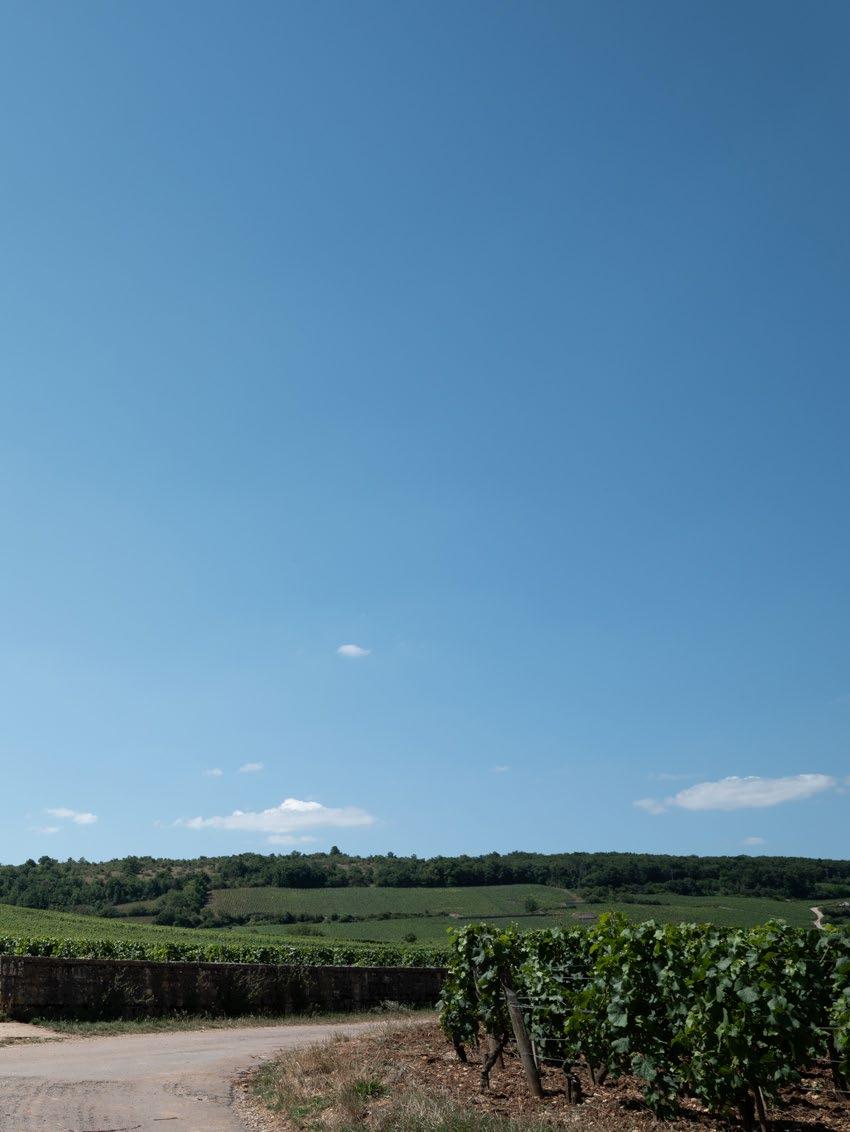
2025年、ブルゴーニュを代表 する名醸村ヴォーヌ・ロマネ に、新たな文化拠点「ヴォー ヌ・ロマネ文化芸術センター (VRCAC)」が誕生する。こ の施設は単なる展示空間ではな く、大地と記憶、芸術と風土を 結ぶ象徴的な「門口」として構 想されたものである。

The VRCAC was founded by Olivia Matsumoto, a cultural editor and curator active between Japan and Europe. Formerly editor-in-chief of the international art magazine 《GEN DE ART》, she has long explored the intersections of contemporary art and wine culture. Through years of engagement with Burgundy, she cultivated a vision: to use art as a medium to rewrite the narrative of terroir.
The center is located in the former home of Lucien Jayer, brother of the legendary winemaker Henri Jayer. Once a place of daily viticultural life, this site is now revitalized as a space where art infuses the land with renewed cultural vitality.
In Burgundy, terroir and climat signify more than soil and climate—they encompass centuries of human choices, labor, and wisdom. Each vineyard parcel is a named cultural unit, a site of both agricultural practice and collective memory.
The VRCAC treats art as another form of terroir’s expression. Whether through sculptures carved from vine roots or light installations shifting with the seasons, artworks here resonate with the soil and its cultural echoes. These creations are not isolated gestures, but responses born from Vosne-Romanée itself.
風土の再解釈
VRCACは、日欧を舞台に活動する文化 編集者・キュレーターである松本オリビ ア氏によって設立された。国際芸術誌 『GEN DE ART』の元編集長として、 現代芸術とワイン文化の交差に取り組 んできた彼女は、ブルゴーニュとの交流 を通じて「芸術を媒介に風土の物語を新 たに描き直す」という構想を育んでき た。
センターは、伝説的醸造家アンリ・ジャ イエの兄リュシアン・ジャイエの旧宅を 拠点とする。かつて日常のワイン造りを 担ったその場所は、芸術の力によって新 たな文化的生命を宿すのである。
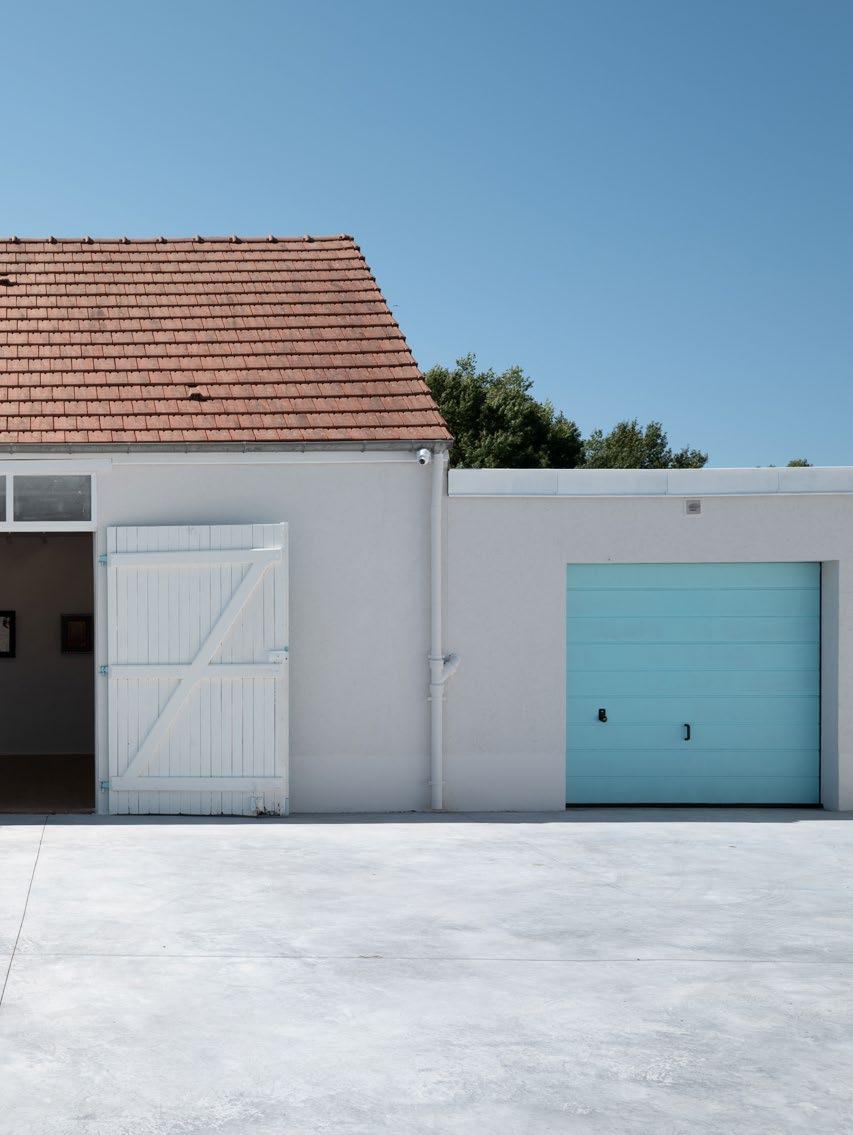
ブルゴーニュにおいて「テロワー ル」や「クリマ」は、単なる土壌や 気候条件を超え、数世紀にわたる 人々の営みと知恵を映す。畑ひとつ ひとつは名前を持ち、農作業の場で あると同時に記憶の器である。
VRCACは芸術を風土のもうひとつ の表現と見なす。葡萄の根を素材に した彫刻や、四季の光と影に呼応す るインスタレーションは、土地と文 化の記憶を響かせる応答である。こ れらは孤立した作品ではなく、ヴォ ーヌ・ロマネの土壌から生まれた創 造なのである。
The VRCAC will launch an artist-inresidence program, welcoming creators and thinkers from France, Japan, and beyond to engage with the terroir through site-specific projects and research. Exhibitions centered on “the memory of the land” will explore how elements such as vines, stone walls, and shifting light can be reborn through art.
This is not a fast-paced, consumable attraction but a cultural locus that demands pause and listening. In a time of climate disruption, the center regards “sustainability” as a fundamental mission rather than a passing slogan. From the wisdom of medieval monasteries to the innovations of biodynamic viticulture, artists and winemakers will share knowledge and imagination within its walls.
VRCACは「アーティスト・イン・レ ジデンス」を展開し、フランス、日本、 そして世界各地の芸術家や思想家を招 き、風土を主題とした創作や研究を推 進する。また「土地の記憶」を核とす る展示では、葡萄の樹や石垣、光の変 化が芸術として再生する契機を探る。
ここは消費的な観光地ではなく、立ち 止まり耳を澄ますことを促す文化的結 節点である。気候変動の時代におい て、VRCACは「持続可能性」を根本 使命とし、中世修道院の知恵から現代 ビオディナミの実践に至るまで、芸術 家と醸造家が経験と想像力を共有する 場を志向する。

Vosne-Romanée was chosen not only for its prestige but also for its symbolism. Burgundy is a cultural palimpsest: abbeys and hospices stand beside vineyards, reminders that beauty and labor have long been entwined. VRCAC aims to weave contemporary art into this landscape—through land art that changes with the seasons, ephemeral works echoing the fleeting nature of vintage, and creations inspired by the colors, scents, and sounds of winemaking itself.
ヴォーヌ=ロマネは単なるワイン産地 ではなく、象徴的意味を持つ場所でも あります。修道院やホスピスと葡萄 畑が共存する景観は、美と労働が長 く結び付いてきたことを物語ります。
VRCACはこの文脈に現代芸術を織り 込みたいと考えています。季節ととも に変化するランドアート、ヴィンテー ジの儚さを映す作品、葡萄や発酵の香 り・音を用いた表現などを構想してい ます。

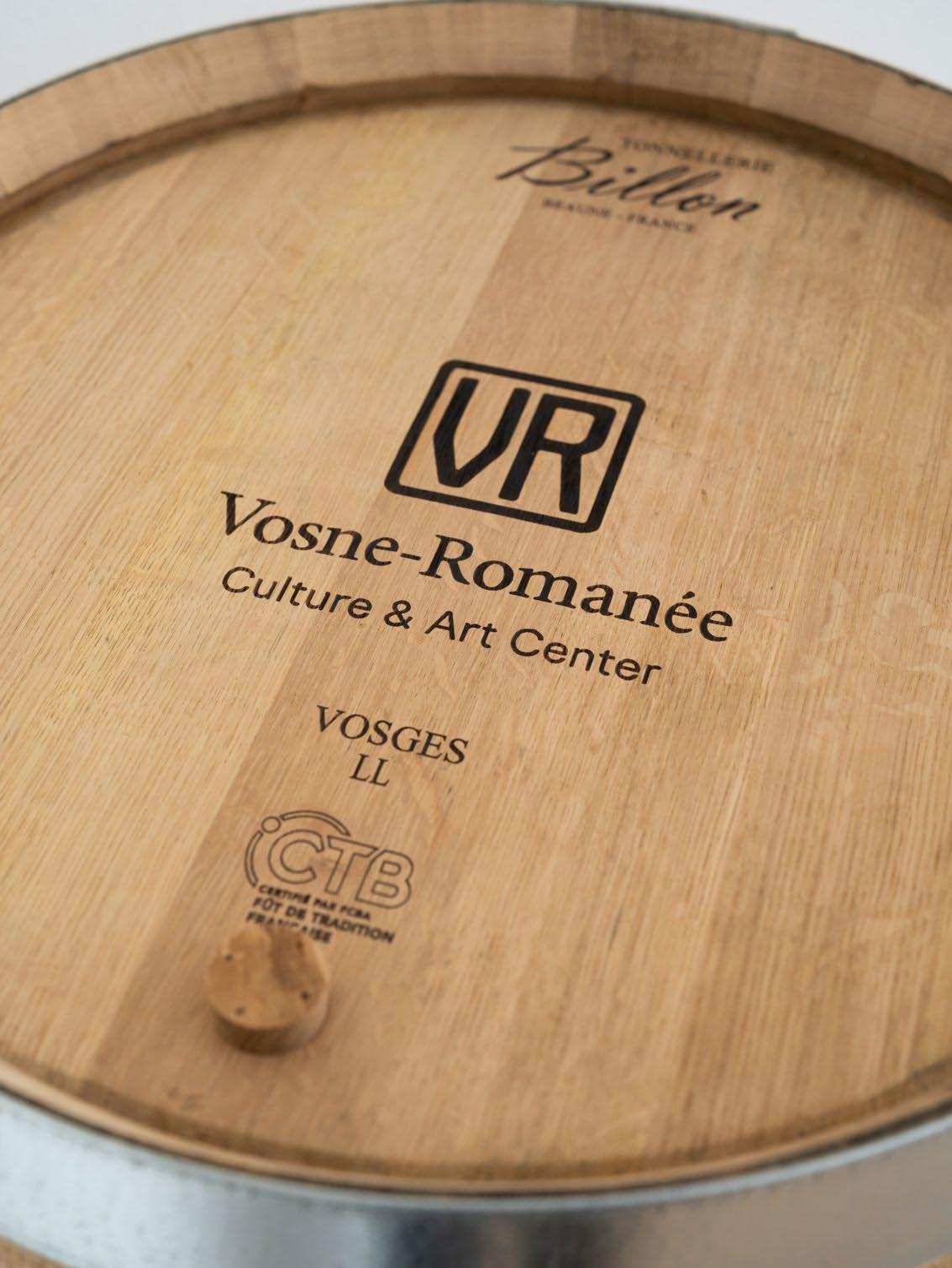
Oak barrels donated by Tonnellerie Billon, recipient of the Meilleurs Ouvriers de France distinction.
フランス最優秀職人章(M・O・F)を受章した トネルリー・ビロン(Tonnellerie Billon)より 寄贈されたオーク樽。
Led by a team that moves fluidly between Japan and Europe, the VRCAC embodies a dialogue between two cultural sensibilities.
In exhibition design, it emphasizes stillness and the aesthetics of space, echoing Japanese notions of ma (interval), while retaining the grounded presence of Burgundy’s stone houses and vineyards.The aim is not to layer symbols, but to cultivate a subtle and enduring encounter.
VRCACのチームは日欧を往来し、その企画には二つの文化的感性が交錯する。展 示設計では「静」と「間」を重視し、東洋的美学のリズムを響かせながら、ブル ゴーニュの石造家屋と葡萄畑の在地性を残す。ここで試みられるのは単なる文化 の重ね合わせではなく、緩やかで深遠な出会いである。
開幕前から日本とヨーロッパの文化界で注目を集めており、2025年夏には日本の 高級誌『Richesse』編集長・十河ひろ美がVRCACを取材し、風土と芸術の融合 をめぐる可能性を特集した。この動向は、アジアとヨーロッパ、伝統と未来を結 ぶ文化拠点としての役割を示している。
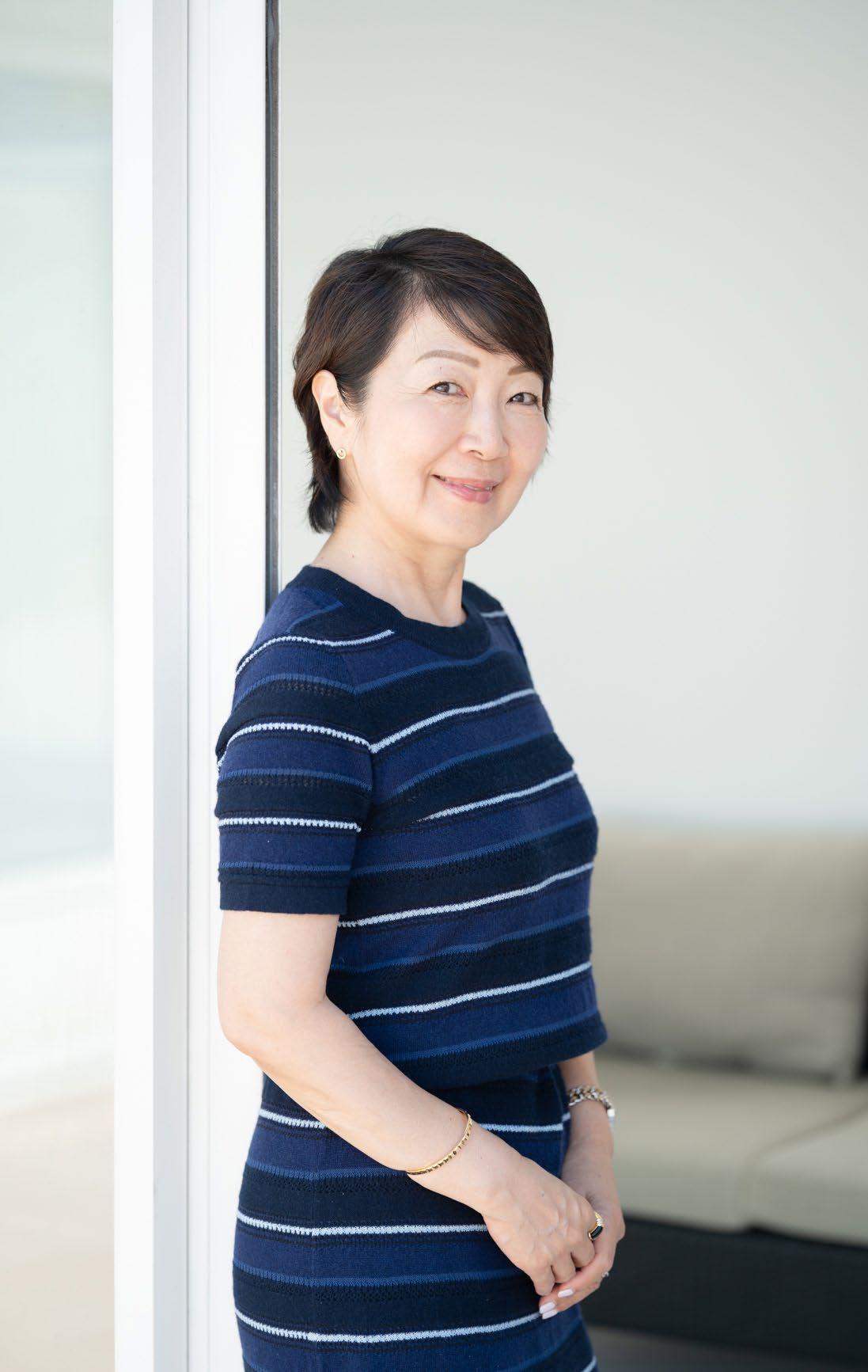
Even before its opening, the VRCAC has drawn attention from cultural circles in both Japan and Europe. This summer, Hiromi Sogo, editor-in-chief of the luxury Japanese magazine ”Richesse“, visited Vosne-Romanée for a feature interview, exploring new possibilities at the intersection of terroir and art. The visit signals the center’s growing role as a cultural bridge linking Asia and Europe, tradition and future. 結語─施設ではなく「門口」として
The VRCAC does not position itself as a conventional cultural facility, but as a “threshold”: an entryway into the deeper layers of Burgundy.
Just as vineyards require time, patience, and collaboration, so too does culture depend on memory and care. Visitors are invited to slow their pace, to listen deeply, to draw inspiration from the terroir, and to weave their own stories into its long narrative.
On this UNESCO-listed land, the VRCAC does not merely display culture—it participates in it, records it, and helps create it. It is a “slow cultural node,” a place where memory breathes, where art takes root, and where pathways are left open for the guardians of the future.
VRCACは従来型の文化施設ではなく、 ブルゴーニュの深層へと至る「門口」と して自らを位置づける。葡萄畑が時間と 忍耐、協働を必要とするように、文化も また記憶と愛情によって育まれる。訪れ る者は歩みを緩め、耳を澄ませ、風土か ら霊感を受け取り、この土地の物語に自 身の記憶を織り込むのである。
ユネスコ世界遺産に登録されたこの風土 において、VRCACは文化を「展示する」 のではなく、「共に生き、記録し、創造 する」存在である。それは「緩やかな文 化の結節点」として、記憶に息吹を与え、 芸術を根づかせ、未来の守り手へと道を 託す拠点なのである。
AMBASSADE
DE FRANCE
AU JAPON




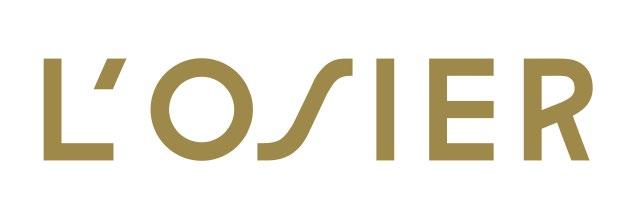






2025.09.20発行 ISBN978-4-911242-09 -4 ISSN 2435-1962
Printed in Japan
創刊者
源之玄
発行元
編集長 ダニエル
副編集長
福澤
Founder Gen no gen
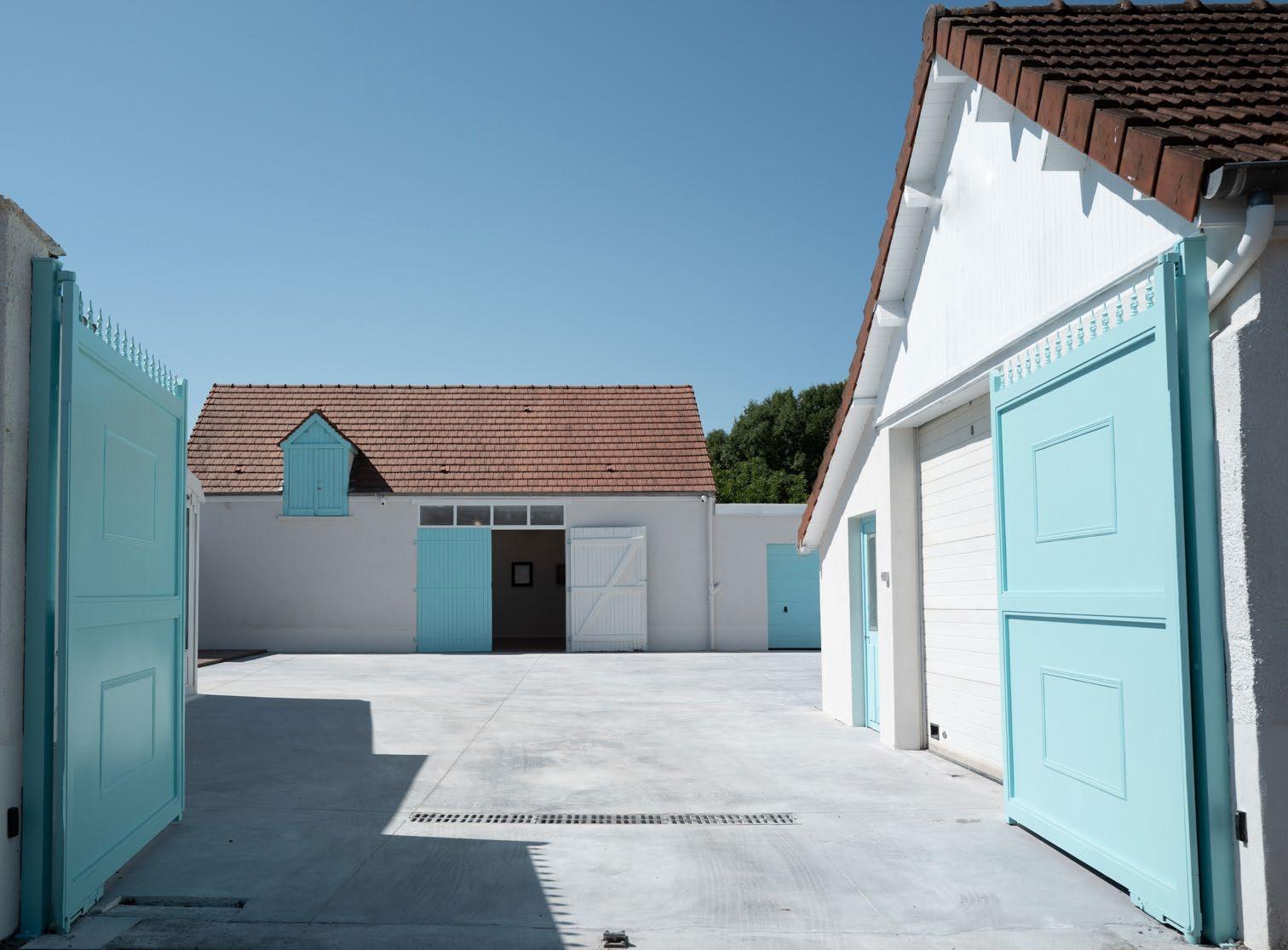
Vosne-Romanée Culture & Art Center COMING SOON...
テキスト・エディター
翻訳者
小林 芳友 本田 圭
制作責任者
デジタル責任者 サイラス
写真提供者
Publisher Tokyo Fine Wines and Spirits Association
Editor in Chief
Daniel
Deputy Editor
Shizuka Fukuzawa
Kari Yoshida
Design Director Kary
Marketing Director
Yuichi Ito
Executive Director Herliser
Text Editor
Yui Touma
Tetsuya Enokizono
Maria Kornienko
Translators
Yoshitomo Kobayashi
Kei Honda
Art Officer Polly
Production Officer Renna
Digital Officer
Cyrus
Contributing Photographers
Julien Dupont
Matthieu Blanchard
Kaito Fujimoto
海外事業担当ディレクター
Overseas Business Development Director
Isabelle Girard
Creative Director
Céline Rousseau
Assistant of Editor in Chief
Ibuki Murakami
Shizuka Nakamura
Assistant
Yui Nakamura Aoi Suzuki
Intern Journalist
Kei Yoshitomo Reiko Sato Alexander Reed Emily Thompson
Noah Morgan
